Hero's Journey
Ever notice that every blockbuster movie has the same fundamental pieces? A hero, a journey, some conflicts to muck it all up, a reward, and the hero returning home and everybody applauding his or her swag? Yeah, scholar Joseph Campbell noticed first—in 1949. He wrote The Hero with a Thousand Faces , in which he outlined the 17 stages of a mythological hero's journey.
About half a century later, Christopher Vogler condensed those stages down to 12 in an attempt to show Hollywood how every story ever written should—and, uh, does—follow Campbell's pattern. We're working with those 12 stages, so take a look. (P.S. Want more? We have an entire Online Course devoted to the hero's journey.)

Ordinary World
Before his quest, Carl’s just your average, everyday hermit. Retired and widowed, he lives alone and spends his days inside his house, watching TV with the shades drawn and waiting for the mail to arrive. He’s lonely and stuck in a disgruntled, antisocial rut.
Call To Adventure
Carl’s initial call to action comes in the form of the construction project going on all around his house. The head of the construction company wants Carl to move, which would mean leaving his house, which is essentially a shrine to his late wife, Ellie, and trying something new.
Refusal Of The Call
Carl repeatedly clashes with the construction company, and tells them they can have his house…when he’s dead.
Meeting The Mentor
Russell shows up on Carl’s front porch, wanting to help Carl with just about anything in order to earn his Assisting the Elderly badge. Carl doesn’t know it yet, but young Russell’s going to rock his world—you know, once he finishes the snipe hunt Carl sends him on just to get the bubbly kid out of his hair.
Crossing The Threshold
Faced with the prospect of moving to Shady Oaks, Carl outfits his house with millions of helium balloons and takes to the sky, setting his journey in motion. Once he and his home lift off, there’s no turning back.
Tests, Allies, Enemies
Carl’s first challenge is dealing with Russell, who accidentally stows away onboard Carl’s floating abode. Carl begrudgingly accepts him as an ally, and then the unlikely duo faces its first real test: piloting Carl’s house through a wicked thunderstorm.
Once they land in South America, their quest for Paradise Falls is loaded with even more obstacles and enemies. For starters, they have to drag Carl’s house to Paradise Falls before its balloons are totally zapped of their helium. Along the way, they pick up two more allies that Carl initially views as enemies, or at least major pains in the butt: Kevin and Dug.
And then there’s Muntz’s dog pack. There’s no confusion about these conniving canines: they’re enemies from the start, as they pursue, and ultimately capture, Carl and his crew.
Approach To The Inmost Cave
After Muntz realizes that Carl and Russell are just an old man and a roly-poly kid, he invites them to dinner onboard his opulent airship as his guests. Carl quickly recognizes that Muntz has gone bonkers and will stop at nothing to capture Kevin; he and Russell need to get out of there ASAP. The dog pack may have been dangerous, but their master, Muntz, is the real threat: not just to Carl’s mission, but also to his life.
When Carl, Russell, Dug, and Kevin run away from Muntz, the fallen explorer’s dog pack is hot on their trail. Carl and his posse outrun the dogs, only to have Muntz himself track them down, capture Kevin, and set Carl’s beloved house on fire. Still, Carl and Russell survive. Sometimes it pays not to be a giant, exotic bird.
Reward (Seizing The Sword)
With Muntz out of his hair, Carl and his house finally reach Paradise Falls, but the victory is hollow. Muntz has Kevin in his clutches, and Russell feels Carl let them down. When Russell heads back to Muntz’s airship on a solo mission to save Kevin, Carl has a change of heart, realizing that his real mission is to keep his new pals safe.
The Road Back
Carl’s road back is literally the road back into the mouth of Muntz’s madness. It’s the reverse of his initial call to adventure: back then, Carl drove Russell away by sending him on a snipe hunt. Now, Carl’s actively pursuing Russell. He lugs all of his and Ellie’s belongings out of the house so it’s light enough to fly again, and takes off for Muntz’s airship, his sights set on saving Russell.
Resurrection
Carl is reborn as a geriatric action hero in his final, most dangerous battle with Muntz on Muntz’s airship. Carl puts his life on the line to save his friends; if he fails, the consequences would be huge. Ultimately, he rescues Russell, Kevin, and Dug, and sends Muntz plunging to his death. Peace out, Chuck.
Return With The Elixir
Carl returns to the States a changed man. Most notably, he picks up a surrogate son—and a dog! More importantly, he breaks out of his rut. He recognizes that his whole life has been an adventure, learns that everything from trekking in the jungle to chowing down on ice cream is better with friends, and harnesses the awesome power of his own heart.
Tired of ads?
Logging out…, logging out....
You've been inactive for a while, logging you out in a few seconds...
W hy's T his F unny?
- Mental Health
Want to Give Your Life More Meaning? Think of It As a ‘Hero’s Journey’

Y ou might not think you have much in common with Luke Skywalker, Harry Potter, or Katniss Everdeen. But imagining yourself as the main character of a heroic adventure could help you achieve a more meaningful life.
Research published earlier this year in the Journal of Personality and Social Psychology touts the benefits of reframing your life as a Hero’s Journey—a common story structure popularized by the mythologist Joseph Campbell that provides a template for ancient myths and recent blockbusters. In his 1949 book The Hero with a Thousand Faces , Campbell details the structure of the journey, which he describes as a monomyth. In its most elementary form, a hero goes on an adventure, emerges victorious from a defining crisis, and then returns home changed for the better.
“The idea is that there’s a hero of some sort who experiences a change of setting, which could mean being sent off to a magical realm or entering a new thing they’re not used to,” says study author Benjamin A. Rogers, an assistant professor of management and organization at Boston College. “That sets them off on a quest where they encounter friends and mentors, face challenges, and return home to benefit their community with what they’ve learned.”
According to Rogers’ findings, perceiving your life as a Hero’s Journey is associated with psychological benefits such as enhanced well-being, greater life satisfaction, feeling like you’re flourishing, and reduced depression. “The way that people tell their life story shapes how meaningful their lives feel,” he says. “And you don’t have to live a super heroic life or be a person of adventure—virtually anyone can rewrite their story as a Hero’s Journey.”
More From TIME
The human brain is wired for stories, Rogers notes, and we respond to them in powerful ways. Previous research suggests that by the time we’re in our early 20s, most of us have constructed a narrative identity—an internalized and evolving life story—that explains how we became the person we are, and where our life might go in the future. “This is how we've been communicating and understanding ourselves for thousands of years,” he says. Rogers’ research suggests that if people view their own story as following a Hero’s Journey trajectory, it increases meaning regardless of how they initially perceived their lives; even those who thought their lives had little meaning are able to benefit.
While Rogers describes a “re-storying intervention” in his research, some psychologists have used the Hero’s Journey structure as part of their practice for years. Lou Ursa, a licensed psychotherapist in California, attended Pacifica Graduate Institute, which is the only doctoral program in the country focused on mythology. The university even, she notes, houses Campbell’s personal library. As a result, mythology was heavily integrated into her psychology grad program. In addition to reflecting on what the Hero’s Journey means to her personally, she often brings it up with clients. “The way I talk about it is almost like an eagle-eye view versus a snake-eye view of our lives,” she says. “So often we’re just seeing what’s in front of us. I think that connecting with a myth or a story, whether it’s the Hero’s Journey or something else, can help us see the whole picture, especially when we’re feeling lost or stuck.”
As Rogers’ research suggests, changing the way you think about the events of your life can help you move toward a more positive attitude. With that in mind, we asked experts how to start reframing your life story as a Hero’s Journey.
Practice reflective journaling
Campbell described more than a dozen key elements of a Hero’s Journey, seven of which Rogers explored in his research: protagonist, shift, quest, allies, challenge, transformation, and legacy. He says reflecting on these aspects of your story—even if it’s just writing a few sentences down—can be an ideal first step to reframe your circumstances. Rogers offers a handful of prompts that relate back to the seven key elements of a Hero’s Journey. To drill in on “protagonist,” for example, ask yourself: What makes you you ? Spend time reflecting on your identity, personality, and core values. When you turn to “shift,” consider: What change or new experience prompted your journey to become who you are today? Then ponder what challenges stand in your way, and which allies can support or help you in your journey. You can also meditate on the legacy your journey might leave.
Ask yourself who would star in the movie of your life
One way to assess your inner voice is to figure out who would star in a movie about your life, says Nancy Irwin, a clinical psychologist in Los Angeles who employs the Hero’s Journey concept personally and professionally. Doing so can help us “sufficiently dissociate and see ourselves objectively rather than subjectively,” she says. Pay attention to what appeals to you about that person: What traits do they embody that you identify with? You might, for example, admire the person’s passion, resilience, or commitment to excellence. “They inspire us because there’s some quality that we identify with,” Irwin says. “Remember, you chose them because you have that quality yourself.” Keeping that in mind can help you begin to see yourself as the hero of your own story.
Go on more heroic adventures—or just try something new
In classic Hero’s Journey stories, the protagonist starts off afraid and refuses a call to adventure before overcoming his fears and committing to the journey. Think of Odysseus being called to fight the Trojans, but refusing the call because he doesn’t want to leave his family. Or consider Rocky Balboa: When he was given the chance to fight the world’s reigning heavyweight champion, he immediately said no—before ultimately, of course, accepting the challenge. The narrative has proven timeless because it “reflects the values of society,” Rogers says. “We like people who have new experiences and grow from their challenges.”
He suggests asking yourself: “If I want to have a more meaningful life, what are the kinds of things I could do?” One possible avenue is seeking out novelty, whether that’s as simple as driving a new way home from work or as dramatic as finally selling your car entirely and committing to public transportation.
Be open to redirection
The Hero’s Journey typically starts with a mission, which prompts the protagonist to set off on a quest. “But often the road isn’t linear,” says Kristal DeSantis, a licensed marriage and family therapist in Austin. “There are twists, turns, unexpected obstacles, and side quests that get in the way. The lesson is to be open to possibility.”
That perspective can also help you flip the way you see obstacles. Say you’re going through a tough time: You just got laid off, or you were diagnosed with a chronic illness. Instead of dwelling on how unfortunate these hurdles are, consider them opportunities for growth and learning. Think to yourself: What would Harry do? Reframe the challenges you encounter as a chance to develop resilience and perseverance, and to be the hero of your own story.
When you need a boost, map out where you are on your journey
Once you find a narrative hero you can relate to, keep their journey in mind as you face new challenges. “If you feel stuck or lost, you can look to that story and be like, ‘Which part do I feel like I’m in right now?’” Ursa says. Maybe you’re in the midst of a test that feels so awful that you’ve lost perspective on its overall importance—i.e., the fact that it’s only part of your journey. (See: When Katniss was upset about the costume that Snow forced her to wear—before she then had to go fight off a pack of ferocious wolves to save her life.) Referencing a familiar story “can help you have that eagle-eye view of what might be next for you, or what you should be paying attention to,” Ursa says. “Stories become this map that we can always turn to.” Think of them as reassurance that a new chapter almost certainly awaits.
More Must-Reads From TIME
- The 100 Most Influential People of 2024
- The Revolution of Yulia Navalnaya
- 6 Compliments That Land Every Time
- What's the Deal With the Bitcoin Halving?
- If You're Dating Right Now , You're Brave: Column
- The AI That Could Heal a Divided Internet
- Fallout Is a Brilliant Model for the Future of Video Game Adaptations
- Want Weekly Recs on What to Watch, Read, and More? Sign Up for Worth Your Time
Contact us at [email protected]
TRY OUR FREE APP
Write your book in Reedsy Studio. Try the beloved writing app for free today.
Craft your masterpiece in Reedsy Studio
Plan, write, edit, and format your book in our free app made for authors.

Last updated on Aug 10, 2023
The Hero's Journey: 12 Steps to a Classic Story Structure
The Hero's Journey is a timeless story structure which follows a protagonist on an unforeseen quest, where they face challenges, gain insights, and return home transformed. From Theseus and the Minotaur to The Lion King , so many narratives follow this pattern that it’s become ingrained into our cultural DNA.
In this post, we'll show you how to make this classic plot structure work for you — and if you’re pressed for time, download our cheat sheet below for everything you need to know.

FREE RESOURCE
Hero's Journey Template
Plot your character's journey with our step-by-step template.
What is the Hero’s Journey?
The Hero's Journey, also known as the monomyth, is a story structure where a hero goes on a quest or adventure to achieve a goal, and has to overcome obstacles and fears, before ultimately returning home transformed.
This narrative arc has been present in various forms across cultures for centuries, if not longer, but gained popularity through Joseph Campbell's mythology book, The Hero with a Thousand Faces . While Campbell identified 17 story beats in his monomyth definition, this post will concentrate on a 12-step framework popularized in 2007 by screenwriter Christopher Vogler in his book The Writer’s Journey .
The 12 Steps of the Hero’s Journey

The Hero's Journey is a model for both plot points and character development : as the Hero traverses the world, they'll undergo inner and outer transformation at each stage of the journey. The 12 steps of the hero's journey are:
- The Ordinary World. We meet our hero.
- Call to Adventure. Will they meet the challenge?
- Refusal of the Call. They resist the adventure.
- Meeting the Mentor. A teacher arrives.
- Crossing the First Threshold. The hero leaves their comfort zone.
- Tests, Allies, Enemies. Making friends and facing roadblocks.
- Approach to the Inmost Cave. Getting closer to our goal.
- Ordeal. The hero’s biggest test yet!
- Reward (Seizing the Sword). Light at the end of the tunnel
- The Road Back. We aren’t safe yet.
- Resurrection. The final hurdle is reached.
- Return with the Elixir. The hero heads home, triumphant.
Believe it or not, this story structure also applies across mediums and genres (and also works when your protagonist is an anti-hero! ). Let's dive into it.
1. Ordinary World
In which we meet our Hero.
The journey has yet to start. Before our Hero discovers a strange new world, we must first understand the status quo: their ordinary, mundane reality.
It’s up to this opening leg to set the stage, introducing the Hero to readers. Importantly, it lets readers identify with the Hero as a “normal” person in a “normal” setting, before the journey begins.
2. Call to Adventure
In which an adventure starts.
The call to adventure is all about booting the Hero out of their comfort zone. In this stage, they are generally confronted with a problem or challenge they can't ignore. This catalyst can take many forms, as Campbell points out in Hero with a Thousand Faces . The Hero can, for instance:
- Decide to go forth of their own volition;
- Theseus upon arriving in Athens.
- Be sent abroad by a benign or malignant agent;
- Odysseus setting off on his ship in The Odyssey .
- Stumble upon the adventure as a result of a mere blunder;
- Dorothy when she’s swept up in a tornado in The Wizard of Oz .
- Be casually strolling when some passing phenomenon catches the wandering eye and lures one away from the frequented paths of man.
- Elliot in E.T. upon discovering a lost alien in the tool shed.
The stakes of the adventure and the Hero's goals become clear. The only question: will he rise to the challenge?

3. Refusal of the Call
In which the Hero digs in their feet.
Great, so the Hero’s received their summons. Now they’re all set to be whisked off to defeat evil, right?
Not so fast. The Hero might first refuse the call to action. It’s risky and there are perils — like spiders, trolls, or perhaps a creepy uncle waiting back at Pride Rock . It’s enough to give anyone pause.
In Star Wars , for instance, Luke Skywalker initially refuses to join Obi-Wan on his mission to rescue the princess. It’s only when he discovers that his aunt and uncle have been killed by stormtroopers that he changes his mind.
4. Meeting the Mentor
In which the Hero acquires a personal trainer.
The Hero's decided to go on the adventure — but they’re not ready to spread their wings yet. They're much too inexperienced at this point and we don't want them to do a fabulous belly-flop off the cliff.
Enter the mentor: someone who helps the Hero, so that they don't make a total fool of themselves (or get themselves killed). The mentor provides practical training, profound wisdom, a kick up the posterior, or something abstract like grit and self-confidence.

Wise old wizards seem to like being mentors. But mentors take many forms, from witches to hermits and suburban karate instructors. They might literally give weapons to prepare for the trials ahead, like Q in the James Bond series. Or perhaps the mentor is an object, such as a map. In all cases, they prepare the Hero for the next step.

GET ACCOUNTABILITY
Meet writing coaches on Reedsy
Industry insiders can help you hone your craft, finish your draft, and get published.
5. Crossing the First Threshold
In which the Hero enters the other world in earnest.
Now the Hero is ready — and committed — to the journey. This marks the end of the Departure stage and is when the adventure really kicks into the next gear. As Vogler writes: “This is the moment that the balloon goes up, the ship sails, the romance begins, the wagon gets rolling.”
From this point on, there’s no turning back.
Like our Hero, you should think of this stage as a checkpoint for your story. Pause and re-assess your bearings before you continue into unfamiliar territory. Have you:
- Launched the central conflict? If not, here’s a post on types of conflict to help you out.
- Established the theme of your book? If not, check out this post that’s all about creating theme and motifs .
- Made headway into your character development? If not, this character profile template may be useful:

Reedsy’s Character Profile Template
A story is only as strong as its characters. Fill this out to develop yours.
6. Tests, Allies, Enemies
In which the Hero faces new challenges and gets a squad.
When we step into the Special World, we notice a definite shift. The Hero might be discombobulated by this unfamiliar reality and its new rules. This is generally one of the longest stages in the story , as our protagonist gets to grips with this new world.
This makes a prime hunting ground for the series of tests to pass! Luckily, there are many ways for the Hero to get into trouble:
- In Jumanji: Welcome to the Jungle , Spencer, Bethany, “Fridge,” and Martha get off to a bad start when they bump into a herd of bloodthirsty hippos.
- In his first few months at Hogwarts, Harry Potter manages to fight a troll, almost fall from a broomstick and die, and get horribly lost in the Forbidden Forest.
- Marlin and Dory encounter three “reformed” sharks, get shocked by jellyfish, and are swallowed by a blue whale en route to finding Nemo.

This stage often expands the cast of characters. Once the protagonist is in the Special World, he will meet allies and enemies — or foes that turn out to be friends and vice versa. He will learn a new set of rules from them. Saloons and seedy bars are popular places for these transactions, as Vogler points out (so long as the Hero survives them).
7. Approach to the Inmost Cave
In which the Hero gets closer to his goal.
This isn’t a physical cave. Instead, the “inmost cave” refers to the most dangerous spot in the other realm — whether that’s the villain’s chambers, the lair of the fearsome dragon, or the Death Star. Almost always, it is where the ultimate goal of the quest is located.
Note that the protagonist hasn’t entered the Inmost Cave just yet. This stage is all about the approach to it. It covers all the prep work that's needed in order to defeat the villain.
In which the Hero faces his biggest test of all thus far.
Of all the tests the Hero has faced, none have made them hit rock bottom — until now. Vogler describes this phase as a “black moment.” Campbell refers to it as the “belly of the whale.” Both indicate some grim news for the Hero.
The protagonist must now confront their greatest fear. If they survive it, they will emerge transformed. This is a critical moment in the story, as Vogler explains that it will “inform every decision that the Hero makes from this point forward.”
The Ordeal is sometimes not the climax of the story. There’s more to come. But you can think of it as the main event of the second act — the one in which the Hero actually earns the title of “Hero.”
9. Reward (Seizing the Sword)
In which the Hero sees light at the end of the tunnel.
Our Hero’s been through a lot. However, the fruits of their labor are now at hand — if they can just reach out and grab them! The “reward” is the object or knowledge the Hero has fought throughout the entire journey to hold.
Once the protagonist has it in their possession, it generally has greater ramifications for the story. Vogler offers a few examples of it in action:
- Luke rescues Princess Leia and captures the plans of the Death Star — keys to defeating Darth Vader.
- Dorothy escapes from the Wicked Witch’s castle with the broomstick and the ruby slippers — keys to getting back home.

10. The Road Back
In which the light at the end of the tunnel might be a little further than the Hero thought.
The story's not over just yet, as this phase marks the beginning of Act Three. Now that he's seized the reward, the Hero tries to return to the Ordinary World, but more dangers (inconveniently) arise on the road back from the Inmost Cave.
More precisely, the Hero must deal with the consequences and aftermath of the previous act: the dragon, enraged by the Hero who’s just stolen a treasure from under his nose, starts the hunt. Or perhaps the opposing army gathers to pursue the Hero across a crowded battlefield. All further obstacles for the Hero, who must face them down before they can return home.
11. Resurrection
In which the last test is met.
Here is the true climax of the story. Everything that happened prior to this stage culminates in a crowning test for the Hero, as the Dark Side gets one last chance to triumph over the Hero.
Vogler refers to this as a “final exam” for the Hero — they must be “tested once more to see if they have really learned the lessons of the Ordeal.” It’s in this Final Battle that the protagonist goes through one more “resurrection.” As a result, this is where you’ll get most of your miraculous near-death escapes, à la James Bond's dashing deliverances. If the Hero survives, they can start looking forward to a sweet ending.
12. Return with the Elixir
In which our Hero has a triumphant homecoming.
Finally, the Hero gets to return home. However, they go back a different person than when they started out: they’ve grown and matured as a result of the journey they’ve taken.
But we’ve got to see them bring home the bacon, right? That’s why the protagonist must return with the “Elixir,” or the prize won during the journey, whether that’s an object or knowledge and insight gained.
Of course, it’s possible for a story to end on an Elixir-less note — but then the Hero would be doomed to repeat the entire adventure.
Examples of The Hero’s Journey in Action
To better understand this story template beyond the typical sword-and-sorcery genre, let's analyze three examples, from both screenplay and literature, and examine how they implement each of the twelve steps.
The 1976 film Rocky is acclaimed as one of the most iconic sports films because of Stallone’s performance and the heroic journey his character embarks on.

- Ordinary World. Rocky Balboa is a mediocre boxer and loan collector — just doing his best to live day-to-day in a poor part of Philadelphia.
- Call to Adventure. Heavyweight champ Apollo Creed decides to make a big fight interesting by giving a no-name loser a chance to challenge him. That loser: Rocky Balboa.
- Refusal of the Call. Rocky says, “Thanks, but no thanks,” given that he has no trainer and is incredibly out of shape.
- Meeting the Mentor. In steps former boxer Mickey “Mighty Mick” Goldmill, who sees potential in Rocky and starts training him physically and mentally for the fight.
- Crossing the First Threshold. Rocky crosses the threshold of no return when he accepts the fight on live TV, and 一 in parallel 一 when he crosses the threshold into his love interest Adrian’s house and asks her out on a date.
- Tests, Allies, Enemies. Rocky continues to try and win Adrian over and maintains a dubious friendship with her brother, Paulie, who provides him with raw meat to train with.
- Approach to the Inmost Cave. The Inmost Cave in Rocky is Rocky’s own mind. He fears that he’ll never amount to anything — something that he reveals when he butts heads with his trainer, Mickey, in his apartment.
- Ordeal. The start of the training montage marks the beginning of Rocky’s Ordeal. He pushes through it until he glimpses hope ahead while running up the museum steps.
- Reward (Seizing the Sword). Rocky's reward is the restoration of his self-belief, as he recognizes he can try to “go the distance” with Apollo Creed and prove he's more than "just another bum from the neighborhood."
- The Road Back. On New Year's Day, the fight takes place. Rocky capitalizes on Creed's overconfidence to start strong, yet Apollo makes a comeback, resulting in a balanced match.
- Resurrection. The fight inflicts multiple injuries and pushes both men to the brink of exhaustion, with Rocky being knocked down numerous times. But he consistently rises to his feet, enduring through 15 grueling rounds.
- Return with the Elixir. Rocky loses the fight — but it doesn’t matter. He’s won back his confidence and he’s got Adrian, who tells him that she loves him.
Moving outside of the ring, let’s see how this story structure holds on a completely different planet and with a character in complete isolation.
The Martian
In Andy Weir’s self-published bestseller (better known for its big screen adaptation) we follow astronaut Mark Watney as he endures the challenges of surviving on Mars and working out a way to get back home.

- The Ordinary World. Botanist Mark and other astronauts are on a mission on Mars to study the planet and gather samples. They live harmoniously in a structure known as "the Hab.”
- Call to Adventure. The mission is scrapped due to a violent dust storm. As they rush to launch, Mark is flung out of sight and the team believes him to be dead. He is, however, very much alive — stranded on Mars with no way of communicating with anyone back home.
- Refusal of the Call. With limited supplies and grim odds of survival, Mark concludes that he will likely perish on the desolate planet.
- Meeting the Mentor. Thanks to his resourcefulness and scientific knowledge he starts to figure out how to survive until the next Mars mission arrives.
- Crossing the First Threshold. Mark crosses the mental threshold of even trying to survive 一 he successfully creates a greenhouse to cultivate a potato crop, creating a food supply that will last long enough.
- Tests, Allies, Enemies. Loneliness and other difficulties test his spirit, pushing him to establish contact with Earth and the people at NASA, who devise a plan to help.
- Approach to the Inmost Cave. Mark faces starvation once again after an explosion destroys his potato crop.
- Ordeal. A NASA rocket destined to deliver supplies to Mark disintegrates after liftoff and all hope seems lost.
- Reward (Seizing the Sword). Mark’s efforts to survive are rewarded with a new possibility to leave the planet. His team 一 now aware that he’s alive 一 defies orders from NASA and heads back to Mars to rescue their comrade.
- The Road Back. Executing the new plan is immensely difficult 一 Mark has to travel far to locate the spaceship for his escape, and almost dies along the way.
- Resurrection. Mark is unable to get close enough to his teammates' ship but finds a way to propel himself in empty space towards them, and gets aboard safely.
- Return with the Elixir. Now a survival instructor for aspiring astronauts, Mark teaches students that space is indifferent and that survival hinges on solving one problem after another, as well as the importance of other people’s help.
Coming back to Earth, let’s now examine a heroine’s journey through the wilderness of the Pacific Crest Trail and her… humanity.
The memoir Wild narrates the three-month-long hiking adventure of Cheryl Strayed across the Pacific coast, as she grapples with her turbulent past and rediscovers her inner strength.

- The Ordinary World. Cheryl shares her strong bond with her mother who was her strength during a tough childhood with an abusive father.
- Call to Adventure. As her mother succumbs to lung cancer, Cheryl faces the heart-wrenching reality to confront life's challenges on her own.
- Refusal of the Call. Cheryl spirals down into a destructive path of substance abuse and infidelity, which leads to hit rock bottom with a divorce and unwanted pregnancy.
- Meeting the Mentor. Her best friend Lisa supports her during her darkest time. One day she notices the Pacific Trail guidebook, which gives her hope to find her way back to her inner strength.
- Crossing the First Threshold. She quits her job, sells her belongings, and visits her mother’s grave before traveling to Mojave, where the trek begins.
- Tests, Allies, Enemies. Cheryl is tested by her heavy bag, blisters, rattlesnakes, and exhaustion, but many strangers help her along the trail with a warm meal or hiking tips.
- Approach to the Inmost Cave. As Cheryl goes through particularly tough and snowy parts of the trail her emotional baggage starts to catch up with her.
- Ordeal. She inadvertently drops one of her shoes off a cliff, and the incident unearths the helplessness she's been evading since her mother's passing.
- Reward (Seizing the Sword). Cheryl soldiers on, trekking an impressive 50 miles in duct-taped sandals before finally securing a new pair of shoes. This small victory amplifies her self-confidence.
- The Road Back. On the last stretch, she battles thirst, sketchy hunters, and a storm, but more importantly, she revisits her most poignant and painful memories.
- Resurrection. Cheryl forgives herself for damaging her marriage and her sense of worth, owning up to her mistakes. A pivotal moment happens at Crater Lake, where she lets go of her frustration at her mother for passing away.
- Return with the Elixir. Cheryl reaches the Bridge of the Gods and completes the trail. She has found her inner strength and determination for life's next steps.
There are countless other stories that could align with this template, but it's not always the perfect fit. So, let's look into when authors should consider it or not.
When should writers use The Hero’s Journey?

The Hero’s Journey is just one way to outline a novel and dissect a plot. For more longstanding theories on the topic, you can go this way to read about the ever-popular Three-Act Structure or here to discover Dan Harmon's Story Circle and three more prevalent structures .
So when is it best to use the Hero’s Journey? There are a couple of circumstances which might make this a good choice.
When you need more specific story guidance than simple structures can offer
Simply put, the Hero’s Journey structure is far more detailed and closely defined than other story structure theories. If you want a fairly specific framework for your work than a thee-act structure, the Hero’s Journey can be a great place to start.
Of course, rules are made to be broken . There’s plenty of room to play within the confines of the Hero’s Journey, despite it appearing fairly prescriptive at first glance. Do you want to experiment with an abbreviated “Resurrection” stage, as J.K. Rowling did in Harry Potter and the Sorcerer’s Stone? Are you more interested in exploring the journey of an anti-hero? It’s all possible.
Once you understand the basics of this universal story structure, you can use and bend it in ways that disrupt reader expectations.
Need more help developing your book? Try this template on for size:

Get our Book Development Template
Use this template to go from a vague idea to a solid plan for a first draft.
When your focus is on a single protagonist
No matter how sprawling or epic the world you’re writing is, if your story is, at its core, focused on a single character’s journey, then this is a good story structure for you. It’s kind of in the name! If you’re dealing with an entire ensemble, the Hero’s Journey may not give you the scope to explore all of your characters’ plots and subplot — a broader three-act structure may give you more freedom to weave a greater number story threads.
Which story structure is right for you?
Take this quiz and we'll match your story to a structure in minutes!
Whether you're a reader or writer, we hope our guide has helped you understand this universal story arc. Want to know more about story structure? We explain 6 more in our guide — read on!
6 responses
PJ Reece says:
25/07/2018 – 19:41
Nice vid, good intro to story structure. Typically, though, the 'hero's journey' misses the all-important point of the Act II crisis. There, where the hero faces his/her/its existential crisis, they must DIE. The old character is largely destroyed -- which is the absolute pre-condition to 'waking up' to what must be done. It's not more clever thinking; it's not thinking at all. Its SEEING. So many writing texts miss this point. It's tantamount to a religions experience, and nobody grows up without it. STORY STRUCTURE TO DIE FOR examines this dramatic necessity.
↪️ C.T. Cheek replied:
13/11/2019 – 21:01
Okay, but wouldn't the Act II crisis find itself in the Ordeal? The Hero is tested and arguably looses his/her/its past-self for the new one. Typically, the Hero is not fully "reborn" until the Resurrection, in which they defeat the hypothetical dragon and overcome the conflict of the story. It's kind of this process of rebirth beginning in the earlier sections of the Hero's Journey and ending in the Resurrection and affirmed in the Return with the Elixir.
Lexi Mize says:
25/07/2018 – 22:33
Great article. Odd how one can take nearly every story and somewhat plug it into such a pattern.
Bailey Koch says:
11/06/2019 – 02:16
This was totally lit fam!!!!
↪️ Bailey Koch replied:
11/09/2019 – 03:46
where is my dad?
Frank says:
12/04/2020 – 12:40
Great article, thanks! :) But Vogler didn't expand Campbell's theory. Campbell had seventeen stages, not twelve.
Comments are currently closed.
Join a community of over 1 million authors
Reedsy is more than just a blog. Become a member today to discover how we can help you publish a beautiful book.
Bring your stories to life
Our free writing app lets you set writing goals and track your progress, so you can finally write that book!

1 million authors trust the professionals on Reedsy. Come meet them.
Enter your email or get started with a social account:
Passion doesn’t always come easily. Discover your inner drive and find your true purpose in life.
From learning how to be your best self to navigating life’s everyday challenges.
Discover peace within today’s chaos. Take a moment to notice what’s happening now.
Gain inspiration from the lives of celebrities. Explore their stories for motivation and insight into achieving your dreams.
Where ordinary people become extraordinary, inspiring us all to make a difference.
Take a break with the most inspirational movies, TV shows, and books we have come across.
From being a better partner to interacting with a coworker, learn how to deepen your connections.
Take a look at the latest diet and exercise trends coming out. So while you're working hard, you're also working smart.
Sleep may be the most powerful tool in our well-being arsenal. So why is it so difficult?
Challenges can stem from distractions, lack of focus, or unclear goals. These strategies can help overcome daily obstacles.
Unlocking your creativity can help every aspect of your life, from innovation to problem-solving to personal growth.
How do you view wealth? Learn new insights, tools and strategies for a better relationship with your money.
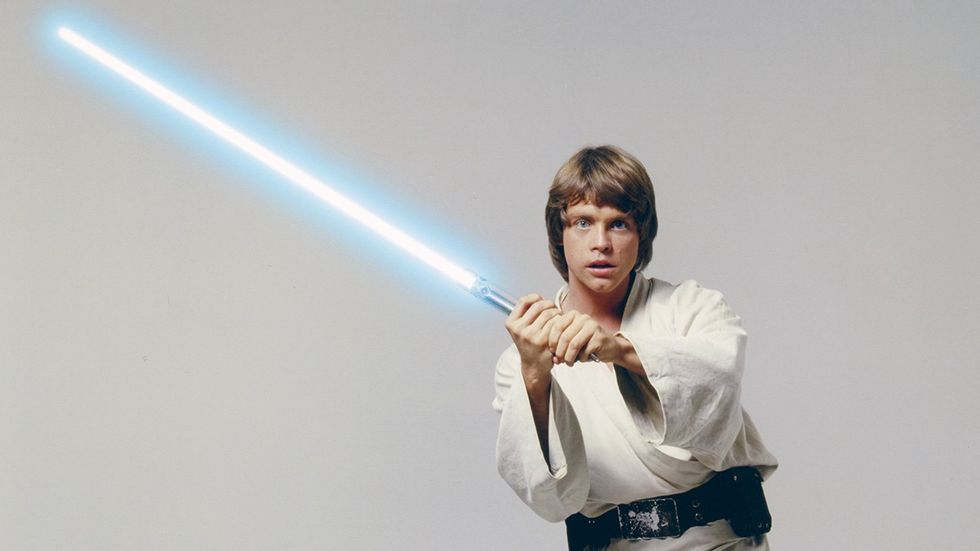
Hero's Journey: A Guide to Becoming The Hero Of Your Story
What will your story be.
Be the hero of your story . It’s common advice from motivational speakers and life coaches, a call to arms to take centre stage and tackle life’s challenges head-on, to emerge victorious in the face of adversity, to transform through hardship.
As humans, hardwired to view the world and share experiences through the medium of stories, myths often act as powerful motivators of change. From ancient cave paintings to the Star Wars and its Death Star to Harry Potter and his battle against evil, the hero’s journey structure is a familiar one. It’s also one you need to know if you want to know how to write a book , but I digress.
This article will outline the stages, and psychological meaning, of the 12 steps of Joseph Campbell’s hero’s journey. So, are you ready to become the hero of your story? Then let the adventure begin...
Who is Joseph Campbell?
Joseph Campbell was an American professor of literature at Sarah Lawrence College, and an expert of mythology that once spent five years in a rented shack, buried in books for nine hours each day. His greatest contribution is the hero’s journey, outlined in his book The Hero with A Thousand Faces . Campbell was able to synthesise huge volumes of heroic stories, distilling a common structure amongst them.
Near the end of his life, Campbell was interviewed by Bill Moyers in a documentary series exploring his work, The Power of Myth .
Throughout their discussion, Campbell highlighted the importance of myth not just in stories, but in our lives, as symbols to inspire us to flourish and grow to our full potential.
How is the hero’s journey connected to self development?
You might be wondering what storytelling has to do with self-development. Before we dive into the hero’s journey (whether that is a male or a female hero’s journey), context will be useful. Joseph Cambell was heavily inspired by the work of Carl Jung, the groundbreaking psychologist who throughout his life worked on theories such as the shadow, collective unconscious, archetypes, and synchronicity.
Jung’s greatest insight was that the unconscious is a vast, vibrant landscape, yet out sight from the ordinary conscious experience. Jung didn’t only theorize about the unconscious; he provided a huge body of work explaining the language of the unconscious, and the way in which it communicates with the conscious mind.
The nature of the unconscious
Due to its vast nature, the unconscious doesn’t operate like the conscious mind, which is based in language, logic, and rationality. The unconscious instead operates in the imaginal realm — using symbols and meaning that take time to be deciphered and understood consciously. Such symbols surface in dreams, visualizations, daydreams, or fantasies.
For Jung, the creative process is one in which contents of the unconscious mind are brought to light. Enter storytelling and character development — a process of myth-making that somehow captures the truth of deep psychological processes.
Campbell saw the power of myth in igniting the unconscious will to grow and live a meaningful life. With that in mind, his structure offers a tool of transformation and a way to inspire the unconscious to work towards your own hero’s journey.
The 12 steps of the hero’s journey
The hero’s journey ends where it begins, back at the beginning after a quest of epic proportions. The 12 steps are separated into three acts:
- departure (1-5)
- initiation (5-10)
- return (10-1)
The hero journeys through the 12 steps in a clockwise fashion. As Campbell explains:
“The usual hero adventure begins with someone from whom something has been taken, or who feels there is something lacking in the normal experience available or permitted to the members of society. The person then takes off on a series of adventures beyond the ordinary, either to recover what has been lost or to discover some life-giving elixir. It’s usually a cycle, a coming and a returning.”
Let’s take a closer look at each of the steps below. Plus, under each is a psychological symbol that describes how the hero’s journey unfolds, and how when the hero ventures forth, he undergoes an inner process of awakening and transformation.
1. The ordinary world
The calm before the storm. The hero is living a standard, mundane life, going about their business unaware of the impending call to adventure. At this point, the hero is portrayed as very, very human. There could be glimpses of their potential, but these circumstances restrict the hero from fulfilling them. Although well within the hero’s comfort zone, at this stage, it’s clear something significant is lacking from their life.
Psychological symbol
This is represented as a stage of ignorance, pre-awakening. Living life by the status quo, on other people’s terms, or simply without questioning if this is what you want. At this point life is lived, but not deeply satisfying.
2. Call to adventure
Next is a disruption, a significant event that threatens the ways things were. This is a challenge that the hero knows deep down will lead to transformation and change, and that the days of normality, “the way things are,” are numbered. The hero confronts the question of being asked to step into their deeper potential, to awaken the power within, and to enter a new, special world.
Many of us embark on inner-journeys following hardship in life — the death of a loved one, the loss of a job, physical or mental illness. This stage occurs when it becomes apparent that, to move through suffering, one has to look within, to adventure into the soul.
3. Refusal of the call
No compelling story would be complete without friction. The hero often resists this call to adventure, as fear and self-doubt surface at full force, and the purpose of this new life direction is questioned. Can the reluctant hero journey forth? Do they have the courage?
The only way to grow and live a deeply fulfilling life is to face the discomfort of suffering. Campbell himself once said: “ The cave you fear to enter holds the treasure you seek .” At this stage, fears, and anxieties about delving deep into the psyche arise. The temptation is to remain blissfully ignorant, to avoid discomfort, and to stay in your familiar world.
4. Meeting a mentor
As the hero faces a crisis of confidence, a wise mentor figure appears.
This character offers inspiration, guidance, or understanding that encourages the hero to have the self-belief to start this new adventure. In many stories, a mentor is someone else who has embarked on the hero’s journey, or someone who attempted, and failed. This person reflects the importance of this mission, reminding the hero their calling far exceeds their fear.
When the journey of exploration has to begin, people or situations enter your life at just the right time, guiding you in the right direction. This could be a close friend, a peer, a professional, such as a coach or therapist, or even a fictional character in a film or book. In most cases, these are chance encounters that contain a sense of knowing before the hero leaves on his or her adventure.
5. Crossing the threshold
This is a pivotal moment in the hero’s journey, as the initiation begins. This occurs when the hero fully commits to their quest, whether physical, emotional, or spiritual. This is the point of no return, where the reluctant hero embarks on their adventure, and has accepted that the way things were must change. The hero enters a new zone, one in which the call to adventure must be accepted. The hero’s resolve is hardened, and they understand they have a responsibility to confront what is ahead of them.
Whatever your life was before the call to action, this is a crossroads which is accepted, knowing your life may never be the same. This is a point of empowerment, where you realize that journeying within will lead you to greater self-understanding, even if those insights will dramatically change your life direction.
6. Test, allies, enemies
Now the hero has ventured outside of their comfort zone, the true test begins. This is a stage of acclimatizing to unknown lands. Unknown forces work against them, as they form bonds with allies who join them along the way, or face formidable enemies or encounters that have to be conquered. Throughout this testing time, the hero will be shaped and molded through adversity, finding deeper meaning in their life and mission.
Once the journey of self-discovery is underway, the initial burst of inspiration might be tested by the difficulty of the task. You might meet people who are able to offer advice or guide you, or those who reflect areas of yourself you have to work on.
Often, these are inner experiences, in the forms of memories, emotions, or outward tests, such as difficult circumstances that challenge your resolve and commitment to your new life direction.
7. Approach to the inmost cave
Having already crossed the threshold into the unknown and the uncertain, having faced obstacles and enemies, and having begun to utilize their qualities along the way, the next stage is another threshold.
This is the beating heart of the hero’s challenge, where again self-doubt and fear can arise, as another threshold has to be crossed. This is often a period of respite, giving the hero time to pause and reflect. Will the hero make the leap?
The hero’s journey has ups and downs. There may be quick wins in the beginning — your new life direction may go well, or inner-work may lead you to a new place of calm or confidence. But then, out of nowhere, comes an even bigger challenge, surfacing as a question mark to the person you’ve become. Life often has a way of presenting the right challenges at the right time…
This is the life-or-death moment. This can be a meeting with an ultimate enemy or facing the hero’s deepest fear. There is an awareness that if the hero fails, their new world, or their life, could be destroyed.
Everything the hero has fought for up to this point, all the lessons learned along the journey, all the hidden potentials actualized, will have to be utilized to survive this supreme ordeal, for the hero to be victorious. Either way, the hero will undergo a form of death, and leave the ordeal forever changed.
There are inner challenges that have to be confronted on the journey of self-discovery. This might be in the form of trauma that has to be confronted and healed, people with whom you have to have difficult conversations, or fears you have to face, actions that in the past you never thought you’d be capable of. But, with the skills you’ve learned along the way, this time you’ll be ready. But it won’t be easy.
9. Reward (seizing the sword)
Through great adversity comes triumph. Having confronted their greatest fear, and survived annihilation, the hero learns a valuable lesson, and is now fully transformed and reborn — with a prize as a reward.
This object is often symbolized as a treasure, a token, secret knowledge, or reconciliation, such as the return of an old friend or lover. This prize can assist in the return to the ordinary world — but there are still a few steps to come.
When confronting deep inner fears or challenges, you are rewarded with deep insights or breakthroughs. That might be in the form of achieving a significant goal or inwardly having a sense of peace or reconciliation with your past, or moments that have previously felt unresolved. As a spiritual process, this may also be the realization that behind suffering and pain lies freedom or inner peace.
10. The road back
Having traveled into distant, foreign lands and slain the dragon, now it’s time for the hero to make their return journey. This stage mirrors the original call to adventure and represents another threshold.
The hero may be understanding their new responsibility and the consequences of their actions, and require a catalyst to make the journey back to the ordinary world with their prize.
The hard work has been done, the ultimate fear confronted, new knowledge found. Now, what’s the next step? For many, the initial stages of growth come with a period of renunciation or are symbolized by an outward journey away from home, or away from familiarity.
Then comes the stage of returning to familiarity, or the things left behind — be it family, friends, locations, or even behaviors that were once loved and sacrificed during the journey.
11. Resurrection
When it appears the hero is out of the woods, there comes a final confrontation — an encounter with death itself. Transformed inwardly and with a personal victory complete, the hero faces a battle that transcends their individual quest, with its consequences far-reaching, for entire communities or even humanity itself.
This purification solidifies the hero’s rebirth, as their new identity fully emerges just in time to return to the ordinary world.
In Maslow’s hierarchy of needs, self-actualization is secondary to self-transcendence. In other words, once inner battles have been faced, and the alchemy of psychological transformation is underway, the next stage is to apply the newfound insights and knowledge to a bigger cause — supporting others, or standing up a mission that will benefit the wider world.
12. Return with the elixir
Following the final battle, the hero finally returns home. By now, personal transformation is complete, they’re returning home a different person. Having faced indescribable hardship, the hero returns with added wisdom and maturity. The elixir is the treasure they’ve returned with, ready to share with the ordinary world. This could be a sense of hope, freedom, or even a new perspective to assist those originally left behind.
The hero has a new level of self-awareness, seeing the ordinary world through fresh eyes. They’ve left internal conflict behind. There’s an understanding that things will never be the same, but that the hero’s journey was part of their destiny.
Then comes the ultimate prize: a final reconciliation, acceptance from the community, celebration, redemption. Whatever the prize, there are three elements: change , success , and proof of the journey .
Following a transformative psychic process, there’s an understanding of what is within your control. The “ordinary world” may have many elements that remain the same, but this is accompanied by a realization that when you change, so does your reality. Previously modes of thinking may be replaced, as bridges are built with your past, giving opportunity for a renewed approach to life.
What can we learn from the hero's journey?
At the time of writing this article, I’m in the UK visiting my family for the first time in 18 months. As I walked down paths I’d walked throughout my childhood, I was struck by how much I’ve changed over the years. A passage from T.S Eliot’s poem Little Gidding came to mind:
“We shall not cease from exploration. And the end of all our exploring. Will be to arrive where we started. And know the place for the first time.”
I reflected on the notion of coming full circle — to begin a journey, outwardly or inwardly, before finding yourself back at the beginning, transformed. In spiritual traditions, the circle is a powerful symbol of timelessness, death and rebirth, totality, and wholeness. Aptly, the 12 steps of the hero’s journey are depicted as a circle. It’s not a coincidence.
What can we learn from the hero’s journey? In a way, it is similar to the writer’s journey. Above all else, it’s a reminder that we each within us have a purpose, a quest and a mission in this life that can and will invoke our truest potential. The path isn’t easy — there are many, many challenges along the way. But at the right time, people and situations will come to our aid.
If you’re able to confront the mission head-on and take bold steps along the way — just like all the heroes of fiction before you, from Shakespeare’s characters to Luke Skywalker and Rey from the universe brought to us by George Lucas — then you will be transformed, and then you can return to where you started, reborn, ready to share your gifts and your lessons with the world.
Hot Stories
Husband opens small package from his wife - what’s inside brings him to tears.
man holding a red gift box and a woman watching a man open a gift
This scene looks happy, even festive. The lights are bright, and a little girl's toys are strewn across the floor.
But something's off.
Sitting on the floor beside her is a man looking deadpan at the camera. He looks quizzical, even suspicious at the person behind the camera.
As you'll see, he has good reason to be.
A Bizarre Buildup
The man is holding an object in his hand and barely breaks eye contact with the camera. Drowned out by the music is the faint voice of a woman, her voice barely audible.
He continues to stare back, looking down at the object and then back at the camera.
However, the words appearing across the screen slowly piece this puzzle together. By the time this short video is done, we can hear the voice.
"Are you okay?" she asks.
The man nods slowly, wiping the tears from his eyes and looking down at his hand.
"l'll never trade this moment for anything," reads the text across the screen.
A Soulful Surprise
You see, the man in the video knows that it wasn't too long ago that things weren't so happy. The person he's looking back at -- his wife -- knows this too.
Through the captions across the screen, she shares that their family put off holiday cheer due to ‘some devastating financial news.' They even put candy in stocking stuffers and wrapped items they already owned 'so our 3-year-old wouldn’t question why WE didn’t have any gifts.'
We also find out that a couple of years prior, her husband lost their wedding band and 'he was devastated.' "It was a crappy little fake gold band we got. All the gold had rubbed off and it was silver," she writes, "but he loved it."
You can almost tell that they are both thinking the same as her husband looks down at the object. It's at that moment that his wife shares the motivation behind this magic video.
'Then I saw this ring while getting groceries last night. It’s not frilly. It’s not super expensive. But it is real gold and was the only one left in Ben’s size," writes Ben's wife.
How a Wife Proves That True Love Is Priceless
There's a saying that money is the root of all evil. Whether or not that's true, we know that it has doomed many marriages.
Per Spectrum Family Law, “Arguments about money (are) by far the top predictor of divorce.” It continues to say, "Money was the second most common subject that couples fight about -- after infidelity. Finances can be more damaging to a marriage than arguments about children, sex, the in-laws or anything else."
Words can't express how tragic I find that fact. Call me an idealist, but the notion that money can drive a wedge between two humans who otherwise love and cherish each other is one of the saddest stories ever told.
It's what makes this story so touching to me and over 13 million others.
"Oh my heart. U can actually feel what this means to him just watching this. That's real love. U can see what his wife means to him," writes one.
Another commenter put it perfectly, "As a man, it doesn't matter the cost. HE appreciates the thought. That to him means everything. He appreciates it. No matter what he says.😊"
Among quotes about love , one by Seth Adam Smith reads, "We simply can’t abandon ship every time we encounter a storm. Real love is about weathering the terms of life together."
I'm blessed to have had front-row seats to my parents enduring through the storms of life, together. Just like them, this video shows us that in life, the true beauty of love lies in the struggle.
*Featured image contains photos by SHVETS production
Smart Banker Saves Poor Elderly Woman From Evil Romance Scam by Her ‘Online Boyfriend’
Why setting relationship goals is important - and how to do it, snoop dogg wouldn't choose sides, tupac called him out, the real reason why cameron diaz left hollywood for good, liam neeson left his son after losing wife natasha richardson, how tiffany haddish finally found the love she deserved, lamar odom regrets choosing khloe kardashian over taraji p henson, did all the break ups lead jennifer lopez to her true love, subscribe to our newsletter, the great takedown of nickelodeon’s dan schneider - how even small voices have the power for impact, chris gardner beyond the pursuit of happyness: the work begins, 100 powerful motivational quotes to help you rise above, wim hof: the iceman’s heroic journey to warming the hearts of millions, how jennifer aniston saved reese witherspoon.
Reese Witherspoon, portraying a flawless life alongside actor Ryan Phillippe, concealed a troubling secret for years. However, Jennifer Aniston played a pivotal role in unveiling this hidden truth, shedding light on Witherspoon's undisclosed struggles.
Copyright © 2024 Goalcast
Get stories worth sharing delivered to your inbox
Holiday Savings
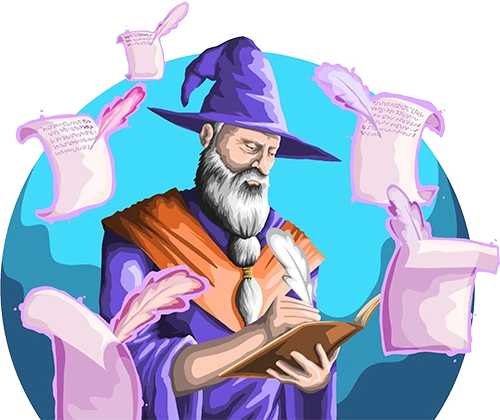
cui:common.components.upgradeModal.offerHeader_undefined
The hero's journey: a story structure as old as time, the hero's journey offers a powerful framework for creating quest-based stories emphasizing self-transformation..

Table of Contents
Holding out for a hero to take your story to the next level?
The Hero’s Journey might be just what you’ve been looking for. Created by Joseph Campbell, this narrative framework packs mythic storytelling into a series of steps across three acts, each representing a crucial phase in a character's transformative journey.
Challenge . Growth . Triumph .
Whether you're penning a novel, screenplay, or video game, The Hero’s Journey is a tried-and-tested blueprint for crafting epic stories that transcend time and culture. Let’s explore the steps together and kickstart your next masterpiece.
What is the Hero’s Journey?
The Hero’s Journey is a famous template for storytelling, mapping a hero's adventurous quest through trials and tribulations to ultimate transformation.

What are the Origins of the Hero’s Journey?
The Hero’s Journey was invented by Campbell in his seminal 1949 work, The Hero with a Thousand Faces , where he introduces the concept of the "monomyth."
A comparative mythologist by trade, Campbell studied myths from cultures around the world and identified a common pattern in their narratives. He proposed that all mythic narratives are variations of a single, universal story, structured around a hero's adventure, trials, and eventual triumph.
His work unveiled the archetypal hero’s path as a mirror to humanity’s commonly shared experiences and aspirations. It was subsequently named one of the All-Time 100 Nonfiction Books by TIME in 2011.
How are the Hero’s and Heroine’s Journeys Different?
While both the Hero's and Heroine's Journeys share the theme of transformation, they diverge in their focus and execution.
The Hero’s Journey, as outlined by Campbell, emphasizes external challenges and a quest for physical or metaphorical treasures. In contrast, Murdock's Heroine’s Journey, explores internal landscapes, focusing on personal reconciliation, emotional growth, and the path to self-actualization.
In short, heroes seek to conquer the world, while heroines seek to transform their own lives; but…
Twelve Steps of the Hero’s Journey
So influential was Campbell’s monomyth theory that it's been used as the basis for some of the largest franchises of our generation: The Lord of the Rings , Harry Potter ...and George Lucas even cited it as a direct influence on Star Wars .
There are, in fact, several variations of the Hero's Journey, which we discuss further below. But for this breakdown, we'll use the twelve-step version outlined by Christopher Vogler in his book, The Writer's Journey (seemingly now out of print, unfortunately).

You probably already know the above stories pretty well so we’ll unpack the twelve steps of the Hero's Journey using Ben Gates’ journey in National Treasure as a case study—because what is more heroic than saving the Declaration of Independence from a bunch of goons?
Ye be warned: Spoilers ahead!
Act One: Departure
Step 1. the ordinary world.
The journey begins with the status quo—business as usual. We meet the hero and are introduced to the Known World they live in. In other words, this is your exposition, the starting stuff that establishes the story to come.

National Treasure begins in media res (preceded only by a short prologue), where we are given key information that introduces us to Ben Gates' world, who he is (a historian from a notorious family), what he does (treasure hunts), and why he's doing it (restoring his family's name).
With the help of his main ally, Riley, and a crew of other treasure hunters backed by a wealthy patron, he finds an 18th-century American ship in the Canadian Arctic, the Charlotte . Here, they find a ship-shaped pipe that presents a new riddle and later doubles as a key—for now, it's just another clue in the search for the lost treasure of the Templars, one that leads them to the Declaration of Independence.
Step 2. The Call to Adventure
The inciting incident takes place and the hero is called to act upon it. While they're still firmly in the Known World, the story kicks off and leaves the hero feeling out of balance. In other words, they are placed at a crossroads.
Ian (the wealthy patron of the Charlotte operation) steals the pipe from Ben and Riley and leaves them stranded. This is a key moment: Ian becomes the villain, Ben has now sufficiently lost his funding for this expedition, and if he decides to pursue the chase, he'll be up against extreme odds.
Step 3. Refusal of the Call
The hero hesitates and instead refuses their call to action. Following the call would mean making a conscious decision to break away from the status quo. Ahead lies danger, risk, and the unknown; but here and now, the hero is still in the safety and comfort of what they know.
Ben debates continuing the hunt for the Templar treasure. Before taking any action, he decides to try and warn the authorities: the FBI, Homeland Security, and the staff of the National Archives, where the Declaration of Independence is housed and monitored. Nobody will listen to him, and his family's notoriety doesn't help matters.
Step 4. Meeting the Mentor
The protagonist receives knowledge or motivation from a powerful or influential figure. This is a tactical move on the hero's part—remember that it was only the previous step in which they debated whether or not to jump headfirst into the unknown. By Meeting the Mentor, they can gain new information or insight, and better equip themselves for the journey they might to embark on.

Abigail, an archivist at the National Archives, brushes Ben and Riley off as being crazy, but Ben uses the interaction to his advantage in other ways—to seek out information about how the Declaration of Independence is stored and cared for, as well as what (and more importantly, who) else he might be up against in his own attempt to steal it.
In a key scene, we see him contemplate the entire operation while standing over the glass-encased Declaration of Independence. Finally, he firmly decides to pursue the treasure and stop Ian, uttering the famous line, "I'm gonna steal the Declaration of Independence."
Act Two: Initiation
Step 5. crossing the threshold.
The hero leaves the Known World to face the Unknown World. They are fully committed to the journey, with no way to turn back now. There may be a confrontation of some sort, and the stakes will be raised.

Ben and Riley infiltrate the National Archives during a gala and successfully steal the Declaration of Independence. But wait—it's not so easy. While stealing the Declaration of Independence, Abigail suspects something is up and Ben faces off against Ian.
Then, when trying to escape the building, Ben exits through the gift shop, where an attendant spots the document peeking out of his jacket. He is forced to pay for it, feigning that it's a replica—and because he doesn't have enough cash, he has to use his credit card, so there goes keeping his identity anonymous.
The game is afoot.
Step 6. Tests, Allies, Enemies
The hero explores the Unknown World. Now that they have firmly crossed the threshold from the Known World, the hero will face new challenges and possibly meet new enemies. They'll have to call upon their allies, new and old, in order to keep moving forward.
Abigail reluctantly joins the team under the agreement that she'll help handle the Declaration of Independence, given her background in document archiving and restoration. Ben and co. seek the aid of Ben's father, Patrick Gates, whom Ben has a strained relationship with thanks to years of failed treasure hunting that has created a rift between grandfather, father, and son. Finally, they travel around Philadelphia deciphering clues while avoiding both Ian and the FBI.
Step 7. Approach the Innermost Cave
The hero nears the goal of their quest, the reason they crossed the threshold in the first place. Here, they could be making plans, having new revelations, or gaining new skills. To put it in other familiar terms, this step would mark the moment just before the story's climax.
Ben uncovers a pivotal clue—or rather, he finds an essential item—a pair of bifocals with interchangeable lenses made by Benjamin Franklin. It is revealed that by switching through the various lenses, different messages will be revealed on the back of the Declaration of Independence. He's forced to split from Abigail and Riley, but Ben has never been closer to the treasure.
Step 8. The Ordeal
The hero faces a dire situation that changes how they view the world. All threads of the story come together at this pinnacle, the central crisis from which the hero will emerge unscathed or otherwise. The stakes will be at their absolute highest here.
Vogler details that in this stage, the hero will experience a "death," though it need not be literal. In your story, this could signify the end of something and the beginning of another, which could itself be figurative or literal. For example, a certain relationship could come to an end, or it could mean someone "stuck in their ways" opens up to a new perspective.
In National Treasure , The FBI captures Ben and Ian makes off with the Declaration of Independence—all hope feels lost. To add to it, Ian reveals that he's kidnapped Ben's father and threatens to take further action if Ben doesn't help solve the final clues and lead Ian to the treasure.
Ben escapes the FBI with Ian's help, reunites with Abigail and Riley, and leads everyone to an underground structure built below Trinity Church in New York City. Here, they manage to split from Ian once more, sending him on a goose chase to Boston with a false clue, and proceed further into the underground structure.
Though they haven't found the treasure just yet, being this far into the hunt proves to Ben's father, Patrick, that it's real enough. The two men share an emotional moment that validates what their family has been trying to do for generations.
Step 9. Reward
This is it, the moment the hero has been waiting for. They've survived "death," weathered the crisis of The Ordeal, and earned the Reward for which they went on this journey.

Now, free of Ian's clutches and with some light clue-solving, Ben, Abigail, Riley, and Patrick keep progressing through the underground structure and eventually find the Templar's treasure—it's real and more massive than they could have imagined. Everyone revels in their discovery while simultaneously looking for a way back out.
Act Three: Return
Step 10. the road back.
It's time for the journey to head towards its conclusion. The hero begins their return to the Known World and may face unexpected challenges. Whatever happens, the "why" remains paramount here (i.e. why the hero ultimately chose to embark on their journey).
This step marks a final turning point where they'll have to take action or make a decision to keep moving forward and be "reborn" back into the Known World.
Act Three of National Treasure is admittedly quite short. After finding the treasure, Ben and co. emerge from underground to face the FBI once more. Not much of a road to travel back here so much as a tunnel to scale in a crypt.
Step 11. Resurrection
The hero faces their ultimate challenge and emerges victorious, but forever changed. This step often requires a sacrifice of some sort, and having stepped into the role of The Hero™, they must answer to this.

Ben is given an ultimatum— somebody has to go to jail (on account of the whole stealing-the-Declaration-of-Independence thing). But, Ben also found a treasure worth millions of dollars and that has great value to several nations around the world, so that counts for something.
Ultimately, Ben sells Ian out, makes a deal to exonerate his friends and family, and willingly hands the treasure over to the authorities. Remember: he wanted to find the treasure, but his "why" was to restore the Gates family name, so he won regardless.
Step 12. Return With the Elixir
Finally, the hero returns home as a new version of themself, the elixir is shared amongst the people, and the journey is completed full circle.
The elixir, like many other elements of the hero's journey, can be literal or figurative. It can be a tangible thing, such as an actual elixir meant for some specific purpose, or it could be represented by an abstract concept such as hope, wisdom, or love.
Vogler notes that if the Hero's Journey results in a tragedy, the elixir can instead have an effect external to the story—meaning that it could be something meant to affect the audience and/or increase their awareness of the world.
In the final scene of National Treasure , we see Ben and Abigail walking the grounds of a massive estate. Riley pulls up in a fancy sports car and comments on how they could have gotten more money. They all chat about attending a museum exhibit in Cairo (Egypt).
In one scene, we're given a lot of closure: Ben and co. received a hefty payout for finding the treasure, Ben and Abigail are a couple now, and the treasure was rightfully spread to those it benefitted most—in this case, countries who were able to reunite with significant pieces of their history. Everyone's happy, none of them went to jail despite the serious crimes committed, and they're all a whole lot wealthier. Oh, Hollywood.
Variations of the Hero's Journey
Plot structure is important, but you don't need to follow it exactly; and, in fact, your story probably won't. Your version of the Hero's Journey might require more or fewer steps, or you might simply go off the beaten path for a few steps—and that's okay!

What follows are three additional versions of the Hero's Journey, which you may be more familiar with than Vogler's version presented above.
Dan Harmon's Story Circle (or, The Eight-Step Hero's Journey)
Screenwriter Dan Harmon has riffed on the Hero's Journey by creating a more compact version, the Story Circle —and it works especially well for shorter-format stories such as television episodes, which happens to be what Harmon writes.
The Story Circle comprises eight simple steps with a heavy emphasis on the hero's character arc:
- The hero is in a zone of comfort...
- But they want something.
- They enter an unfamiliar situation...
- And adapt to it by facing trials.
- They get what they want...
- But they pay a heavy price for it.
- They return to their familiar situation...
- Having changed.
You may have noticed, but there is a sort of rhythm here. The eight steps work well in four pairs, simplifying the core of the Hero's Journey even further:
- The hero is in a zone of comfort, but they want something.
- They enter an unfamiliar situation and have to adapt via new trials.
- They get what they want, but they pay a price for it.
- They return to their zone of comfort, forever changed.
If you're writing shorter fiction, such as a short story or novella, definitely check out the Story Circle. It's the Hero's Journey minus all the extraneous bells & whistles.
Ten-Step Hero's Journey
The ten-step Hero's Journey is similar to the twelve-step version we presented above. It includes most of the same steps except for Refusal of the Call and Meeting the Mentor, arguing that these steps aren't as essential to include; and, it moves Crossing the Threshold to the end of Act One and Reward to the end of Act Two.
- The Ordinary World
- The Call to Adventure
- Crossing the Threshold
- Tests, Allies, Enemies
- Approach the Innermost Cave
- The Road Back
- Resurrection
- Return with Elixir
We've previously written about the ten-step hero's journey in a series of essays separated by act: Act One (with a prologue), Act Two , and Act Three .
Twelve-Step Hero's Journey: Version Two
Again, the second version of the twelve-step hero's journey is very similar to the one above, save for a few changes, including in which story act certain steps appear.
This version skips The Ordinary World exposition and starts right at The Call to Adventure; then, the story ends with two new steps in place of Return With Elixir: The Return and The Freedom to Live.
- The Refusal of the Call
- Meeting the Mentor
- Test, Allies, Enemies
- Approaching the Innermost Cave
- The Resurrection
- The Return*
- The Freedom to Live*
In the final act of this version, there is more of a focus on an internal transformation for the hero. They experience a metamorphosis on their journey back to the Known World, return home changed, and go on to live a new life, uninhibited.
Seventeen-Step Hero's Journey
Finally, the granddaddy of heroic journeys: the seventeen-step Hero's Journey. This version includes a slew of extra steps your hero might face out in the expanse.
- Refusal of the Call
- Supernatural Aid (aka Meeting the Mentor)
- Belly of the Whale*: This added stage marks the hero's immediate descent into danger once they've crossed the threshold.
- Road of Trials (...with Allies, Tests, and Enemies)
- Meeting with the Goddess/God*: In this stage, the hero meets with a new advisor or powerful figure, who equips them with the knowledge or insight needed to keep progressing forward.
- Woman as Temptress (or simply, Temptation)*: Here, the hero is tempted, against their better judgment, to question themselves and their reason for being on the journey. They may feel insecure about something specific or have an exposed weakness that momentarily holds them back.
- Atonement with the Father (or, Catharthis)*: The hero faces their Temptation and moves beyond it, shedding free from all that holds them back.
- Apotheosis (aka The Ordeal)
- The Ultimate Boon (aka the Reward)
- Refusal of the Return*: The hero wonders if they even want to go back to their old life now that they've been forever changed.
- The Magic Flight*: Having decided to return to the Known World, the hero needs to actually find a way back.
- Rescue From Without*: Allies may come to the hero's rescue, helping them escape this bold, new world and return home.
- Crossing of the Return Threshold (aka The Return)
- Master of Two Worlds*: Very closely resembling The Resurrection stage in other variations, this stage signifies that the hero is quite literally a master of two worlds—The Known World and the Unknown World—having conquered each.
- Freedom to Live
Again, we skip the Ordinary World opening here. Additionally, Acts Two and Three look pretty different from what we've seen so far, although, the bones of the Hero's Journey structure remain.
The Eight Hero’s Journey Archetypes
The Hero is, understandably, the cornerstone of the Hero’s Journey, but they’re just one of eight key archetypes that make up this narrative framework.

In The Writer's Journey , Vogler outlined seven of these archetypes, only excluding the Ally, which we've included below. Here’s a breakdown of all eight with examples:
1. The Hero
As outlined, the Hero is the protagonist who embarks on a transformative quest or journey. The challenges they overcome represent universal human struggles and triumphs.
Vogler assigned a "primary function" to each archetype—helpful for establishing their role in a story. The Hero's primary function is "to service and sacrifice."
Example: Neo from The Matrix , who evolves from a regular individual into the prophesied savior of humanity.
2. The Mentor
A wise guide offering knowledge, tools, and advice, Mentors help the Hero navigate the journey and discover their potential. Their primary function is "to guide."
Example: Mr. Miyagi from The Karate Kid imparts not only martial arts skills but invaluable life lessons to Daniel.
3. The Ally
Companions who support the Hero, Allies provide assistance, friendship, and moral support throughout the journey. They may also become a friends-to-lovers romantic partner.
Not included in Vogler's list is the Ally, though we'd argue they are essential nonetheless. Let's say their primary function is "to aid and support."
Example: Samwise Gamgee from Lord of the Rings , a loyal friend and steadfast supporter of Frodo.
4. The Herald
The Herald acts as a catalyst to initiate the Hero's Journey, often presenting a challenge or calling the hero to adventure. Their primary function is "to warn or challenge."
Example: Effie Trinket from The Hunger Games , whose selection at the Reaping sets Katniss’s journey into motion.
5. The Trickster
A character who brings humor and unpredictability, challenges conventions, and offers alternative perspectives or solutions. Their primary function is "to disrupt."
Example: Loki from Norse mythology exemplifies the trickster, with his cunning and chaotic influence.
6. The Shapeshifter
Ambiguous figures whose allegiance and intentions are uncertain. They may be a friend one moment and a foe the next. Their primary function is "to question and deceive."
Example: Catwoman from the Batman universe often blurs the line between ally and adversary, slinking between both roles with glee.
7. The Guardian
Protectors of important thresholds, Guardians challenge or test the Hero, serving as obstacles to overcome or lessons to be learned. Their primary function is "to test."
Example: The Black Knight in Monty Python and the Holy Grail literally bellows “None shall pass!”—a quintessential ( but not very effective ) Guardian.
8. The Shadow
Represents the Hero's inner conflict or an antagonist, often embodying the darker aspects of the hero or their opposition. Their primary function is "to destroy."
Example: Zuko from Avatar: The Last Airbender; initially an adversary, his journey parallels the Hero’s path of transformation.
While your story does not have to use all of the archetypes, they can help you develop your characters and visualize how they interact with one another—especially the Hero.
For example, take your hero and place them in the center of a blank worksheet, then write down your other major characters in a circle around them and determine who best fits into which archetype. Who challenges your hero? Who tricks them? Who guides them? And so on...
Stories that Use the Hero’s Journey
Not a fan of saving the Declaration of Independence? Check out these alternative examples of the Hero’s Journey to get inspired:
- Epic of Gilgamesh : An ancient Mesopotamian epic poem thought to be one of the earliest examples of the Hero’s Journey (and one of the oldest recorded stories).
- The Lion King (1994): Simba's exile and return depict a tale of growth, responsibility, and reclaiming his rightful place as king.
- The Alchemist by Paolo Coehlo: Santiago's quest for treasure transforms into a journey of self-discovery and personal enlightenment.
- Coraline by Neil Gaiman: A young girl's adventure in a parallel world teaches her about courage, family, and appreciating her own reality.
- Kung Fu Panda (2008): Po's transformation from a clumsy panda to a skilled warrior perfectly exemplifies the Hero's Journey. Skadoosh!
The Hero's Journey is so generalized that it's ubiquitous. You can plop the plot of just about any quest-style narrative into its framework and say that the story follows the Hero's Journey. Try it out for yourself as an exercise in getting familiar with the method.
Will the Hero's Journey Work For You?
As renowned as it is, the Hero's Journey works best for the kinds of tales that inspired it: mythic stories.
Writers of speculative fiction may gravitate towards this method over others, especially those writing epic fantasy and science fiction (big, bold fantasy quests and grand space operas come to mind).
The stories we tell today are vast and varied, and they stretch far beyond the dealings of deities, saving kingdoms, or acquiring some fabled "elixir." While that may have worked for Gilgamesh a few thousand years ago, it's not always representative of our lived experiences here and now.
If you decide to give the Hero's Journey a go, we encourage you to make it your own! The pieces of your plot don't have to neatly fit into the structure, but you can certainly make a strong start on mapping out your story.
Hero's Journey Campfire Template
The Timeline Module in Campfire offers a versatile canvas to plot out each basic component of your story while featuring nested "notebooks."

Simply double-click on each event card in your timeline to open up a canvas specific to that card. This allows you to look at your plot at the highest level, while also adding as much detail for each plot element as needed!
If you're just hearing about Campfire for the first time, it's free to sign up—forever! Let's plot the most epic of hero's journeys 👇
Lessons From the Hero’s Journey
The Hero's Journey offers a powerful framework for creating stories centered around growth, adventure, and transformation.
If you want to develop compelling characters, spin out engaging plots, and write books that express themes of valor and courage, consider The Hero’s Journey your blueprint. So stop holding out for a hero, and start writing!
Does your story mirror the Hero's Journey? Let us know in the comments below.

ThinkWritten
The Hero’s Journey: A 17 Step Story Structure Beat Sheet
The Hero’s Journey is a classic plot structure made up of 17 steps. Learn how to craft an epic story using the Hero’s Journey story beats.

We may receive a commission when you make a purchase from one of our links for products and services we recommend. As an Amazon Associate we earn from qualifying purchases. Thank you for support!
Sharing is caring!
The Hero’s Journey is a story structure that tells how a hero starts in one place, goes on an adventure into an unknown world, and then returns to what they started with.
This blog post will explain the 17 steps of the Hero’s Journey and share how you can use this common plot structure to write your own story or novel.
What is the Hero’s Journey?
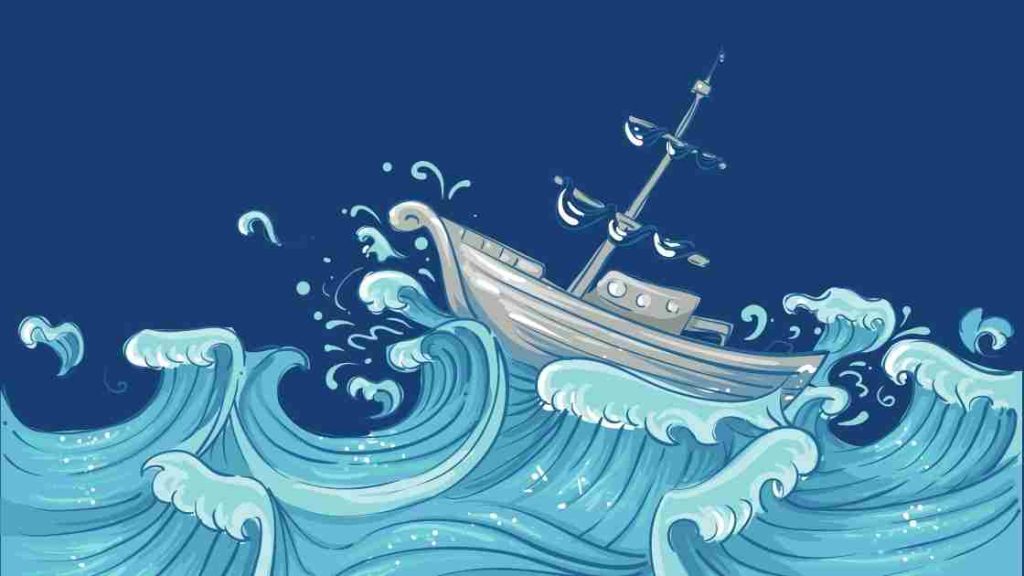
Joseph Campbell first introduced the Hero’s Journey in 1949. It is based on the idea that we can break down most stories into one basic story structure.
The plot structure of the Hero’s Journey is made up of 17 steps, all of which can be excellent guideposts for you when plotting your novel and planning your chapters.
To simplify the 17 steps of the Hero’s Journey, there are 3 main acts of the story: The Departure, The Initiation, and The Return.
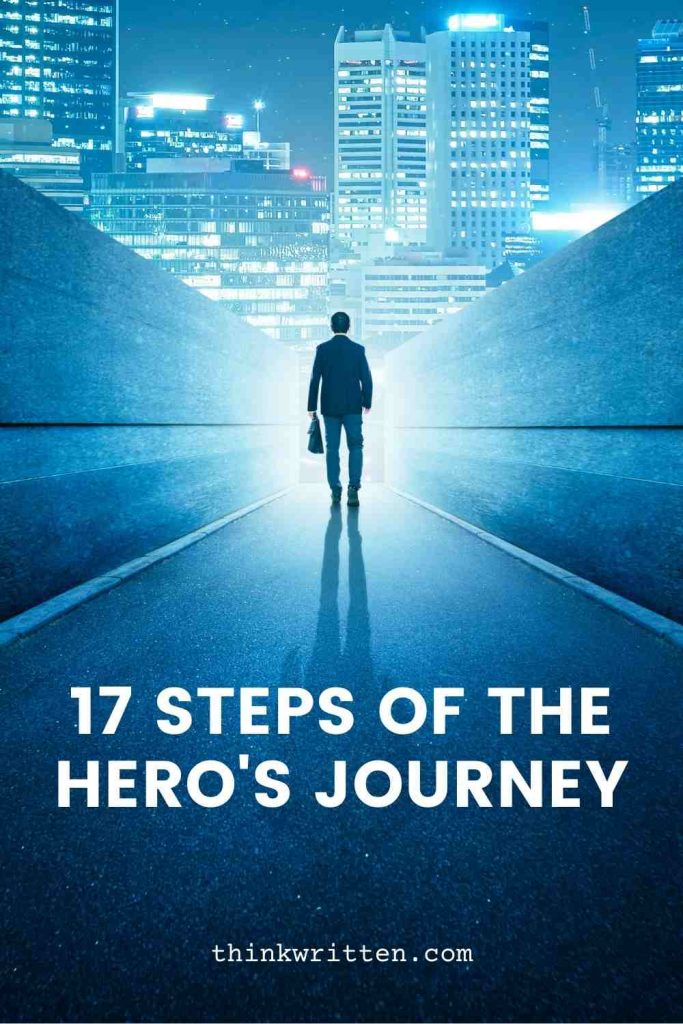
Here’s an overview of all of the 17 steps of Joseph Campbell’s Hero’s Journey:
Act One: The Departure
The Call to Adventure
Refusal of the call, supernatural aid.
- The Crossing of the First Threshold
Belly of the Whale
Act 2: The Initiation :
The Road of Trials
The meeting with the goddess, woman as the temptress, atonement with the father/abyss, the ultimate boon.
Act 3: The Return:
Refusal of the Return
The magic flight, rescue from without, the crossing of the return threshold, master of the two worlds, freedom to live.
In this post, we will cover each step of the Hero’s Journey and what it includes. If you are writing a novel , think of this as the ultimate beat sheet to help you plan and plot your novel !

To understand the 17 steps of the hero’s journey, we will share with you exactly what happens in each step and what it should include. We’ve divided the 17 steps into the three main acts: The Departure, The Initiation, and the Return.
Let’s dive on in, shall we?
The Departure

The Departure (Act 1) of the Hero’s Journey is all about your novel’s main characters and their ordinary lives. You want to show how they live before something happens that throws them into a world outside of what was normal for them.
In a nutshell, The Departure is when we see our heroes start in their current environment and set out on an adventure where they leave their comfort zone.
There are 5 steps of the Departure, each of which can help you base your chapters for your novel. Let’s look at these 5 steps in detail.
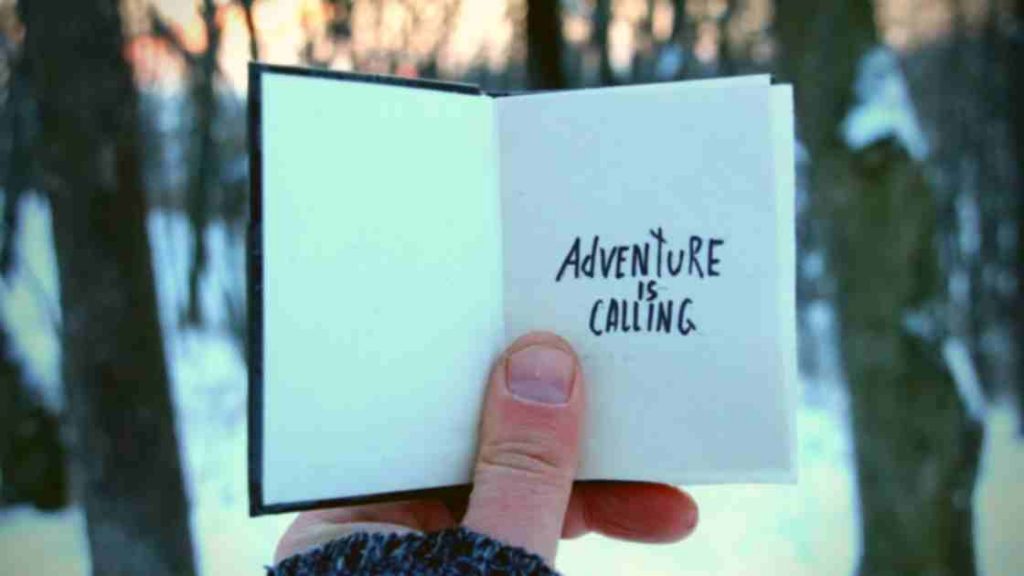
In the first 1 or 2 chapters of our book, our character is introduced and is given the call to adventure. Of course, the call to adventure is what sets our character on their journey. There is a moment when our hero realizes something isn’t right, and it’s time for them to become the hero of their own story.
The Call to Adventure should introduce your main characters and what part of life they are living before things start changing for them. You want this to be a scene that you can use to give your reader an idea of who they are and what their life is like.
The call to adventure is sometimes also called the inciting incident because it often comes from another character or situation in which our hero feels compelled to do something. This could come in the form of a problem or something that they’ve always wanted to accomplish.
Once we understand the character’s life and why they must go on their journey, we move onto the next crucial element: Refusal of the Call.

The Refusal of the Call sounds like it’s a bad thing, but in reality, it can help the hero grow and become more self-sufficient. In this step of the Departure, we see that our character isn’t sure if they are ready for such an adventure.
The refusal of the call is often used as a way for your reader to get more insight into some of your character’s weaknesses. It can also open up the character to seeing what they are missing in their life and get them a little more excited about going after it.
When writing your story, you will show your readers why your hero is reluctant to go on the journey. Why don’t they want to change? What are their fears? This step helps build your character arc, as well as builds some suspense in the story.
You also want to make sure in this step that the refusal of the call is resolved in some way. This can be through another character encouraging your hero or by realizing what they are missing out on if they don’t go on the journey.
Either way, you need to ensure this scene or chapter ends with the hero deciding to accept the challenge.
After your main character decides whether or not they want to go on this journey, we move onto Supernatural Aid.
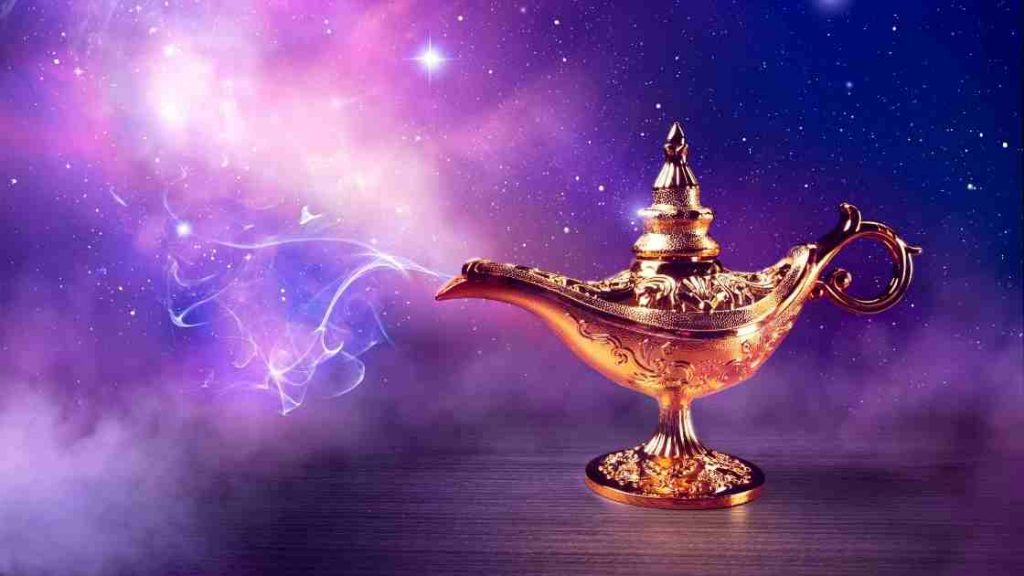
Supernatural aid is the hero’s first experience with a mentor or teacher. While we use the term supernatural here, it does not necessarily have to be some mystical being.
It could be a random stranger giving our hero advice or someone who has been to this magical place before and knows the path. The important thing is this character is someone who will help your protagonist in their journey.
Supernatural aid helps your audience understand there will be obstacles along the way. The hero will need help. You will need a strong supporting character willing to give our main character advice on how they should proceed through their journey.
In this scene, you want to show us why you chose these characters for mentors. What qualities do they possess? Do they have experience with adventures like this? Why can they help the hero, and more importantly, why do they want to help the hero?
Once this person is introduced, we are ready for the next stage of the Hero’s Journey: Crossing the First Threshold.
Crossing the First Threshold
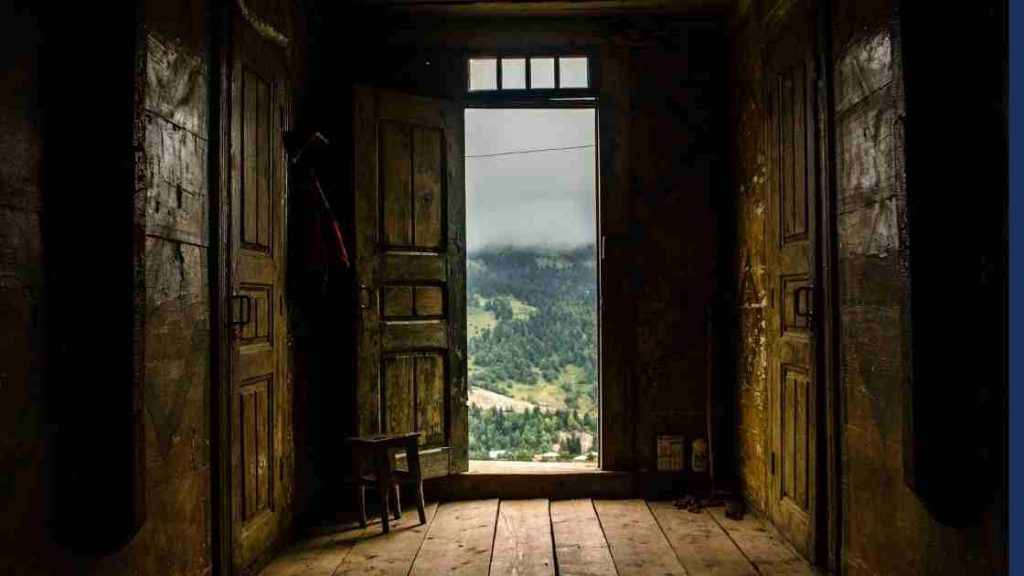
Crossing the first threshold is where your hero commits to going on the journey. They may have made some attempts at it before, but now they are fully committed and ready to go, even if that means leaving their comfort zone behind.
Your character will be doing something different than what they’ve done in the past, or perhaps this act will lead them into a dark and dangerous place.
For example, your hero may leave their home for the first time to go on this journey, or they are finally ready to go and confront someone who has been standing in their way of happiness.
In this 4th step of the Hero’s Journey, you want to show your reader why this is such a big change for the character.
You want to show your character scared and uncertain of what lies ahead for them while still being brave enough to continue on their journey! You don’t need to make this scene too long or spend time explaining every little detail; just put us in the headspace of your hero so we can understand what unknown dangers and fears are ahead.
Once our hero takes their first steps towards danger, we find ourselves in the Belly of the Whale.
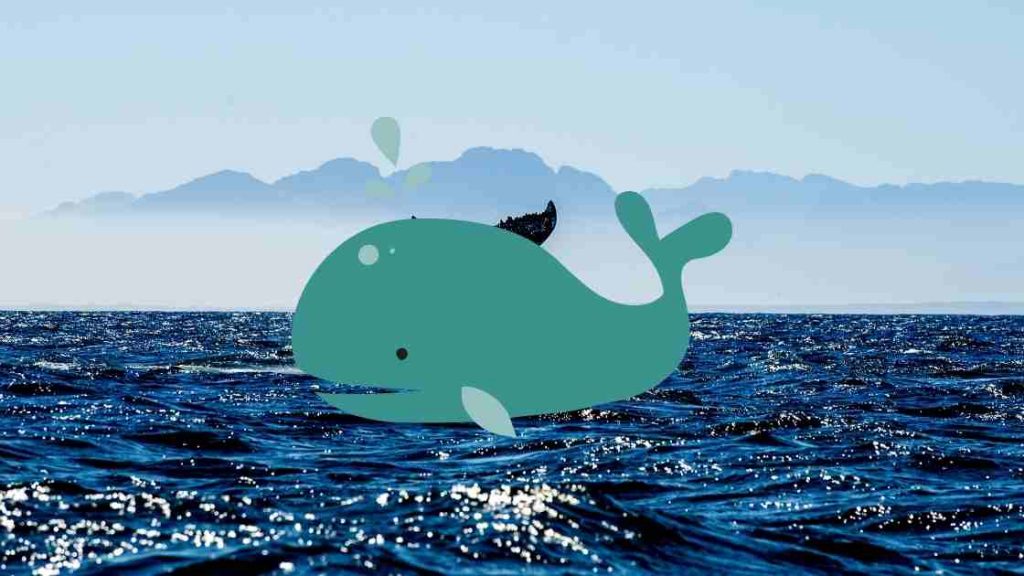
The Belly of the Whale is the last step before the hero breaks away from their normal existence and sense of self. When someone enters this stage, they are showing that they want to change.
A typical element of the Belly of the Whale Scene is displaying a small problem or threat. These problems aren’t the major conflict of the story, but it is enough of an obstacle that we see the hero absolutely cannot go back to where they used to be and must change.
In this scene, it’s common to show a “dark night of the soul.” This is where they feel like everything in their life has been turned upside down, and things seem hopeless. Yet, they must commit to making a change and continuing on their journey in this final step of the Departure stage.
Now that we’ve covered all the steps of the Departure state let’s move onto Act 2: The Initiation.
The Initiation
The second act of our story, the Initiation, is the part where things get interesting. The character is now deeper into their journey and facing new challenges that they must overcome.
Not only are we focusing on our hero’s personal development, but our protagonist’s character traits start to change. They will be showing how they’ve become different from who they were in Act One and developing the traits needed for a successful journey.

The first scene or chapter of the Initiation stage of the Hero’s Journey is The Road of Trials. The Road of Trials is where the protagonist faces a series of tests that your hero must pass to move onto the next stage.
These trials will continue until our hero has shown they are ready for whatever is waiting ahead on their journey and have discovered what lessons they needed to learn along the way.
Usually, there is a series of 3 tests, and your hero will not ace all of them immediately. Sometimes, we will revisit the person introduced as a mentor or guiding force from Act One in these scenes, as the hero will certainly need some support in going through these trials.
In this scene, you want to make sure your reader sees how the hero experiences growth and changes. You want your reader to appreciate how far our hero has come along their journey, but there are still more experiences ahead for them!
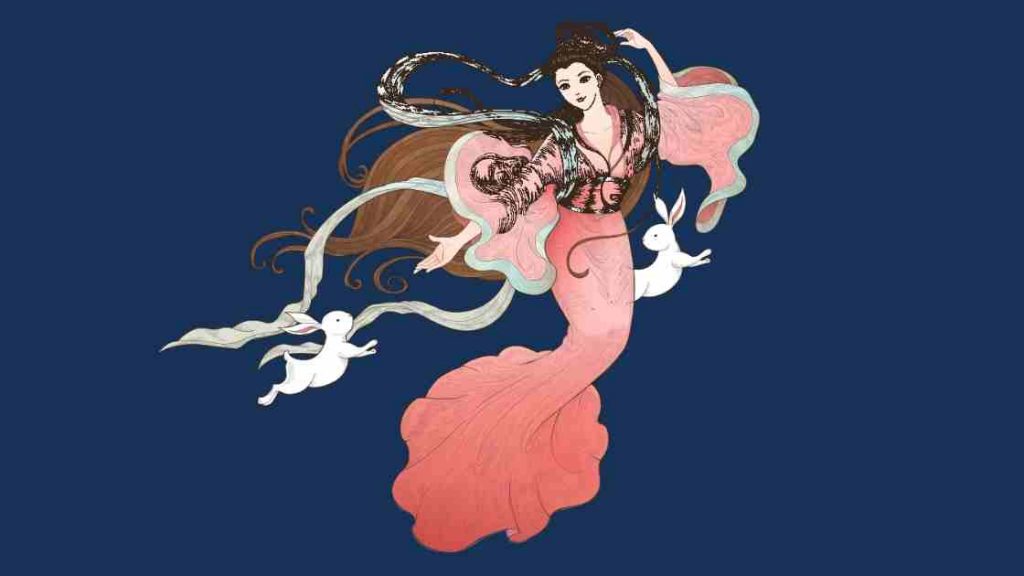
The next step of the Initiation stage is The Meeting with the Goddess/Saviour. This is where we are introduced to someone who will give our protagonist a sense of love, peace, safety, and unity.
This character is essential because they offer our protagonist something he didn’t have before and will be the support that helps them through whatever journey lies ahead. Sometimes they appear as a love interest, but not always.
The Goddess figure is often human but could also be an animal or nature spirit. They are someone who will help your hero become whole again. They are an equal opposite of your hero.
In this scene, we want our hero to feel everything is going to be okay now. They will learn that they don’t need to face their problems alone; someone here with them understands what they are going through.
Of course, this doesn’t last forever as we move into the next chapter: Woman as the Temptress.
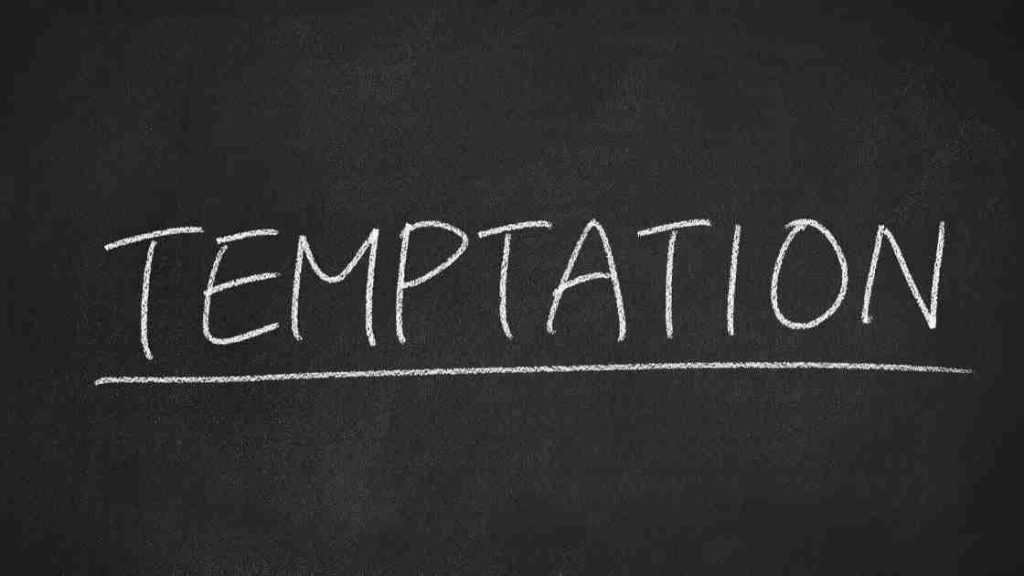
In this next step, the hero faces physical temptations that might cause them to be distracted from their quest. Again, it’s important to understand this does not mean you need to introduce a female character in this scene – the woman is only a metaphorical symbol.
Many things can tempt our heroes to stray from their path. It might be money, power, or fame. It could even be something as simple as food and drink. But, of course, these temptations are not meant actually to distract the protagonist from their path. Our hero must resist them to gain a greater reward at the end of this stage.
Throughout this scene, they may face several such temptations until our hero learns how to resist them and stay focused on what they really want.
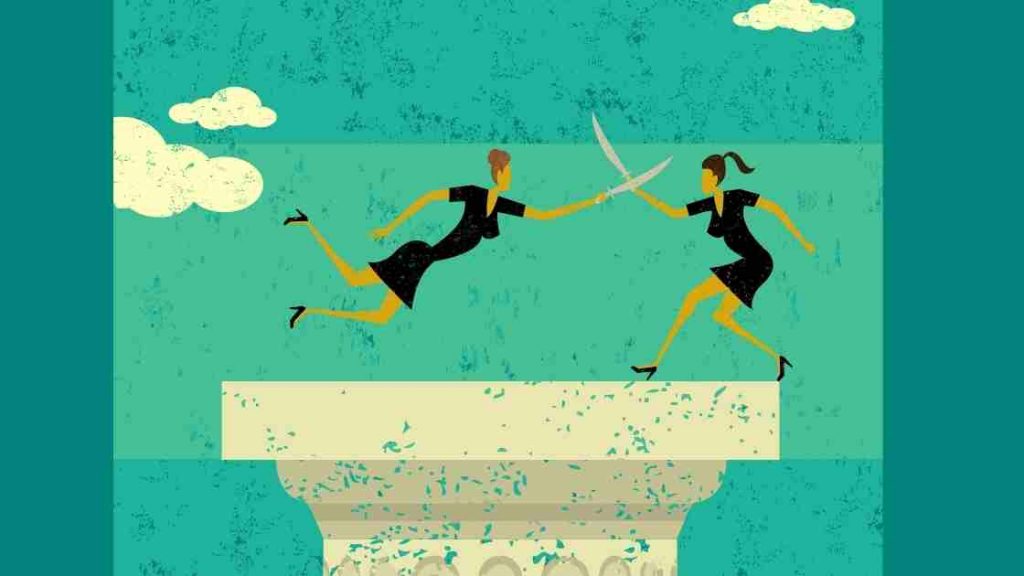
The word Atonement means “reparations for a wrong or injury,” and the Father is a symbol for an authority figure in the hero’s life. Finally, the Abyss represents death or darkness.
In this scene, the hero must confront whatever it is that holds the most power over them. This could be another character or it could even be internal conflict where the hero must come face-to-face with the dark side of their personality and be willing to embrace it.
The goal of this step in the Hero’s Journey is to make your protagonist question their entire being. Only when they confront the most powerful obstacle in their path and reconcile with it can they move forward on their journey.
As with most characters, the father does not have to be an actual father or even a male figure. The important thing is this figure is a person of power and authority over the hero.
There are many ways the hero can reconcile with the father figure – they can defeat this person, win this person’s approval, or reconcile with a part of themselves that is related to the father.
This step is important because it forces your protagonist to face their biggest fears and insecurities. It gives them the opportunity and confidence boost to overcome these obstacles once and for all.
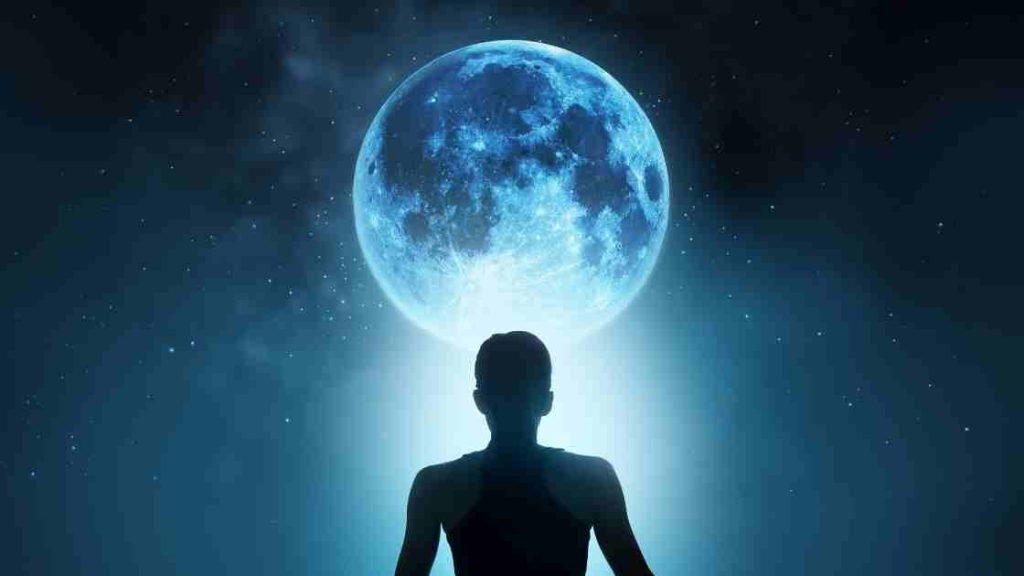
Apotheosis is another word for “the highest point of a person’s spiritual, moral or intellectual development.” It is when the protagonist transcends their humanity and becomes something more than they were before.
In this step of The Hero’s Journey, your protagonist will undergo an important change that brings them closer to being the ideal self they set out to be at the beginning.
In this stage of the Hero’s Journey, our hero learns something new about themselves that prepares them for the hardest part of their journey. This revelation gives them the necessary knowledge to complete their quest.
This step is often referred to as “the answer.” The protagonist will usually gain this new insight from a character who embodies wisdom or spiritual power, such as their mentor figure.
Now that our character has finally grown to where they need to be to accomplish their quest, they are ready for The Ultimate Boon’s next step.

The ultimate boon is the fulfillment of the purpose of the journey. This is when the hero finally achieves what they set out to accomplish.
All of the previous steps of the journey worked to this point to help the hero finally reach their goal.
In mythology, the “boon” is often something otherworldly. It could be the fountain of youth, an ancient scroll with sacred information, or a magical potion.
There are many ways to play out this step of The Hero’s Journey, so your character’s end goal will determine what the boon is.
This step of The Hero’s Journey often includes a battle with something that opposes your protagonist, such as an enemy or villain.
Our heroes might have to face their own dark side to achieve this final prize and complete their journey successfully. This could cause them to question whether or not they even want what the boon is.
When your protagonist achieves this final goal, it marks a major change in their life. Now we are ready to proceed to Act 3: The Return.
Act 3: The Return
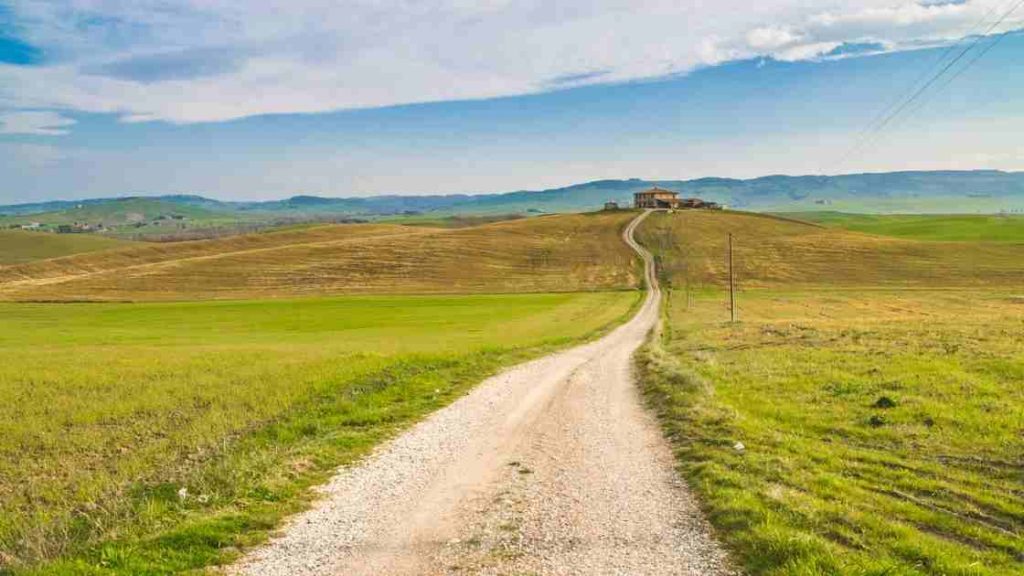
Act Three of the Hero’s Journey often moves faster than the other acts of our story. In The Return, we see how the protagonist’s newfound knowledge and achievement of their goal affect their life and world.
This step of The Hero’s Journey is crucial because it gives us a glimpse as to what our character has learned from this journey, which is the ultimate test of whether they have truly successfully achieved their quest or not.
Let’s dive into the remaining scenes of our story.
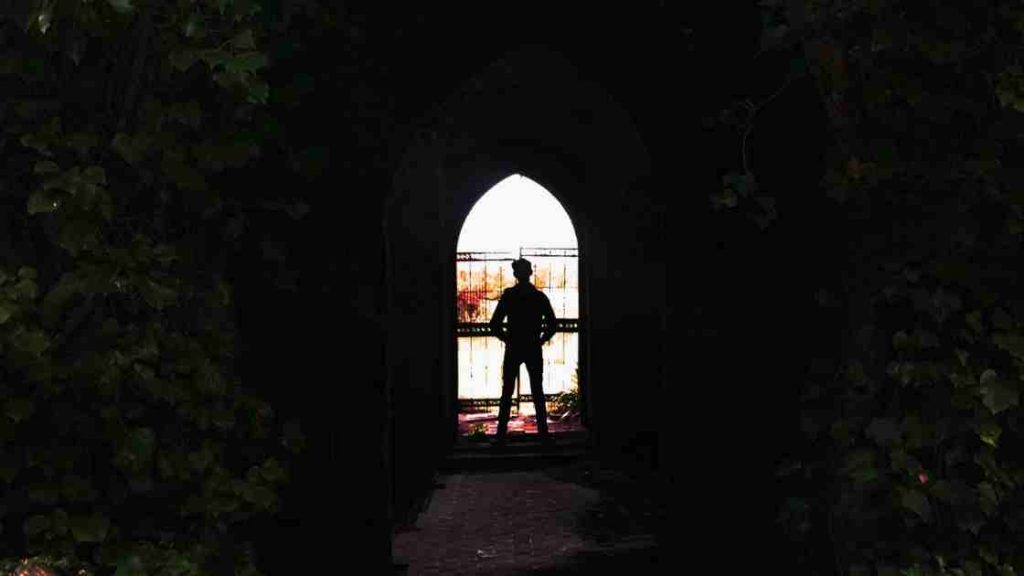
The Refusal of the Return is when our protagonist does not want to return home after achieving their goal. They may be too frightened of what awaits them, or they may not want to give up the new life and world they have found themselves in.
Just as they were hesitant to go on the adventure in the beginning, they are also hesitant to go back.
They may be concerned with how their “boon” might affect the world – such as a magic potion or secret power that could get into the wrong hands. They may worry about what consequences they may face when they go back, or they may be afraid nothing is left for them to return to.
In some cases, our hero doesn’t want to leave because they have become comfortable with their new world and who they have become.
However, to truly finish the quest, our hero must return home. This refusal of return helps build up the tension to the final resolution of the story. This is when the reader questions whether the hero will return home – and wonders with great anticipation of what might happen when it happens.

The Magic Flight is the final conflict to the story where our protagonist must escape danger, sometimes using their newfound knowledge or boon. This is a way of symbolically proving that they have truly learned from this journey and are ready to bring it back home with them.
This part of The Hero’s Journey often involves a chase scene or battle against an opposing force. However, this is the final push necessary push they need to realize they must make the journey home because it becomes apparent they cannot stay where they are.

The Rescue From Without step of the Hero’s Journey is when the protagonist is rescued from danger by an outside source.
This outside source may be an ordinary person, or it might resemble deus ex machina, or god-like intervention, where something rescues our hero from an impossible situation, such as lightning striking that saves the day for our hero.
When you are writing the rescue scene, the circumstances of the rescue must be believable. Most people do not like the deus ex machina in writing simply because it’s too easy.
Those of us who have lived life long enough all know that a magic fairy godmother isn’t going to swoop us in, wave her wand and make all our problems disappear.
After being rescued, the hero truly has no other choice except to return home.

The Crossing of the Return Threshold is when our protagonist finally returns home after completing their adventure and achieving their goal.
This is the part of The Hero’s Journey where we see what they have learned from this journey and how it affects them.
In this story scene, you will want to answer the following questions: How has the hero changed from their journey? How is their old world different from when they left? How do they acclimate to being back home? Finally, how do others react to their return?

This is the part of The Hero’s Journey where our protagonist has reached their full potential. They have overcome their fears and grown in ways they could never have imagined.
They are a new person and have been forever changed by what they’ve experienced. Yet, it allows them to go back into society with heightened wisdom, power, skills, or resources that will help others in need when called upon again.
In this scene, we see the hero apply their knowledge and share it with the world.

After our hero has conquered all of their fears and has put their wisdom to good use, the hero finally has the freedom to do anything they want.
This is the resolution of our story – we see our heroes accomplish their “happily ever after.” Their fears or concerns no longer control them, and nothing exists between them and what they want.
More often than not, this closing chapter of the story gives the reader some closure. We want some type of affirmation that the story is truly complete. We get a glimpse of what our protagonist will do with their life now that they are free to live it.
If you’re looking for a story structure that is proven and effective, the Hero’s Journey might be perfect for you. With 17 stages of development, it will help you create an engaging plot with your readers and develop strong characters .
And of course, while the Hero’s Journey is the classic beat sheet for writers, remember you don’t always have to dedicate one chapter to each step. Sometimes you can combine 2-3 steps in one scene, while other steps might take several chapters to cover.
The important thing is you now know the Hero’s Journey! We hope this is helpful for you – whether you are writing your own novel or studying the Hero’s Journey arc in literature. Most of all, we hope that by breaking down each step of the Hero’s Journey, you can better understand all of it.
Do you have any thoughts or questions on the Hero’s Journey? We’d love to hear from you in the comments section below!
Chelle Stein wrote her first embarrassingly bad novel at the age of 14 and hasn't stopped writing since. As the founder of ThinkWritten, she enjoys encouraging writers and creatives of all types.
Similar Posts

How to Outline a Novel Plot in 5 Easy Steps

How to Avoid Over Planning Your Novel
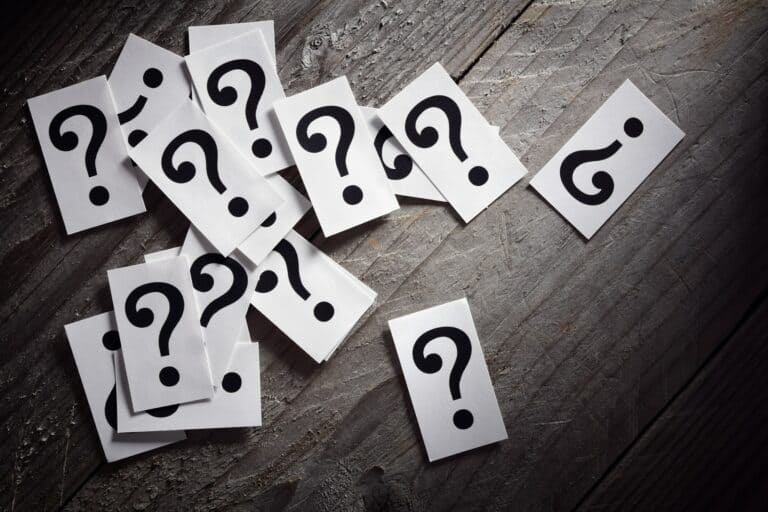
160+ Character Development Questions & Free Printable Worksheet
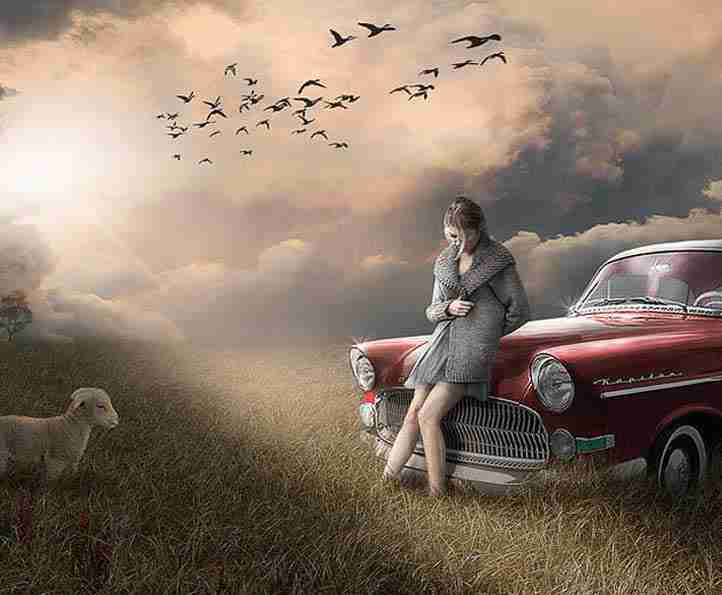
Character Development: How to Write Strong Characters in Your Novel

Main Character vs. Supporting Characters in Story Development
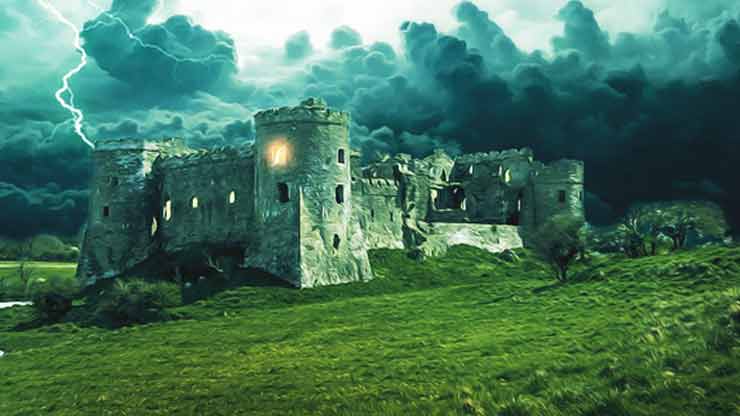
5 Signs of a Strong Novel Plot
So if you’re writing an epic fantasy that will be a series, are these 17 steps strung out across the entire series, or redone in each book?
Thank you for such a helpful article. This has helped me fill in a glaring hole in my novel outline and shown me what was missing. I’m really grateful for this advice.
Glad it was helpful for you Laura!
Leave a Reply Cancel reply
Your email address will not be published. Required fields are marked *
Save my name, email, and website in this browser for the next time I comment.
- Features for Creative Writers
- Features for Work
- Features for Higher Education
- Features for Teachers
- Features for Non-Native Speakers
- Learn Blog Grammar Guide Community Events FAQ
- Grammar Guide
Hero's Journey 101: How to Use the Hero's Journey to Plot Your Story

Dan Schriever

How many times have you heard this story? A protagonist is suddenly whisked away from their ordinary life and embarks on a grand adventure. Along the way they make new friends, confront perils, and face tests of character. In the end, evil is defeated, and the hero returns home a changed person.
That’s the Hero’s Journey in a nutshell. It probably sounds very familiar—and rightly so: the Hero’s Journey aspires to be the universal story, or monomyth, a narrative pattern deeply ingrained in literature and culture. Whether in books, movies, television, or folklore, chances are you’ve encountered many examples of the Hero’s Journey in the wild.
In this post, we’ll walk through the elements of the Hero’s Journey step by step. We’ll also study an archetypal example from the movie The Matrix (1999). Once you have mastered the beats of this narrative template, you’ll be ready to put your very own spin on it.
Sound good? Then let’s cross the threshold and let the journey begin.
What Is the Hero’s Journey?
The 12 stages of the hero’s journey, writing your own hero’s journey.
The Hero’s Journey is a common story structure for modeling both plot points and character development. A protagonist embarks on an adventure into the unknown. They learn lessons, overcome adversity, defeat evil, and return home transformed.

Joseph Campbell , a scholar of literature, popularized the monomyth in his influential work The Hero With a Thousand Faces (1949). Looking for common patterns in mythological narratives, Campbell described a character arc with 17 total stages, overlaid on a more traditional three-act structure. Not all need be present in every myth or in the same order.
The three stages, or acts, of Campbell’s Hero’s Journey are as follows:
1. Departure. The hero leaves the ordinary world behind.
2. Initiation. The hero ventures into the unknown ("the Special World") and overcomes various obstacles and challenges.
3. Return. The hero returns in triumph to the familiar world.
Hollywood has embraced Campbell’s structure, most famously in George Lucas’s Star Wars movies. There are countless examples in books, music, and video games, from fantasy epics and Disney films to sports movies.
In The Writer’s Journey: Mythic Structure for Writers (1992), screenwriter Christopher Vogler adapted Campbell’s three phases into the "12 Stages of the Hero’s Journey." This is the version we’ll analyze in the next section.

For writers, the purpose of the Hero’s Journey is to act as a template and guide. It’s not a rigid formula that your plot must follow beat by beat. Indeed, there are good reasons to deviate—not least of which is that this structure has become so ubiquitous.
Still, it’s helpful to master the rules before deciding when and how to break them. The 12 steps of the Hero's Journey are as follows :
- The Ordinary World
- The Call of Adventure
- Refusal of the Call
- Meeting the Mentor
- Crossing the First Threshold
- Tests, Allies, and Enemies
- Approach to the Inmost Cave
- Reward (Seizing the Sword)
- The Road Back
- Resurrection
- Return with the Elixir
Let’s take a look at each stage in more detail. To show you how the Hero’s Journey works in practice, we’ll also consider an example from the movie The Matrix (1999). After all, what blog has not been improved by a little Keanu Reeves?

#1: The Ordinary World
This is where we meet our hero, although the journey has not yet begun: first, we need to establish the status quo by showing the hero living their ordinary, mundane life.
It’s important to lay the groundwork in this opening stage, before the journey begins. It lets readers identify with the hero as just a regular person, “normal” like the rest of us. Yes, there may be a big problem somewhere out there, but the hero at this stage has very limited awareness of it.
The Ordinary World in The Matrix :
We are introduced to Thomas A. Anderson, aka Neo, programmer by day, hacker by night. While Neo runs a side operation selling illicit software, Thomas Anderson lives the most mundane life imaginable: he works at his cubicle, pays his taxes, and helps the landlady carry out her garbage.
#2: The Call to Adventure
The journey proper begins with a call to adventure—something that disrupts the hero’s ordinary life and confronts them with a problem or challenge they can’t ignore. This can take many different forms.
While readers may already understand the stakes, the hero is realizing them for the first time. They must make a choice: will they shrink from the call, or rise to the challenge?
The Call to Adventure in The Matrix :
A mysterious message arrives in Neo’s computer, warning him that things are not as they seem. He is urged to “follow the white rabbit.” At a nightclub, he meets Trinity, who tells him to seek Morpheus.
#3: Refusal of the Call
Oops! The hero chooses option A and attempts to refuse the call to adventure. This could be for any number of reasons: fear, disbelief, a sense of inadequacy, or plain unwillingness to make the sacrifices that are required.
A little reluctance here is understandable. If you were asked to trade the comforts of home for a life-and-death journey fraught with peril, wouldn’t you give pause?
Refusal of the Call in The Matrix :
Agents arrive at Neo’s office to arrest him. Morpheus urges Neo to escape by climbing out a skyscraper window. “I can’t do this… This is crazy!” Neo protests as he backs off the ledge.

#4: Meeting the Mentor
Okay, so the hero got cold feet. Nothing a little pep talk can’t fix! The mentor figure appears at this point to give the hero some much needed counsel, coaching, and perhaps a kick out the door.
After all, the hero is very inexperienced at this point. They’re going to need help to avoid disaster or, worse, death. The mentor’s role is to overcome the hero’s reluctance and prepare them for what lies ahead.
Meeting the Mentor in The Matrix :
Neo meets with Morpheus, who reveals a terrifying truth: that the ordinary world as we know it is a computer simulation designed to enslave humanity to machines.
#5: Crossing the First Threshold
At this juncture, the hero is ready to leave their ordinary world for the first time. With the mentor’s help, they are committed to the journey and ready to step across the threshold into the special world . This marks the end of the departure act and the beginning of the adventure in earnest.
This may seem inevitable, but for the hero it represents an important choice. Once the threshold is crossed, there’s no going back. Bilbo Baggins put it nicely: “It’s a dangerous business, Frodo, going out your door. You step onto the road, and if you don't keep your feet, there's no knowing where you might be swept off to.”
Crossing the First Threshold in The Matrix :
Neo is offered a stark choice: take the blue pill and return to his ordinary life none the wiser, or take the red pill and “see how deep the rabbit hole goes.” Neo takes the red pill and is extracted from the Matrix, entering the real world .
#6: Tests, Allies, and Enemies
Now we are getting into the meat of the adventure. The hero steps into the special world and must learn the new rules of an unfamiliar setting while navigating trials, tribulations, and tests of will. New characters are often introduced here, and the hero must navigate their relationships with them. Will they be friend, foe, or something in between?
Broadly speaking, this is a time of experimentation and growth. It is also one of the longest stages of the journey, as the hero learns the lay of the land and defines their relationship to other characters.
Wondering how to create captivating characters? Read our guide , which explains how to shape characters that readers will love—or hate.
Tests, Allies, and Enemies in The Matrix :
Neo is introduced to the vagabond crew of the Nebuchadnezzar . Morpheus informs Neo that he is The One , a savior destined to liberate humanity. He learns jiu jitsu and other useful skills.
#7: Approach to the Inmost Cave

Time to get a little metaphorical. The inmost cave isn’t a physical cave, but rather a place of great danger—indeed, the most dangerous place in the special world . It could be a villain’s lair, an impending battle, or even a mental barrier. No spelunking required.
Broadly speaking, the approach is marked by a setback in the quest. It becomes a lesson in persistence, where the hero must reckon with failure, change their mindset, or try new ideas.
Note that the hero hasn’t entered the cave just yet. This stage is about the approach itself, which the hero must navigate to get closer to their ultimate goal. The stakes are rising, and failure is no longer an option.
Approach to the Inmost Cave in The Matrix :
Neo pays a visit to The Oracle. She challenges Neo to “know thyself”—does he believe, deep down, that he is The One ? Or does he fear that he is “just another guy”? She warns him that the fate of humanity hangs in the balance.
#8: The Ordeal
The ordeal marks the hero’s greatest test thus far. This is a dark time for them: indeed, Campbell refers to it as the “belly of the whale.” The hero experiences a major hurdle or obstacle, which causes them to hit rock bottom.
This is a pivotal moment in the story, the main event of the second act. It is time for the hero to come face to face with their greatest fear. It will take all their skills to survive this life-or-death crisis. Should they succeed, they will emerge from the ordeal transformed.
Keep in mind: the story isn’t over yet! Rather, the ordeal is the moment when the protagonist overcomes their weaknesses and truly steps into the title of hero .
The Ordeal in The Matrix :
When Cipher betrays the crew to the agents, Morpheus sacrifices himself to protect Neo. In turn, Neo makes his own choice: to risk his life in a daring rescue attempt.
#9: Reward (Seizing the Sword)
The ordeal was a major level-up moment for the hero. Now that it's been overcome, the hero can reap the reward of success. This reward could be an object, a skill, or knowledge—whatever it is that the hero has been struggling toward. At last, the sword is within their grasp.
From this moment on, the hero is a changed person. They are now equipped for the final conflict, even if they don’t fully realize it yet.
Reward (Seizing the Sword) in The Matrix :
Neo’s reward is helpfully narrated by Morpheus during the rescue effort: “He is beginning to believe.” Neo has gained confidence that he can fight the machines, and he won’t back down from his destiny.

#10: The Road Back
We’re now at the beginning of act three, the return . With the reward in hand, it’s time to exit the inmost cave and head home. But the story isn’t over yet.
In this stage, the hero reckons with the consequences of act two. The ordeal was a success, but things have changed now. Perhaps the dragon, robbed of his treasure, sets off for revenge. Perhaps there are more enemies to fight. Whatever the obstacle, the hero must face them before their journey is complete.
The Road Back in The Matrix :
The rescue of Morpheus has enraged Agent Smith, who intercepts Neo before he can return to the Nebuchadnezzar . The two foes battle in a subway station, where Neo’s skills are pushed to their limit.
#11: Resurrection
Now comes the true climax of the story. This is the hero’s final test, when everything is at stake: the battle for the soul of Gotham, the final chance for evil to triumph. The hero is also at the peak of their powers. A happy ending is within sight, should they succeed.
Vogler calls the resurrection stage the hero’s “final exam.” They must draw on everything they have learned and prove again that they have really internalized the lessons of the ordeal . Near-death escapes are not uncommon here, or even literal deaths and resurrections.
Resurrection in The Matrix :
Despite fighting valiantly, Neo is defeated by Agent Smith and killed. But with Trinity’s help, he is resurrected, activating his full powers as The One . Isn’t it wonderful how literal The Matrix can be?
#12: Return with the Elixir
Hooray! Evil has been defeated and the hero is transformed. It’s time for the protagonist to return home in triumph, and share their hard-won prize with the ordinary world . This prize is the elixir —the object, skill, or insight that was the hero’s true reward for their journey and transformation.
Return with the Elixir in The Matrix :
Neo has defeated the agents and embraced his destiny. He returns to the simulated world of the Matrix, this time armed with god-like powers and a resolve to open humanity’s eyes to the truth.

If you’re writing your own adventure, you may be wondering: should I follow the Hero’s Journey structure?
The good news is, it’s totally up to you. Joseph Campbell conceived of the monomyth as a way to understand universal story structure, but there are many ways to outline a novel. Feel free to play around within its confines, adapt it across different media, and disrupt reader expectations. It’s like Morpheus says: “Some of these rules can be bent. Others can be broken.”
Think of the Hero’s Journey as a tool. If you’re not sure where your story should go next, it can help to refer back to the basics. From there, you’re free to choose your own adventure.
Are you prepared to write your novel? Download this free book now:


The Novel-Writing Training Plan
So you are ready to write your novel. excellent. but are you prepared the last thing you want when you sit down to write your first draft is to lose momentum., this guide helps you work out your narrative arc, plan out your key plot points, flesh out your characters, and begin to build your world..

Be confident about grammar
Check every email, essay, or story for grammar mistakes. Fix them before you press send.
Dan holds a PhD from Yale University and CEO of FaithlessMTG
Get started with ProWritingAid
Drop us a line or let's stay in touch via :
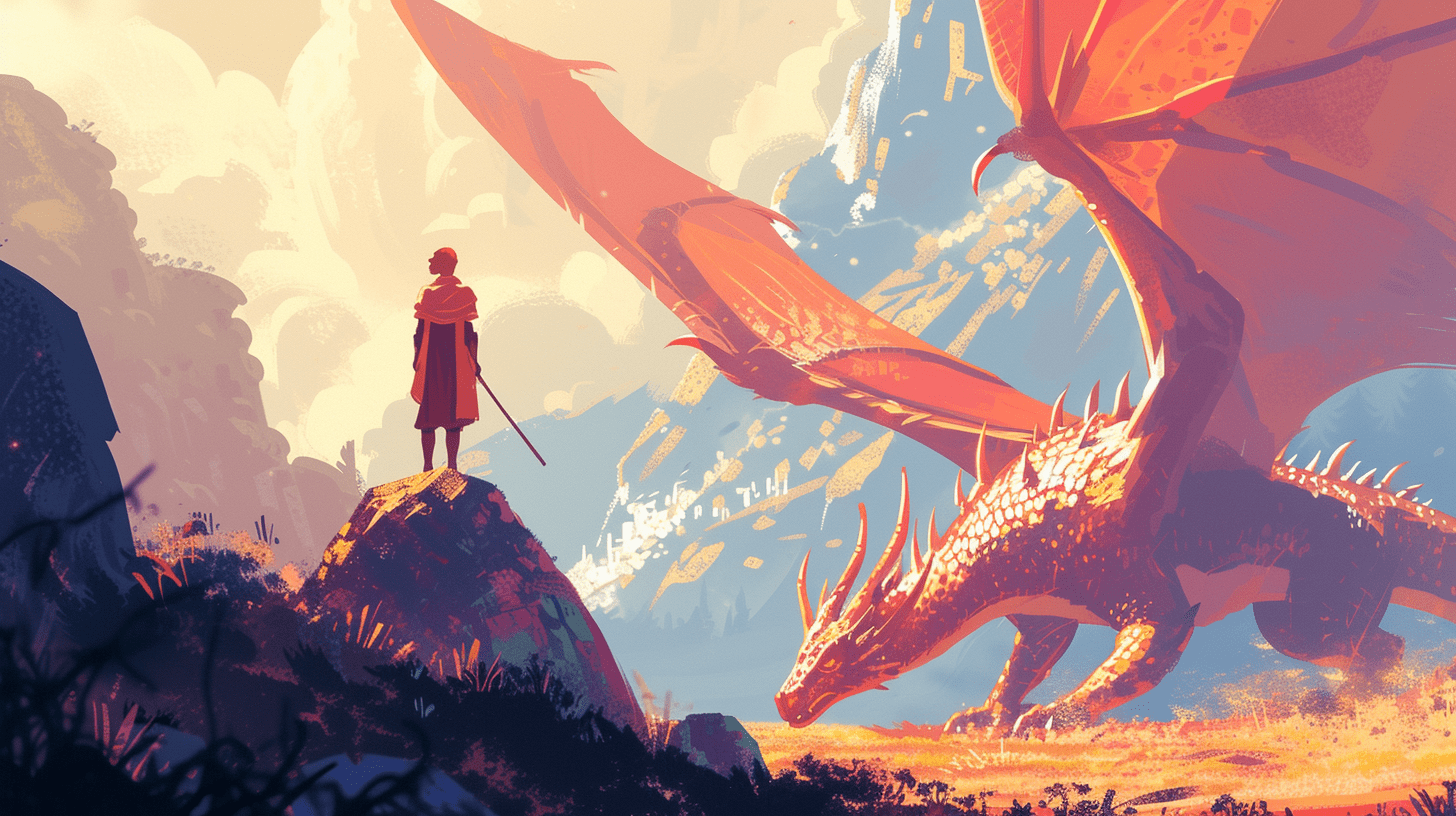
Mastering The Hero's Journey: A Comprehensive Guide To Storytelling Success
Table of Contents
Origins of the Hero's Journey
The three-act structure, the 12 stages of the hero's journey, key archetypes in the hero's journey, the inner and outer journey, applying the hero's journey to your story, adaptations and variations of the hero's journey, case studies: the hero's journey in popular fiction, common mistakes and how to avoid them, writing tips for crafting a compelling hero's journey, frequently asked questions, further reading.
The concept of the Hero's Journey can be traced back to the work of renowned mythologist Joseph Campbell . In his seminal book, The Hero with a Thousand Faces (1949), Campbell examined myths and stories from various cultures around the world and identified a common narrative pattern that he dubbed the "monomyth."
According to Campbell, the monomyth is a universal story template that transcends time, culture, and geography. It consists of a series of stages that a hero must go through in order to fulfill their destiny or complete their quest. Campbell drew inspiration for this concept from the works of prominent scholars such as Carl Jung , whose theories on archetypes and the collective unconscious greatly influenced his thinking.
Another significant influence on Campbell's work was James Frazer , who studied comparative mythology and religion in his groundbreaking book, The Golden Bough (1890). Frazer's work helped Campbell recognize the similarities between myths from different cultures and formulate the idea of a shared, underlying narrative structure.
In The Hero with a Thousand Faces , Campbell outlined the basic structure of the monomyth, which he divided into three main stages: Departure, Initiation, and Return. These stages encompass various sub-stages that the hero encounters on their journey, creating a blueprint for the Hero's Journey that can be applied to countless stories.
While Campbell's work focused primarily on myths and legends, the Hero's Journey has been widely adopted by writers and filmmakers in crafting their narratives. Some of the most successful books and movies, such as Star Wars and The Lord of the Rings , have followed the basic structure of the monomyth, proving the enduring appeal of this timeless narrative framework.
Over the years, the Hero's Journey has been refined and expanded upon by other scholars and writers, most notably Christopher Vogler , who adapted Campbell's ideas for use in modern storytelling in his book The Writer's Journey: Mythic Structure for Writers (1992). Vogler's work has made the Hero's Journey more accessible to contemporary writers, ensuring its continued relevance in the world of storytelling.
The Three-Act Structure is a widely-used storytelling model that divides a narrative into three distinct parts or "acts": Setup, Confrontation, and Resolution. This model has its roots in classical drama and has been adapted for use in modern storytelling, particularly in the realms of screenwriting and novel writing. The Three-Act Structure provides a framework for pacing and plot development, helping writers create a well-structured and engaging narrative.
Act One: Setup
The first act of a story serves to introduce the main characters, establish the setting, and provide important background information. During this act, the protagonist is typically confronted with an inciting incident that sets the story in motion and propels them into the main conflict. This act ends with a turning point or "plot point" that pushes the protagonist into the second act.
In the context of the Hero's Journey, Act One corresponds to the Departure stage, which includes elements such as the Call to Adventure, Refusal of the Call, and the Meeting with the Mentor. These events set the stage for the hero's transformation and the challenges they will face throughout their journey.
Act Two: Confrontation
The second act, often referred to as the "rising action," sees the protagonist facing a series of obstacles and challenges as they pursue their goal. This is the longest part of the story, as it delves into the hero's struggles, their growth, and their relationships with other characters. The second act also features a turning point or "midpoint" that raises the stakes and heightens the tension. This act concludes with another major plot point, often involving a crisis or setback for the protagonist, propelling them into the final act.
In the Hero's Journey, Act Two encompasses the Initiation stage, with events such as the Road of Trials, the Approach to the Inmost Cave, and the Ordeal. These challenges test the hero's mettle, forcing them to confront their fears, learn important lessons, and acquire the skills they need to succeed in their quest.
Act Three: Resolution
The third and final act of a story focuses on the resolution of the conflict and the protagonist's ultimate transformation. The climax of the story typically occurs near the beginning of this act, as the hero faces their final challenge or confrontation with the antagonist. After the climax, the story moves into the "falling action," where loose ends are tied up, and the consequences of the protagonist's actions are revealed. The story concludes with the "denouement," which provides closure and shows how the characters have been affected by the events of the story.
In the context of the Hero's Journey, Act Three corresponds to the Return stage, featuring events such as the Resurrection, the Atonement with the Father, and the Freedom to Live. These elements signify the hero's completion of their quest, their reconciliation with their past, and their newfound ability to live a more fulfilled and authentic life.
By following the Three-Act Structure, writers can effectively pace their stories and ensure that the narrative remains engaging and satisfying for their audience. When combined with the stages and elements of the Hero's Journey, this structure provides a powerful blueprint for crafting compelling and resonant tales.
While the Hero's Journey can be broken down into the Three-Act Structure, it is often further divided into 12 distinct stages that the hero must go through during their quest. These stages, as described by Joseph Campbell and adapted by Christopher Vogler, provide a more detailed roadmap for writers seeking to create a compelling Hero's Journey narrative. The 12 stages are as follows:
- The Ordinary World : This stage establishes the protagonist's normal life before their adventure begins. It provides important context and allows the audience to become familiar with the hero's circumstances, values, and motivations. ( source )
- The Call to Adventure : The hero is confronted with an event or challenge that disrupts their ordinary world and sets the stage for their adventure. This call can take many forms, such as a threat, a discovery, or a personal loss. ( source )
- Refusal of the Call : Initially, the hero may be hesitant or resistant to embark on their journey, often due to fear, doubt, or a sense of obligation to their ordinary world. This stage highlights the hero's internal conflict and the stakes involved in their decision. ( source )
- Meeting the Mentor : The hero encounters a wise figure or guide who provides advice, guidance, or magical assistance to help them on their journey. This mentor figure can take various forms, such as a teacher, a parent, or even a supernatural being. ( source )
- Crossing the Threshold : The hero makes the decision to leave their ordinary world and fully commit to their adventure. This stage signifies the hero's acceptance of the call to adventure and their willingness to face the unknown. ( source )
- Tests, Allies, and Enemies : As the hero embarks on their journey, they encounter a series of obstacles, challenges, and antagonistic forces. They must also forge alliances with other characters who can help them along the way. This stage serves to develop the hero's character, test their resolve, and teach them valuable lessons. ( source )
- Approach to the Inmost Cave : The hero prepares for the central crisis or ordeal of their journey, often involving a confrontation with their greatest fear or the story's main antagonist. This stage often involves a period of introspection and reflection, as the hero gathers their strength and resources for the upcoming challenge. ( source )
- The Ordeal : The hero faces their most difficult challenge, which often involves a life-or-death situation or a confrontation with their greatest fear. This stage serves as the climax of the story and represents the hero's transformation, as they must overcome their inner and outer demons to succeed. ( source )
- Reward (Seizing the Sword) : After overcoming the ordeal, the hero receives a reward, which could be a physical object, a piece of knowledge, or personal growth. This stage signifies the hero's victory and the attainment of their goal. ( source )
- The Road Back : The hero begins their journey back to the ordinary world, often with a renewed sense of purpose and the knowledge or reward they gained during their adventure. This stage can involve additional challenges, as the hero's transformation may be met with resistance from their ordinary world. ( source )
- Resurrection : The hero faces a final test or confrontation that represents the culmination of their character growth and the ultimate resolution of the story's conflict. This stage often involves a symbolic "death" and "rebirth" for the hero, signifying their transformation and newfound wisdom. ( source )
- Return with the Elixir : The hero returns to their ordinary world, having been transformed by their experiences and armed with the knowledge or reward they gained during their journey. This stage signifies the completion of the Hero's Journey and the hero's newfound ability to make a positive impact on their world. ( source )
By incorporating these 12 stages into their narrative, writers can craft a rich and satisfying Hero's Journey that resonates with audiences and follows a time-tested pattern of storytelling.
In addition to the 12 stages, the Hero's Journey also features several key archetypes that frequently appear in these narratives. These archetypes, derived from the work of Carl Jung and popularized by Joseph Campbell, represent universal symbols and character types that resonate with audiences across cultures and time periods. By incorporating these archetypes into their story, writers can create a rich and engaging narrative that taps into the human psyche. Some of the most common archetypes in the Hero's Journey include:
- The Hero : The protagonist of the story, who embarks on a journey to achieve a goal or resolve a conflict. The hero undergoes a transformation, often involving personal growth, self-discovery, and the acquisition of new skills or knowledge. ( source )
- The Mentor : A wise and experienced figure who provides guidance, support, and knowledge to the hero. The mentor often possesses valuable information or abilities that the hero needs to complete their journey. ( source )
- The Threshold Guardian : A character or obstacle that tests the hero's resolve and commitment to their journey. Threshold guardians often appear at the beginning of the adventure, forcing the hero to prove their worth and overcome their initial fears or doubts. ( source )
- The Herald : A character or event that signals the beginning of the hero's journey and delivers the Call to Adventure. The herald may also appear later in the story to announce important events or changes. ( source )
- The Shapeshifter : A character whose allegiance, motives, or appearance are uncertain or subject to change. The shapeshifter often serves to create tension and intrigue within the story, as the hero and the audience are left unsure of their true intentions. ( source )
- The Shadow : The antagonist or opposing force in the story, often representing the hero's greatest fears, flaws, or challenges. The shadow serves as a foil to the hero, highlighting their weaknesses and forcing them to confront their inner demons. ( source )
- The Ally : A character who aids and supports the hero on their journey, often providing companionship, advice, or practical assistance. Allies can take many forms, from loyal friends to unlikely partners, and help the hero overcome the obstacles they face. ( source )
- The Trickster : A character who uses wit, cunning, or humor to challenge the status quo and disrupt the established order. The trickster often serves as comic relief, but can also play a more significant role in the hero's journey by introducing new perspectives or forcing the hero to question their assumptions. ( source )
Understanding these key archetypes can help writers create well-rounded characters and engaging narratives that resonate with their audience. By incorporating these archetypes into their Hero's Journey, writers can tap into universal themes and symbols that have captivated readers and viewers for generations.
The Hero's Journey is not just a physical quest but also a psychological one, often referred to as the Inner and Outer Journey. The Outer Journey represents the hero's external actions and experiences, while the Inner Journey delves into their emotional growth, personal development, and the transformation of their beliefs and values. Understanding these two aspects of the Hero's Journey can help writers create a more nuanced and emotionally resonant narrative. Here is an overview of the Inner and Outer Journey in relation to the Hero's Journey:
The Outer Journey
The Outer Journey focuses on the hero's physical actions, experiences, and obstacles they encounter throughout their adventure. This journey is primarily plot-driven and involves the hero's progression through the various stages of the Hero's Journey, such as the Call to Adventure, the Ordeal, and the Return with the Elixir. The Outer Journey often includes the following elements:
- Action and adventure
- Conflict and resolution
- Settings and world-building
- Interaction with other characters
Writers can use the Outer Journey to create engaging and dynamic narratives that keep the audience invested in the hero's plight and the outcome of their quest. ( source )
The Inner Journey
The Inner Journey delves into the hero's psychological and emotional transformation, which is often closely intertwined with the events of the Outer Journey. This journey is primarily character-driven and explores the hero's internal struggles, personal growth, and the evolution of their beliefs and values. The Inner Journey often includes the following elements:
- Character development and growth
- Emotional arcs and conflicts
- Inner demons and fears
- Moral dilemmas and choices
By incorporating the Inner Journey into their narrative, writers can create complex and relatable characters that resonate with their audience on a deeper, more personal level. ( source )
Both the Inner and Outer Journey are integral components of the Hero's Journey, and a successful narrative will weave these two aspects together to create a compelling and emotionally satisfying story. By understanding the interplay between the hero's external actions and their internal growth, writers can create a more nuanced and engaging Hero's Journey that resonates with their audience.
Now that you have a thorough understanding of the Hero's Journey and its various components, it's time to apply this framework to your own story. By incorporating the 12 stages, key archetypes, and the Inner and Outer Journey into your narrative, you can create a rich and engaging story that resonates with your audience. Here are some practical tips and guidelines for applying the Hero's Journey to your story:
1. Identify your hero
Start by identifying your protagonist or hero, the character who will embark on the journey and undergo a transformation. Consider their background, motivations, and personal flaws, as these elements will shape their journey and influence their character development. ( source )
2. Define the Call to Adventure
Determine the inciting incident or Call to Adventure that will propel your hero into their journey. This event should create a sense of urgency, challenge the hero's status quo, and set the stage for their transformation. ( source )
3. Outline the stages of the journey
Using the 12 stages of the Hero's Journey as a guide, outline the key events and turning points in your story. Consider how each stage contributes to the hero's growth and transformation, and ensure that your narrative follows a logical and satisfying arc. ( source )
4. Develop your archetypes
Introduce the key archetypes that will populate your story, such as the Mentor, the Threshold Guardian, and the Shadow. Consider how each archetype can contribute to the hero's journey and help to shape their character development. ( source )
5. Balance the Inner and Outer Journey
Ensure that your story effectively balances the hero's Inner and Outer Journey, weaving together their emotional growth and external experiences into a cohesive narrative. Consider how the events of the Outer Journey influence the hero's Inner Journey and vice versa, and use this interplay to create a compelling and emotionally resonant story. ( source )
6. Revise and refine your story
Once you have applied the Hero's Journey framework to your story, review and revise your narrative to ensure that it adheres to the principles of the Hero's Journey while remaining true to your unique vision and voice. Consider seeking feedback from others, such as critique partners, beta readers, or professional editors, to help you refine your story and bring it to its full potential. ( source )
By following these guidelines and incorporating the Hero's Journey into your narrative, you can create a rich and engaging story that resonates with your audience and follows a time-tested pattern of storytelling success.
While the Hero's Journey provides a useful framework for storytelling, it's important to recognize that not all stories will follow this structure exactly. Over time, various adaptations and variations of the Hero's Journey have emerged, offering different perspectives and approaches to storytelling. By exploring these adaptations, writers can gain a broader understanding of the narrative possibilities and apply these insights to their own work. Here are some notable adaptations and variations of the Hero's Journey:
1. The Heroine's Journey
The Heroine's Journey, first proposed by Maureen Murdock in her book "The Heroine's Journey: Woman's Quest for Wholeness," offers a gendered perspective on the Hero's Journey, focusing on the unique challenges and experiences faced by female protagonists. The Heroine's Journey emphasizes the importance of relationships, self-discovery, and the integration of masculine and feminine qualities within the individual. ( source )
2. The Writer's Journey
Christopher Vogler's "The Writer's Journey: Mythic Structure for Writers" adapts the Hero's Journey for screenwriters and novelists, condensing Campbell's 17 stages into a more streamlined 12-stage structure. Vogler's adaptation has been widely embraced by the writing community and is particularly influential in the world of screenwriting. ( source )
3. The Virgin's Promise
Kim Hudson's "The Virgin's Promise" offers an alternative narrative structure that focuses on the protagonist's journey towards self-fulfillment and personal empowerment, rather than a quest to save others or restore balance to the world. The Virgin's Promise is particularly relevant to stories featuring female protagonists and themes of personal growth and transformation. ( source )
4. The Anti-Hero's Journey
The Anti-Hero's Journey explores the narrative arc of protagonists who do not possess traditional heroic qualities, such as moral integrity, courage, or selflessness. The Anti-Hero's Journey may involve a more morally ambiguous or complex character, who may not ultimately achieve redemption or success in the conventional sense.
5. The Collective Journey
The Collective Journey, as proposed by Jeff Gomez, focuses on the interconnected and collaborative nature of modern storytelling, particularly in transmedia narratives and shared storyworlds. In the Collective Journey, the focus shifts from the individual hero to a diverse ensemble of characters, each contributing to the narrative in unique and meaningful ways. ( source )
By exploring these adaptations and variations of the Hero's Journey, writers can gain a broader understanding of the possibilities for storytelling and create narratives that reflect their unique perspective and voice. Remember that the Hero's Journey is not a rigid formula, but rather a flexible framework that can be adapted and modified to suit the needs of your story and your characters.
To further illustrate the power and versatility of the Hero's Journey, let's examine some case studies of popular fiction that employ this narrative structure. By analyzing these examples, you can gain a deeper understanding of how the Hero's Journey can be applied to various genres, mediums, and story types.
1. The Lord of the Rings by J.R.R. Tolkien
Tolkien's epic fantasy trilogy is a prime example of the Hero's Journey, with its protagonist Frodo Baggins embarking on a quest to destroy the One Ring and save Middle-earth. The story follows the classic stages of the Hero's Journey, with Frodo facing numerous trials, allies, and enemies along the way, ultimately transforming from a humble Hobbit into a hero capable of great courage and sacrifice. ( source )
2. The Harry Potter series by J.K. Rowling
Rowling's beloved fantasy series follows the young wizard Harry Potter as he embarks on a journey to defeat the dark wizard Voldemort. Over the course of the series, Harry undergoes the stages of the Hero's Journey, from the Call to Adventure (receiving his Hogwarts letter) to the Ordeal (battling Voldemort) and the Return with the Elixir (restoring peace to the wizarding world). The series also features a rich cast of archetypal characters, such as the Mentor (Dumbledore), the Shadow (Voldemort), and the Shapeshifter (Snape). ( source )
3. The Hunger Games trilogy by Suzanne Collins
Collins' dystopian series follows the journey of Katniss Everdeen, a young woman who becomes the symbol of rebellion against a tyrannical government. Katniss' journey reflects the Hero's Journey, as she faces trials in the Hunger Games arena, encounters allies and enemies, and ultimately leads a revolution to overthrow the Capitol. The series also incorporates elements of the Heroine's Journey, exploring themes of personal growth, relationships, and the integration of masculine and feminine qualities. ( source )
4. Star Wars by George Lucas
George Lucas' iconic space opera is heavily influenced by Joseph Campbell's work on the Hero's Journey, with its protagonist Luke Skywalker embarking on a quest to become a Jedi and defeat the evil Empire. The original Star Wars trilogy follows the stages of the Hero's Journey, with Luke undergoing a transformation from a simple farm boy to a powerful Jedi Knight. The series also features a cast of archetypal characters, such as the Mentor (Obi-Wan Kenobi), the Shadow (Darth Vader), and the Trickster (Han Solo). ( source )
These case studies demonstrate the enduring appeal and versatility of the Hero's Journey as a narrative structure. By applying the principles of the Hero's Journey to your own work, you can create compelling stories that resonate with audiences across genres, mediums, and cultures.
While the Hero's Journey can be a powerful tool for storytelling, it's essential to avoid some common mistakes when applying this framework to your work. By recognizing these pitfalls and taking steps to avoid them, you can create a more engaging and original story that stands out in today's competitive market. Here are some common mistakes and tips for avoiding them:
1. Rigid adherence to the Hero's Journey
One of the most common mistakes writers make is treating the Hero's Journey as a rigid formula rather than a flexible framework. It's important to remember that not every story will follow the Hero's Journey exactly, and forcing your narrative to adhere to this structure can result in a predictable and uninspired story. Instead, use the Hero's Journey as a guide and adapt it to suit your unique vision and characters. ( source )
2. Stereotypical characters and archetypes
While the Hero's Journey relies on certain archetypal characters, it's essential to avoid creating one-dimensional, stereotypical characters that lack depth and complexity. Instead, strive to develop nuanced and multifaceted characters that challenge audience expectations and engage their emotions. This will result in a richer and more satisfying story. ( source )
3. Neglecting the Inner Journey
Another common mistake is focusing solely on the external events of the Hero's Journey and neglecting the protagonist's emotional growth and transformation. To create a truly compelling story, it's essential to balance the Inner and Outer Journey, ensuring that your hero's emotional development is intertwined with their external experiences. This will result in a more emotionally resonant and satisfying narrative. ( source )
4. Overemphasis on action and spectacle
While the Hero's Journey often involves high-stakes action and conflict, it's essential not to let these elements overshadow the emotional core of your story. Instead, focus on your characters' relationships, motivations, and personal growth, ensuring that the action and spectacle serve to enhance the emotional stakes and drive the narrative forward. ( source )
5. Ignoring cultural context and diversity
Finally, it's important to recognize that the Hero's Journey is rooted in a specific cultural context and may not apply universally to all stories and cultures. When crafting your narrative, be mindful of cultural diversity and strive to create stories that reflect and celebrate the rich tapestry of human experience. This will result in a more inclusive and engaging story that resonates with a broader audience. ( source )
By avoiding these common mistakes and applying the principles of the Hero's Journey thoughtfully and creatively, you can craft a powerful and engaging story that stands out in today's competitive market and resonates with your audience.
Creating a compelling Hero's Journey requires a thoughtful approach to storytelling, character development, and narrative structure. To help you craft a memorable and engaging story, consider these writing tips:
1. Understand the foundation of the Hero's Journey
Before attempting to write a Hero's Journey, familiarize yourself with the fundamental concepts, stages, and archetypes outlined by Joseph Campbell and other scholars. This will provide a solid foundation for crafting your narrative and help you identify the essential elements of your story. ( source )
2. Develop compelling characters
Creating engaging, multidimensional characters is essential for a successful Hero's Journey. Focus on developing your protagonist, as well as the supporting cast of allies, enemies, and mentors, ensuring that each character is unique, relatable, and serves a purpose within the narrative.
3. Focus on emotional stakes
The emotional stakes of your story are crucial to maintaining reader engagement and investment in the Hero's Journey. Strive to create a narrative with high emotional stakes, where the protagonist's personal growth and relationships are intertwined with their external quest. ( source )
4. Use the Hero's Journey as a guide, not a template
While the Hero's Journey provides a useful framework for crafting your story, avoid treating it as a rigid formula. Instead, use the Hero's Journey as a starting point and adapt it to suit your unique vision, characters, and genre. This will result in a more original and engaging narrative. ( source )
To create a satisfying and well-rounded narrative, it's essential to balance the Inner Journey (the protagonist's emotional growth) with the Outer Journey (their external quest). Ensure that both aspects of the Hero's Journey are interconnected and contribute to the protagonist's overall transformation. ( source )
6. Embrace diversity and cultural context
When crafting your Hero's Journey, be mindful of cultural diversity and consider incorporating elements from various myths, legends, and cultural traditions. This will enrich your narrative and help it resonate with a broader audience. ( source )
7. Revise, revise, revise
Finally, remember that writing a compelling Hero's Journey is an iterative process that requires multiple drafts and revisions. Be prepared to revise your work, seeking feedback from beta readers, editors, and writing groups to refine your narrative and ensure that it effectively communicates your vision. ( source )
By applying these writing tips and maintaining a thoughtful, creative approach to storytelling, you can craft a compelling Hero's Journey that engages your audience and leaves a lasting impact.
Below are some frequently asked questions that will provide you with more information.
How can I adapt the Hero's Journey framework to my unique story?
Adapting the Hero's Journey to your unique story involves understanding its core principles and using them as a guide rather than a rigid template. Be creative and flexible, allowing your story's characters and themes to drive the narrative. Don't be afraid to deviate from the traditional Hero's Journey if it better serves your story's vision and purpose.
What are the key components of a compelling Hero's Journey narrative?
The key components of a compelling Hero's Journey narrative include a well-developed protagonist, a clear and meaningful quest, engaging character archetypes, high emotional stakes, and a balance between the Inner and Outer Journeys. Additionally, focusing on character growth and transformation can create a more emotionally resonant and satisfying story.
How can I avoid common mistakes when writing a Hero's Journey story?
Avoid common mistakes by not treating the Hero's Journey as a rigid formula, developing nuanced characters instead of stereotypes, focusing on emotional stakes, and considering cultural diversity. Also, be mindful of the balance between the Inner and Outer Journeys, ensuring that your protagonist's emotional growth is intertwined with their external quest.
What are some writing tips for crafting a compelling Hero's Journey?
Writing tips for crafting a compelling Hero's Journey include understanding the foundation of the Hero's Journey, developing compelling characters, focusing on emotional stakes, using the Hero's Journey as a guide rather than a template, balancing the Inner and Outer Journeys, embracing diversity and cultural context, and revising your work iteratively.
If you're interested in exploring the Hero's Journey further, here are three non-fiction books that delve into the topic and provide valuable insights:
In conclusion, mastering the Hero's Journey is a crucial skill for any writer seeking to create a compelling and resonant narrative. By understanding the origins of the Hero's Journey and its connections to myth, legend, and the human psyche, you can tap into a powerful framework for storytelling success.
The Hero's Journey provides a structure that can guide your narrative, helping you craft a story that engages readers and speaks to universal themes of personal growth, transformation, and triumph over adversity. By carefully studying the Three-Act Structure , the 12 Stages of the Hero's Journey , and the key archetypes that populate this narrative structure, you'll be better equipped to create a story that resonates with your audience.
Remember that while the Hero's Journey offers a valuable blueprint for storytelling, it's essential to adapt and personalize this framework to suit your unique vision and narrative goals. Be open to deviating from the traditional structure, incorporating diverse cultural elements, and exploring new ways to tell your story.
Finally, embrace the iterative nature of the writing process, seeking feedback from others and revising your work to ensure that your Hero's Journey effectively communicates your intended message and themes. By dedicating time and effort to mastering the Hero's Journey, you'll be well on your way to crafting a captivating and successful story.
Claim your free eBook today and join over 25,000 writers who have read and benefited from this ebook.
'It is probably one of the best books on writing I've read so far.' Miz Bent

- Screenwriting \e607
- Cinematography & Cameras \e605
- Directing \e606
- Editing & Post-Production \e602
- Documentary \e603
- Movies & TV \e60a
- Producing \e608
- Distribution & Marketing \e604
- Fundraising & Crowdfunding \e60f
- Festivals & Events \e611
- Sound & Music \e601
- Games & Transmedia \e60e
- Grants, Contests, & Awards \e60d
- Film School \e610
- Marketplace & Deals \e60b
- Off Topic \e609
- This Site \e600
Unraveling The Concept of The Hero’s Journey in Filmmaking
This podcast featuring christopher vogler opens up a lot of storytelling ideas..
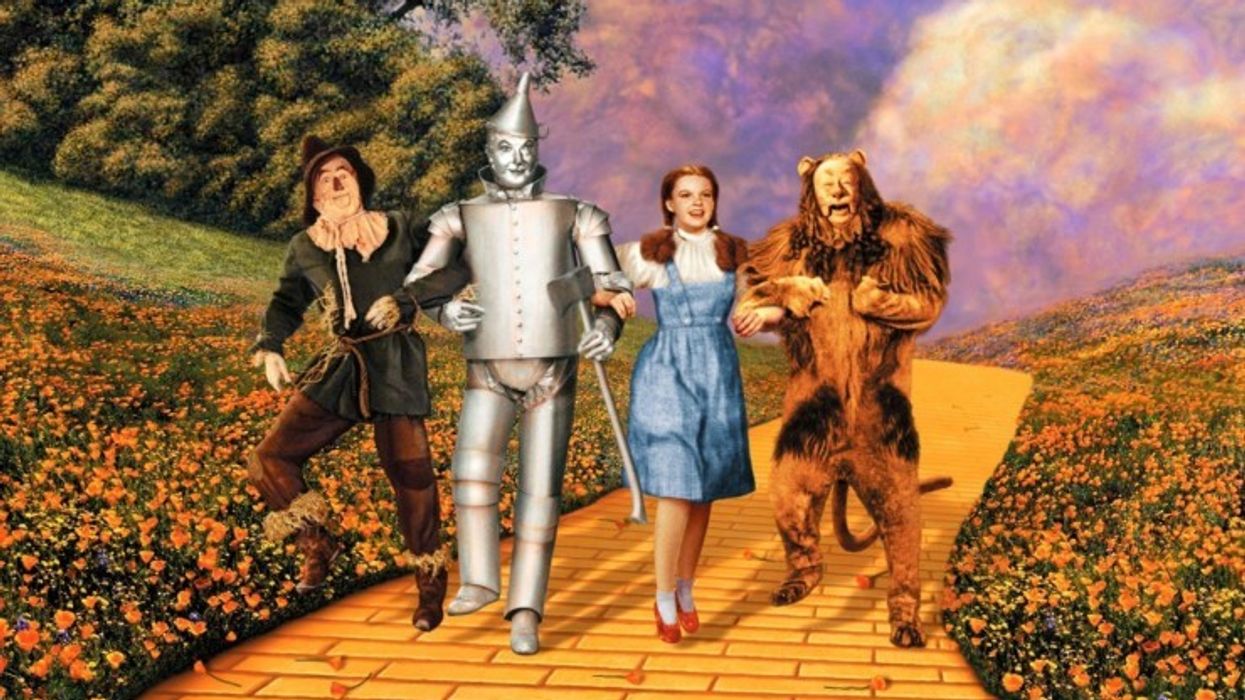
Many great stories, whether told through the written word or on the silver screen, share a common thread—a hero's journey. The Hero's Journey is a narrative structure that has been a fundamental part of storytelling for centuries, and it continues to be a powerful tool in filmmaking.
One of my favorite screenwriting books is ' The Writer’s Journey ', which details Joseph Campbell's journey through storytelling and takes the writer's POV.
This was the first book I read on screenwriting and one of the best.
Christopher Vogler wrote the book, and he was recently on the Film Crux podcast talking about these concepts. So check out the podcast and we'll talk after.
What is the Hero's Journey?
'Star Wars'
I figured that after the podcast you may need a refresher on Joseph Campbell and his concept of The Hero's Journey. This not a new concept; it dates back to ancient mythology and has been used by countless cultures throughout history.
Campbell was a scholar of comparative mythology and wrote a book called "The Hero with a Thousand Faces." He identified a common pattern in myths and stories from around the world, a pattern he called the monomyth or the Hero's Journey .
The Hero's Journey is a template that outlines the stages a hero typically goes through in a story. While there may be variations and adaptations, the core structure remains consistent.
It begins with the hero's ordinary world, followed by a call to adventure, a journey into the unknown, encounters with allies and enemies, a transformation or revelation, and finally, a return to the ordinary world with newfound wisdom or gifts.
A Diagram of The Hero's Journey
The Hero's Journey Diagram
Wikipedia Commons
The Hero's Journey is often depicted as a circular diagram, with each stage connected to the next in a cycle. there are many different names for the story beats in the circle.
The image above is from Wikipedia.
Here's a linear representation of Campbell's idea with beats I use when writing.
- Ordinary World : The hero's normal life before the adventure begins.
- Call to Adventure : The hero receives a call to leave their ordinary world and embark on a journey.
- Refusal of the Call : The hero hesitates or resists the call initially.
- Meeting the Mentor: The hero encounters a mentor or guide who provides advice or assistance.
- Crossing the Threshold : The hero commits to leaving the ordinary world and entering the unknown.
- Tests, Allies, and Enemies : The hero faces challenges, makes allies, and encounters adversaries.
- Approaching the Cave : The hero gets closer to the central challenge or conflict.
- Ordeal : The hero faces a major test, often their most significant challenge.
- Reward : The hero overcomes the ordeal and gains a reward or insight.
- The Road Back: The hero begins the journey back to the ordinary world.
- Resurrection : The hero faces one final, climactic challenge.
- Return with the Elixir: The hero returns to the ordinary world, transformed, and brings something valuable back.
Examples of The Hero's Journey in Film
'The Matrix'
Warner Bros.
Many iconic films have embraced the Hero's Journey structure to great effect. Here are a few examples:
- Star Wars : George Lucas drew heavily from Joseph Campbell's work when creating the Star Wars saga. Luke Skywalker's journey from a farm boy on Tatooine to a Jedi Knight follows the Hero's Journey pattern closely.
- The Lord of the Rings : J.R.R. Tolkien's epic fantasy trilogy, adapted into films by Peter Jackson, showcases the Hero's Journey through Frodo's quest to destroy the One Ring.
- The Matrix: The Wachowskis used the Hero's Journey to guide Neo's transformation from a computer hacker to "The One" who can save humanity.
- The Wizard of Oz: Dorothy's adventure in the Land of Oz is a classic Hero's Journey, complete with a call to adventure, allies, adversaries, and a return home with newfound wisdom.
How Filmmakers Utilize the Hero's Journey
- Creating Relatable Characters: One of the most significant advantages of the Hero's Journey in filmmaking is its ability to create relatable characters. Audiences connect with heroes who face challenges, make sacrifices, and experience personal growth. By following this narrative structure, filmmakers can craft characters that resonate with viewers on a deep emotional level.
- Building Tension and Conflict: The Hero's Journey provides a built-in framework for tension and conflict. As the hero progresses through the various stages, they encounter obstacles, adversaries, and setbacks, keeping the audience engaged and invested in the story's outcome.
- Engaging Audiences on an Emotional Level: The Hero's Journey is not just about physical challenges; it's also about the hero's internal journey. Filmmakers can use this structure to explore the hero's emotions, fears, and desires, allowing the audience to connect with the character on an emotional level.
- Crafting Memorable Endings: The return of the hero to the ordinary world at the end of their journey often leaves a lasting impact on the audience. Filmmakers can use this moment to deliver powerful messages, resolutions, or open-ended conclusions that leave viewers thinking long after the credits roll.
More Reading on The Hero's Journey
The Lion King (2019)
This is No Film School, of course we've written about this concept many times before. so here are some articles for you to peruse as well...
- What Are the Fundamentals of the Hero's Journey?
- What Is the 'Call to Adventure' in Storytelling?
- Joseph Campbell's Monomyth: A Brief History and Introduction
- Puppets Reenact Your Favorite Movie Moments to Explain Joseph Campbell’s ‘Hero’s Journey’
- The Other Hero's Journey: The Emotional Struggle of Screenwriting
- Over 48 Hours of Joseph Campbell Lectures Released for Free on Spotify
- This Supercut Takes You Through the Hero's Journey of over 50 Iconic Films
The Hero's Journey is a storytelling archetype deeply embedded in our collective consciousness. It provides filmmakers with a powerful tool to engage and captivate audiences.
By understanding and utilizing this narrative structure, filmmakers can create compelling stories with relatable characters, tension, and emotional depth.
Whether you're crafting a space opera or an intimate drama, the Hero's Journey remains a timeless blueprint for successful storytelling in filmmaking.
Let me know what you think in the comments.
- The Other Hero's Journey: The Emotional Struggle of Screenwriting ›
- This Supercut Takes You Through the Hero's Journey of over 50 Iconic Films ›
- What Are the Fundamentals of the Hero's Journey? ›
- Writing 101: What Is the Hero's Journey? 2 Hero's Journey ... ›
- The Hero's Journey: Joseph Campbell on His Life and Work (The ... ›
- Hero's journey - Wikipedia ›
NAB 2024: We Interview the Minds at Maxon
Cinematography for actors chats with chief product officer steve hogue at the maxon's nab booth..
Popular post production asset company Maxon is always keeping up with the latest trends in elevating pictures digitally—whether its generating a slick transition or the addition of particles.
Whether its Z Brush, Cinema, Red Shift, Forger, or Red Giant, Maxon's creative suite is robust for all kinds of digital work spaces. As an editor I've worked extensively with their different softwares and they're all pretty handy and user friendly.
We catch up with Maxon and get a sneak peak at what they're developing, as well as some hands on play with Cinema 4D at their NAB booth.
CFA Checks in With Maxon at NAB and Plays Around With Cinema 4D
Check out a quick interview with Steve Hogue, followed by a hands-on look at motion graphics software Cinema 4D's node-based system. We also get a little insight on to how powerful your machine might need to be to successfully run Maxon software.

No Film School's coverage of NAB 2024 is brought to you by Blackmagic Design .
What Are The Best Adventure Movies of All Time?
What are the best comedy movies of all time, what are the best fantasy movies of all time, blackmagic camera app set to finally come to android, imax released details for a new next-gen cinema camera, seth macfarlane talks restoring animated shorts at tcm fest, we drop by teradek for the latest in wireless on-set solutions, these new products from litepanels have to be seen to believe, matthew studio equipment has a lot of new tech to debut, adobe talks about the future of ai in premiere pro at nab 2024.

Kindlepreneur
Book Marketing for Self-Publishing Authors
Home / Book Writing / The Hero’s Journey: The 12 Steps of Mythic Structure
The Hero’s Journey: The 12 Steps of Mythic Structure
The Hero’s Journey plot structure is a common template for writing a compelling story. It also has a built-in character arc for the hero or heroine. Whether you write detailed outlines before getting into any prose, or you think writing is best done without an outline, the Hero’s Journey can help. Many writers fall somewhere in between, keeping in mind the broad strokes of a plot structure like the Hero’s Journey as they write.
Now, before you roll up your sleeves and get started with plotting your brand new idea, make sure it's viable to become a bestseller. Take just a few minutes to use book idea validation – without it, your book risks obscurity after it's published. If you have already written your book with a structure like the Hero's Journey and are looking to increase your sales, read how to make your book #1 on Amazon so you don't miss out on new readers.
One thing’s for sure: learning the twelve steps of the Hero’s Journey can only help your writing. This is why I recommend Plottr as an excellent tool to strengthen your writing. They have the Hero’s Journey and other well-known story archetypes to choose from so you can find one that best fits your particular story.
More on Plottr later. For now, let’s go on an adventure through the Hero’s Journey!
- The origins of the Hero’s Journey
- The 12 Steps of the Journey
- Examples of the Hero’s Journey
- How to incorporate this story structure into your writing
Table of contents
- What is the Hero’s Journey?
- The Hero’s Journey: An Overview
- 1. The Ordinary World
- 2. The Call to Adventure
- 3. Refusing the Call to Adventure
- 4. Meeting the Mentor
- 5. Crossing the Threshold
- 6. Test, Allies, and Enemies
- 7. Approach to the Inmost Cave
- 8. The Ordeal
- 9. The Reward
- 10. The Road Back
- 11. Resurrection
- 12. Return With the Elixir
- Star Wars: A New Hope
- The Lord of the Rings: The Fellowship of the Ring
- The Hunger Games
- Bonus Option: Use the Hero's Journey in a Series
- What Stories Work With the Hero’s Journey?
Get it for FREE here: Get the PDF Here
Popularized by mythologist Joseph Campbell in his book The Hero With a Thousand Faces , the Hero’s Journey is a story structure that has been used to tell exciting and captivating stories for centuries. Campbell, a literature professor, found that this was a common mythic structure. It’s widely known by the moniker the Hero’s Journey, but this name didn’t come around until well after Campbell’s 1949 book.
Campbell’s name for it was the monomyth.
Other scholars and storytellers have made tweaks to Campbell’s original monomyth structure, which has seventeen steps instead of the twelve I’ll be discussing today. The version of the Hero’s Journey widely used by screenwriters, authors, and playwrights today was popularized by screenwriter and producer Christopher Vogler .
You can apply this story structure to mythology, films, books, and even short stories.
There are three overall stages to the Hero’s Journey, each with individual story beats. These are 1) Departure, 2) Initiation, and 3) Return.
- The Ordinary World
- The Call to Adventure
- Refusing the Call to Adventure
- Meeting the Mentor
- Crossing the Threshold
- Test, Allies, and Enemies
- Approach to the Inmost Cave
- The Road Back
- Resurrection
- Return With the Elixir
Format Beautiful Professional Books
Easy to use, and and full of amazing features, you can quickly turn your book into a professional book.
The Twelve Stages of the Hero’s Journey
Each of the twelve steps has its own story beats that happen. As we finish each stage, we’ll reflect on each story beat with an example from a famous movie.
The first step in the Hero’s Journey is your chance to familiarize the reader with the known world in which your story happens. This means giving the reader what they need to know to make sense of the world (otherwise known as exposition ). If your story takes place in a reality much like our own, you won’t have a lot to do. But if magic and mythical beasts are normal, or it’s far into the future and interstellar travel is possible, you’ll have a bit more work to do here. If you're having trouble picking which type of world is best for your book, research popular keywords in your genre to reveal settings that readers find interesting.
While you introduce the world, you’ll want to introduce the main character(s) as well. And in doing so, it’s important to give the reader a reason to like him, her, or them . While the protagonist is in their normal, ordinary world, they should want something more or different. And this want or need should dovetail nicely with the primary conflict of the story.
- Introduce the world and the character in an interesting way. Readers will give you some leeway at the beginning of the book, but if it reads like a textbook, you’ll lose them pretty quickly!
- Give the character personality and dimension . Needs, wants, flaws, and characteristics don’t all have to come out right away, but there should be enough for the reader to want to follow the hero through the story.
Tip: This first step should take the first 10-12% of the story.
Step two, the call to adventure, is also called the inciting incident. This is something disruptive that pulls the hero out of their ordinary world and toward a journey that will ultimately change their life . . . if they survive.
This call propels the rest of the story forward , so it should be exciting enough for the reader to want to continue with the story. This will change from genre to genre, so it’s important to know the tropes of whatever genre you’re writing in. On Amazon, there are thousands of genre categories to choose from, so research potential category options to better understand your market.
- Most heroes will resist this initial call to action. The stakes should be very real and clear to the reader at this point. In many stories, the stakes will be life or death.
- Remember that your story needs to grow in intensity until it peaks at the climax. So the call to action should be dramatic, but things will get worse for the protagonist from here.
Tip: The Call To Adventure should happen around the 12% mark.
Not every protagonist will refuse the call. Some may be ready to go. But if you pay attention to some of your favorite stories, you’ll likely see that most heroes resist initially until they have no choice.
Something should happen to make a refusing hero realize that they have no choice but to take on the challenge presented to them. For every refusal, some incident or information should come out that will raise the stakes and make the hero realize they must face the challenge . The hero ventures forth at the end of this section.
- It’s good to have the character refuse the call for a reason that ties in with the need or want established in the first step of the Hero’s Journey.
- Give them a good reason to refuse — and an even better reason to finally heed the call to adventure.
Tip: The refusal section starts around the 15% mark of the story.
At this point in the story, the protagonist has responded to the call to adventure. But their initial unease is still there. They don’t yet have the skills, items, or knowledge to succeed against such a challenge. This is where the mentor comes in.
The mentor helps the protagonist gain the confidence needed to continue on the journey. This is usually done in a multifaceted manner, with both physical and mental help. Much of the time, the mentor provides tough love, kicking the protagonist’s butt into action, so to speak. While mentors are often people, they can also take the form of information, like a map, a magic scepter, or any other number of things that help the hero along.
- Make it clear that, without the mentor, the protagonist would likely fall flat were they to continue on unaided.
- The hero’s time with the mentor should ultimately result in a revelation , giving the hero exactly what they need (or at least what they think they need) to face the antagonist or challenge.
Tip: Have this section start around the 20% mark of the story.
Step five of the Hero’s Journey is often called the point of no return. While the protagonist has learned from the mentor and gained confidence, this story beat forces them to engage fully with the challenge. Usually, this dramatic turning point is orchestrated by the antagonist, giving both the reader and the protagonist an idea of how powerful the villain really is.
One common tactic is to have the mentor killed in this section. Whatever you choose to do, make it pivotal and have it reinforce the central theme and conflict of the story . This is also the end of the Departure section, otherwise known as the first act.
- Until this point, the hero has had one foot in their ordinary world. Now, there’s no choice but to go forward into unknown territory, otherwise called the special world.
- The hero’s reaction to this pivotal story beat should be in line with what the reader knows about them. They need to work for any major changes that come about in this section.
Tip: Crossing the Threshold usually starts around the 25% mark.
This section marks the beginning of the second act. Building on everything that has come before, the protagonist should be challenged, putting their new abilities and knowledge to the test. It will become clear that the hero still needs help to resolve the main conflict of the story. This is where allies come into play. By teaming up with allies, the hero should continue to grow, playing off the other characters and working to overcome the tests or setbacks in the Special World.
Enemies are those that put the tests in their place, working actively against the hero and allies. The reader should learn to care about the allies, which means making them multifaceted characters. By the time this section is done, not all allies will have made it. Some may have even betrayed the hero. Likewise, enemies can also transform in this section, turning into allies.
- While the allies may want the same thing as the hero, they may have conflicting views on how to get it. Everyone in agreement all the time makes for a boring story.
- The hero’s abilities should be in doubt — both by the hero and the reader.
Tip: This section occurs around the 30% mark.
The approach to the inmost cave section gives the characters (and reader) a chance to reflect on the challenges of the previous section. Remember that the stakes and tension need to continue rising, so the previous section should have been the hardest challenge yet. The hero and allies are beaten and bruised — maybe one or more has died along the way — but the protagonist is still alive. The journey continues.
The group is closer to the goal — and to the place or time of ultimate danger. They’re regrouping and gathering their wits as they prepare to face the antagonist or some of the villain’s formidable forces.
- This is a good place for the characters to formulate a plan of attack, clarifying the price of failure and the prize for success.
- At this point, the hero has redoubled his effort and believes he is ready to face the challenge, despite his setbacks. The ordinary world is now far behind and impossible to get back to. The only way out is through.
Tip: This section happens around the 40% mark.
The ordeal is the biggest test yet and a transformative event that affects how the hero goes forward on their journey. This confrontation has the highest stakes so far, and it’s part of the central conflict. It brings the hero to their darkest point yet, and results in a metamorphosis of sorts that allows them to push through to the other side.
Campbell spoke of the ordeal in terms of death and rebirth for the protagonist. The hero uses all they have learned up to this point to push through the ordeal. A character close to the hero is often killed in this section, whether it be the mentor, a close ally, or a loved one. However, it’s not always a death. It could involve facing fears, going up against the biggest foe, or breaking through some seemingly insurmountable mental barrier. Whatever form the ordeal takes, the hero is broken down and comes out the other side stronger than before .
- This section is a long one, taking nearly a fifth of the story. It should be dramatic, compelling, and speak directly to the heart of both the external and internal conflicts of the story.
- Don’t be afraid to make things hard on your characters in this section. Even though the reader knows the hero will prevail, they should be left wondering in this section.
Tip: The Ordeal takes place from around the 50% mark.
Also called seizing the sword, this is the section in which the hero gets whatever they were searching for during the story. They’ve made it through the ordeal, and this is the reward. It can be an object, clarity, knowledge, or new skills/abilities. Whatever the reward is, it needs to be important in defeating the antagonist at the coming climax .
After the action and emotion of the ordeal, this section is a place for the reader and characters to regroup and catch their breath again. It can be a good place for a celebration of sorts, something to show for the sacrifices made so far. The hero may even reflect on all it took to get here.
- It should be clear to the reader how the reward will help the hero to finish the journey.
- This is a major milestone in the journey and should be treated as such. It also marks the end of act two.
Tip: The Reward section takes place around the 70% mark of the story.
Reward firmly in hand, the hero starts the journey back to the ordinary world. But every action has consequences, and those of claiming the reward block the hero’s road back. It becomes clear that things aren’t so simple, and the hero’s tribulations aren’t yet over.
The unforeseen consequences of claiming the reward make the hero realize they’re in more danger than ever before, and they must face the antagonist head-on before returning to the ordinary world. The hero prepares for the ultimate battle — the climax.
- It should be clear to the reader why the hero must face the antagonist once and for all. There should be no choice, given who the hero has become and the stakes they now face.
- This is a good place to re-establish the central conflict of the story and make clear the results of failure.
Tip: This section happens around the 75% mark.
This is the climax of the story — the ultimate showdown between hero and villain . The tension and the stakes are higher than they’ve been throughout the story. If the hero fails, the world as they know it will be forever changed for the worst. The hero uses all they have learned on the journey to defeat the antagonist.
The hero comes out of the confrontation changed, transformed into a true hero. This should be a dramatic transformation, completing the resurrection started earlier in the story.
- Like every other challenge, the hero needs to earn this victory by sacrificing something for it. In some stories, the hero may even sacrifice him or herself.
- By vanquishing the antagonist, the hero should find the strength or gain the knowledge to address their internal conflict in a satisfactory manner.
Tip: This section happens around the 85% mark .
The last section of the story details the hero’s return from the special world to the ordinary world. Sometimes called the magic flight, the hero now has changed for the better. Show what new skills, items, knowledge, or understanding of the world the hero brings with them (the elixir). This “elixir” can often be used to help those the hero left behind in the ordinary world.
In most stories, the hero will return to celebration. They’ve risked it all, saved lives, and learned important lessons. The people in the ordinary world are happy to have them back. The hero may decide to settle back into this world to use their newfound abilities. Or they may find they’ve outgrown it and have a taste for adventure.
- Re-establish the hero’s internal conflict and show how solving it has changed their view and life, completing the character arc .
- If you’re writing a series, provide a hook for the next story here by hinting at another conflict the hero will need to deal with.
Tip: This section happens around the 95% mark and finishes out the story!
Examples of the Hero’s Journey from Famous Works
In George Lucas's Star Wars Episode IV: A New Hope , we can see the Hero's Journey in action. We also see it in The Lord of the Rings: The Fellowship of the Ring and The Hunger Games . Let’s take a look now.
- Luke Skywalker — an archetypal hero — in his Ordinary World, living with his aunt and uncle, hoping for adventure.
- Luke’s Call to Adventure comes when he activates a hidden message from Princess Leia that R2D2 is carrying for Obi-Wan Kenobi.
- Luke initially Refuses the Call — until he returns home to discover his aunt and uncle have been killed by Imperial forces.
- While Luke has already met his Mentor (Obi-Wan), the active mentoring really starts after Luke's home has been destroyed and the only family he's ever known killed.
- When Luke, Obi-Wan, and the droids step into the dangerous Mos Eisley Spaceport, it signifies the beginning of Luke's heroic journey and the Crossing of the Threshold.
- Luke and Obi-Wan hire a couple of Allies, Han Solo and Chewbacca, to transport them off the planet. Once on the Millennium Falcon, Luke's Tests begin.
- The Approach to the Inmost Cave happens when the Death Star captures the Falcon in a tractor beam and pulls them in.
- The Ordeal happens while Obi-Wan goes off to try and disengage the tractor beam. Luke, Han, and the others rescue Princess Leia. Obi-Wan confronts Darth Vader and sacrifices himself so the others can get away.
- With the Rewards (the Death Star plans and the princess), Luke thinks he should be able to defeat the Empire. And while Obi-Wan's death weighs on him, he can see success ahead.
- The Road Back is interrupted as the Falcon is attacked. They have no choice but to go to the Rebel base to deliver the Death Star plans, even though they’re being tracked.
- As the Rebels are attacking the Death Star, Obi-Wan's voice speaks to Luke, telling him to use the Force. Luke does, using all that he's learned and finally “sacrificing” his old self, embracing the Force and “Resurrecting” as a true hero. He fires and blows up the Death Star.
- Luke Returns to the Rebel base triumphant. Both he and Han Solo receive medals and accolades for delivering the (temporary) blow to the evil Empire.
- We get to see Frodo’s idyllic Ordinary World in the Shire. The idea of adventure is attractive to him, but not overly so.
- Frodo’s Call to Adventure begins after Bilbo disappears, leaving behind the Ring, which Gandalf entrusts to young Frodo.
- Frodo Refuses the Call not just once, but repeatedly throughout the story. He feels he is not the one to be entrusted with such a job of carrying and disposing of the Ring.
- Gandalf acts as Frodo’s Mentor, instructing him on what he must do to protect the Ring and, in so doing, protecting the Shire.
- Frodo and Sam quite literally Cross the Threshold as they leave the Shire after splitting from Gandalf.
- Frodo and Sam run into Allies Merry and Pippin on their way toward Bree. They are also Tested by Enemies as they’re pursued by the Nazgûl. These tests continue until the group gets to Rivendell.
- The Approach to the Inmost Cave is the group’s approach to the Mines of Moria — literal caves.
- The Ordeal happens inside the Mines of Moria as the group is attacked by orcs and then Balrog, which Gandalf fights off, falling down into the depths and presumed dead.
- The Reward is sparse in The Fellowship of the Rings. Gandalf is gone, and the group escapes with their lives.
- The Road Back isn’t signified in this story by a turn back to the Ordinary World. Instead, it’s Frodo’s stay in Lothlórien, where he sees the stakes of his failure in a vision.
- The Resurrection is the climax of the story, where the Uruk-hai catch up with the group and Boromir betrays Frodo, trying to take the ring from him. Frodo realizes he must travel alone to Mordor.
- The Return with the Elixir portion is Sam’s refusal to let Frodo journey alone. Frodo pulls him into the boat and they cross the river together. Meanwhile, the rest of the Fellowship are determined to save Merry and Pippin. To be continued . . .
- We see Katniss Everdeen living in her Ordinary World (District 12) with her mother and sister. It’s a bleak, depressing world, but it’s her Ordinary World nonetheless.
- After Prim, Katniss’s sister is called for Tribute, Katniss volunteers in her stead. This is the Call to Adventure.
- This is one example of a story with no real Refusal of the Call. She may not want to take part in the Hunger Games, but she makes the decision and sticks with it to save her sister.
- Katniss meets Haymitch, her Mentor. Though a drunk, he guides her on the politics and gives her tips on surviving the Games.
- Katniss Crosses the Threshold when she’s put on the train to the capital, leaving her Ordinary World behind.
- The Tests, Enemies, and Allies section starts when she has to navigate the preparation for the Games. She meets Rue and has Peeta as an ally, as well. The Careers are clearly enemies to contend with later.
- Katniss Approaches the Inmost Cave when the Hunger Games begin.
- The Ordeal is plain to see as the Games commence, and Katniss struggles to stay alive amid the chaos.
- The Reward comes when only Katniss and Peeta are left alive in the arena. They don’t have to fight, thanks to a rule change; they can both claim victory.
- It looks good for Katniss and Peeta until the Capital changes the rules again, putting an obstacle in the path of the Road Back. Suddenly, they’re forced to decide which of them gets to live.
- The Resurrection portion of the story plays out as Katniss and Peeta threaten to kill themselves, leaving no winner and possibly sowing the seeds of revolution. The Capital changes the rules again, allowing both of them to claim victory.
- Katniss gets to live, Returning from the Games as a hero. One who just may be able to make some real change to her Ordinary World.
Let's say you want to think big. Like a 12 book series big. One little fun way that I use the Hero's Journey is to use each of the 12 steps to represent an entire book as a whole. You could also condense this into 6 books, 3 books, etc.
For example, the original Star Wars trilogy does a fantastic job of fitting the hero's journey not only into the first movie (A New Hope) but also into the trilogy as a whole. The first movie could easily represent the first four steps of the hero's journey from a macro-perspective (as well as covering all 12 within its self-contained plot), with The Empire Strikes Back covering steps 5-8, and Return of the Jedi covering steps 9-12.
Seriously though, the OG Star Wars trilogy is a masterclass in plotting, you guys.
In other words, the Hero's Journey doesn't have to be used just for a single novel, it can be a great way to progress your character from a more zoomed out perspective through an entire series.
Now that you know what to look for, think about some of your favorite stories. See if you can see the beats of the Hero's Journey in them. From Harry Potter and Toy Story to the Lion King and The Hunger Games , you'll find evidence of this story structure.
Its uses aren't just for adventure stories, though. With a little tweaking, a sweet romance story could also follow this template pretty closely. The point of the Hero’s Journey plot template isn’t to lock you into a formula that you can’t deviate from. Instead, it’s a tool that can guide you along. When you know the tropes of your genre, you can marry them with the major beats of the Hero’s Journey to come up with a novel readers will love . Remember, however, that writing an incredible novel is only part of the battle to find loyal readers- it's also important to have a strong marketing strategy so people can actually discover your book, as outlined in my free e-book on how to become an Amazon bestseller.
To make story beats easier, I recommend giving Plottr a try. It’s a great storytelling tool for writers that can help keep you on track using structures like the Hero’s Journey, Dan Harmon’s Story Circle , the Three Act Structure , and more.
Dave Chesson
When I’m not sipping tea with princesses or lightsaber dueling with little Jedi, I’m a book marketing nut. Having consulted multiple publishing companies and NYT best-selling authors, I created Kindlepreneur to help authors sell more books. I’ve even been called “The Kindlepreneur” by Amazon publicly, and I’m here to help you with your author journey.
Related Posts
Parts of a book [from cover to cover], how to write a whodunit, top 8 best scrivener alternatives for writers (+ the only one that matters), sell more books on amazon, amazon kindle rankings e-book.
Learn how to rank your Kindle book #1 on Amazon with our collection of time-tested tips and tricks.
Join the community
Join 111,585 other authors who receive weekly emails from us to help them make more money selling books.
The Ordinary World: The First Step in the Hero’s Journey
by David Safford | 0 comments
Free Book Planning Course! Sign up for our 3-part book planning course and make your book writing easy . It expires soon, though, so don’t wait. Sign up here before the deadline!
From The Odyssey to Star Wars to Toy Story , the Hero's Journey is the foundation of millennia of storytelling. But before any hero can embark on their journey, they must start in the ordinary world.
How can you leverage this world and the hero's journey in your own writing?
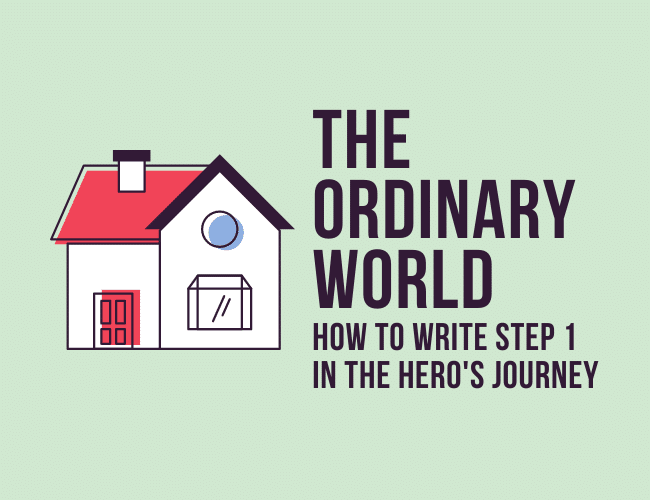
In storytelling, the hero's journey has to do with the stages of the hero as researched by Joseph Campbell and Christopher Vogler. Decades ago, these two storytelling experts identified several common trends that appear in great works from every generation and every culture.
One of those trends is structure.
Thankfully this structure has a proven track record of success. This successful record is so long, in fact, that we don't know when it started.
And it all begins with a person living an ordinary life.
What Is the Hero's Journey?
The Hero's Journey is a timeless combination of characters, events, and symbols frequently structured as a sequence of twelve steps. It is a storytelling structure that anyone can study and utilize to tell a story that readers will love.
You can learn all about the twelve steps that make up the universal structure of great stories in this article . Today, I'd like to take you even further into the first of those steps.
Let's take a look at the beginning: The Ordinary World.
Hero's Journey Step #1: Start Ordinary
We have Hollywood screenwriter and executive Christopher Vogler to thank for our condensed version of the Hero's Journey. If you're curious, his most notable credit is a film that makes explicit use of the Hero's Journey: The Lion King.
In Vogler's simplification of Campbell's theory, there are twelve steps to the Hero's Journey (I cover each one in-depth in a detailed Hero's Journey blog series, this article being one of those special articles).
The first step of the Hero's Journey involves establishing your hero's day-to-day ordinary life, all so it can be disrupted by the impending Inciting Incident. This is the Ordinary World.
This is when you establish the hero's day-to-day life, all so it can be disrupted by the impending Inciting Incident. Tweet this
David Safford
You deserve a great book. That's why David Safford writes adventure stories that you won't be able to put down. Read his latest story at his website. David is a Language Arts teacher, novelist, blogger, hiker, Legend of Zelda fanatic, puzzle-doer, husband, and father of two awesome children.

Trackbacks/Pingbacks
- Hero’s Journey: How to Write the Call to Adventure and Refusal of the Call - […] weeks ago we explored the beginning of every great story, Step #1: An Ordinary World with an ordinary, relatable…
- The Hero's Journey: The Key to Writing Your Hero Meeting the Mentor - […] the start of our Hero’s Journey series? Start here with Step 1: the Ordinary World and Steps 2 and…
- The Hero's Journey: How to Write the Crossing the Threshold Scene - […] Hero’s Journey story begins humbly in the protagonist’s “Ordinary World,” where corruption lurks within, or danger attacks from beyond.…
- The Hero’s Journey: How to Write the Crossing the Threshold Scene - […] Hero’s Journey story begins humbly in the protagonist’s “Ordinary World,” where corruption lurks within, or danger attacks from beyond.…
- The Hero's Journey: How to Fill Your Story With Trials, Allies, and Enemies - […] means your hero has started humbly (Ordinary World), experienced a Call to Adventure, Refused that call somehow, and found…
- The Hero's Journey: How to Outline the Approach and the Ordeal - […] a quick refresher, your hero starts humbly (Ordinary World), experiences a Call to Adventure, Refuses that call somehow, and finds…
- The Hero's Journey: How to Write the Climax of Your Story - […] hero will always begin in some sort of Ordinary World, a place where no one expects much of […]
- The Hero’s Journey: How to Write the Climax of Your Story – Books, Literature & Writing - […] hero will always begin in some sort of Ordinary World, a place where no one expects much of anyone.…
- How to Write the Climax of Your Story – Lederto.com - […] hero will always begin in some sort of Ordinary World, a place where no one expects much of […]
- The Hero's Journey: How to Build Suspense With a Fake-Out Ending - […] hero will always begin in some sort of Ordinary World, a place where no one expects much of […]
- The Hero's Journey: The Universal Structure of Great Stories : The Write Practice - […] hero will always begin in some sort of Ordinary World, a place where no one expects much of […]
- The Hero's Journey: How to Write the Resurrection - […] hero will always begin in some sort of Ordinary World, a place where no one expects much of […]
- The Hero's Journey: How to Write the Return With the Elixir - […] hero will always begin in some sort of Ordinary World, a place where no one expects much of […]
- The Hero’s Journey: How to Write the Return With the Elixir and Master the Perfect Ending – Books, Literature & Writing - […] hero will always begin in some sort of Ordinary World, a place where no one expects much of anyone. Then…
- The Perfect Hero’s Journey Example: Star Wars – Lederto.com Blog - […] Ordinary World: Luke lives in Tatooine but doesn’t like it. Like all Heroes, his eyes are drawn to the…
- The Perfect Hero’s Journey Example: Star Wars - Your Sunglasses Store - […] Ordinary World: Luke lives in Tatooine but doesn’t like it. Like all Heroes, his eyes are drawn to the…
Submit a Comment Cancel reply
Your email address will not be published. Required fields are marked *
Submit Comment
Join over 450,000 readers who are saying YES to practice. You’ll also get a free copy of our eBook 14 Prompts :
Popular Resources
Book Writing Tips & Guides Creativity & Inspiration Tips Writing Prompts Grammar & Vocab Resources Best Book Writing Software ProWritingAid Review Writing Teacher Resources Publisher Rocket Review Scrivener Review Gifts for Writers
Books By Our Writers

You've got it! Just us where to send your guide.
Enter your email to get our free 10-step guide to becoming a writer.
You've got it! Just us where to send your book.
Enter your first name and email to get our free book, 14 Prompts.
Want to Get Published?
Enter your email to get our free interactive checklist to writing and publishing a book.
- Story Writing Guides
12 Hero’s Journey Stages Explained (+ Free Templates)
From zero to hero, the hero’s journey is a popular character development arc used in many stories. In today’s post, we will explain the 12 hero’s journey stages, along with the simple example of Cinderella.
The Hero’s Journey was originally formulated by American writer Joseph Campbell to describe the typical character arc of many classic stories, particularly in the context of mythology and folklore. The original hero’s journey contained 17 steps. Although the hero’s journey has been adapted since then for use in modern fiction, the concept is not limited to literature. It can be applied to any story, video game, film or even music that features an archetypal hero who undergoes a transformation. Common examples of the hero’s journey in popular works include Star Wars, Lord of the Rings, The Hunger Games and Harry Potter and the Philosopher’s Stone.
- What is the hero's journey?
Stage 1: The Ordinary World
Stage 2: call of adventure, stage 3: refusal of the call, stage 4: meeting the mentor, stage 5: crossing the threshold, stage 6: tests, allies, enemies, stage 7: the approach, stage 8: the ordeal, stage 9: reward, stage 10: the road back, stage 11: resurrection, stage 12: return with the elixir, cinderella example, campbell’s 17-step journey, leeming’s 8-step journey, cousineau’s 8-step journey.
- Free Hero's Journey Templates
What is the hero’s journey?
The hero’s journey, also known as the monomyth, is a character arc used in many stories. The idea behind it is that heroes undergo a journey that leads them to find their true selves. This is often represented in a series of stages. There are typically 12 stages to the hero’s journey. Each stage represents a change in the hero’s mindset or attitude, which is triggered by an external or internal event. These events cause the hero to overcome a challenge, reach a threshold, and then return to a normal life.
The hero’s journey is a powerful tool for understanding your characters. It can help you decide who they are, what they want, where they came from, and how they will change over time. It can be used to
- Understand the challenges your characters will face
- Understand how your characters react to those challenges
- Help develop your characters’ traits and relationships

In this post, we will explain each stage of the hero’s journey, using the example of Cinderella.
You might also be interested in our post on the story mountain or this guide on how to outline a book .
12 Hero’s Journey Stages
The archetypal hero’s journey contains 12 stages and was created by Christopher Vogler. These steps take your main character through an epic struggle that leads to their ultimate triumph or demise. While these steps may seem formulaic at first glance, they actually form a very flexible structure. The hero’s journey is about transformation, not perfection.
Your hero starts out in the ordinary world. He or she is just like every other person in their environment, doing things that are normal for them and experiencing the same struggles and challenges as everyone else. In the ordinary world, the hero feels stuck and confused, so he or she goes on a quest to find a way out of this predicament.
Example: Cinderella’s father passes away and she is now stuck doing chores and taking abuse from her stepsisters and stepmother.
The hero gets his or her first taste of adventure when the call comes. This could be in the form of an encounter with a stranger or someone they know who encourages them to take a leap of faith. This encounter is typically an accident, a series of coincidences that put the hero in the right place at the right time.
Example: An invite arrives inviting the family to a royal ball where the Prince will choose a wife.
Some people will refuse to leave their safe surroundings and live by their own rules. The hero has to overcome the negative influences in order to hear the call again. They also have to deal with any personal doubts that arise from thinking too much about the potential dangers involved in the quest. It is common for the hero to deny their own abilities in this stage and to lack confidence in themselves.
Example: Cinderella accepts the call by making her own dress for the ball. However, her stepmother refuses the call for her by not letting her go to the ball. And her step-sisters ruin her dress, so she can not go.
After hearing the call, the hero begins a relationship with a mentor who helps them learn about themselves and the world. In some cases, the mentor may be someone the hero already knows. The mentor is usually someone who is well-versed in the knowledge that the hero needs to acquire, but who does not judge the hero for their lack of experience.
Example: Cinderella meets her fairy godmother who equips her with everything she needs for the ball, including a dress and a carriage.
The hero leaves their old life behind and enters the unfamiliar new world. The crossing of the threshold symbolises leaving their old self behind and becoming a new person. Sometimes this can include learning a new skill or changing their physical appearance. It can also include a time of wandering, which is an essential part of the hero’s journey.
Example: Cinderella hops into the carriage and heads off to the ball. She has transformed from a servant into an elegant young lady.
As the hero goes on this journey, they will meet both allies (people who help the hero) and enemies (people who try to stop the hero). There will also be tests, where the hero is tempted to quit, turn back, or become discouraged. The hero must be persistent and resilient to overcome challenges.
Example: At the ball, Cinderella meets the prince, and even see’s her stepmother and stepsister. She dances with Prince all night long making her step-sisters extremely jealous.
The hero now reaches the destination of their journey, in some cases, this is a literal location, such as a cave or castle. It could also be metaphorical, such as the hero having an internal conflict or having to make a difficult decision. In either case, the hero has to confront their deepest fears in this stage with bravery. In some ways, this stage can mark the end of the hero’s journey because the hero must now face their darkest fears and bring them under control. If they do not do this, the hero could be defeated in the final battle and will fail the story.
Example: Cinderella is having a great time at the ball and nearly forgets about the midnight rule. As she runs away in a hurry, her glass slipper falls off outside the palace.
The hero has made it to the final challenge of their journey and now must face all odds and defeat their greatest adversary. Consider this the climax of the story. This could be in the form of a physical battle, a moral dilemma or even an emotional challenge. The hero will look to their allies or mentor for further support and guidance in this ordeal. Whatever happens in this stage could change the rest of the story, either for good or bad.
Example: Prince Charming looks all over the kingdom for the mysterious girl he met at the ball. He finally visits Cinderella’s house and tries the slippers on the step-sisters. The prince is about to leave and then he sees Cinderella in the corner cleaning.
When the hero has defeated the most powerful and dangerous of adversaries, they will receive their reward. This reward could be an object, a new relationship or even a new piece of knowledge. The reward, which typically comes as a result of the hero’s perseverance and hard work, signifies the end of their journey. Given that the hero has accomplished their goal and served their purpose, it is a time of great success and accomplishment.
Example: The prince tries the glass slipper on Cinderella. The glass slipper fits Cinderella perfectly, and they fall in love.
The journey is now complete, and the hero is now heading back home. As the hero considers their journey and reflects on the lessons they learned along the way, the road back is sometimes marked by a sense of nostalgia or even regret. As they must find their way back to the normal world and reintegrate into their former life, the hero may encounter additional difficulties or tests along the way. It is common for the hero to run into previous adversaries or challenges they believed they had overcome.
Example: Cinderella and Prince Charming head back to the Prince’s castle to get married.
The hero has one final battle to face. At this stage, the hero might have to fight to the death against a much more powerful foe. The hero might even be confronted with their own mortality or their greatest fear. This is usually when the hero’s true personality emerges. This stage is normally symbolised by the hero rising from the dark place and fighting back. This dark place could again be a physical location, such as the underground or a dark cave. It might even be a dark, mental state, such as depression. As the hero rises again, they might change physically or even experience an emotional transformation.
Example: Cinderella is reborn as a princess. She once again feels the love and happiness that she felt when she was a little girl living with her father.
At the end of the story, the hero returns to the ordinary world and shares the knowledge gained in their journey with their fellow man. This can be done by imparting some form of wisdom, an object of great value or by bringing about a social revolution. In all cases, the hero returns changed and often wiser.
Example: Cinderella and Prince Charming live happily ever after. She uses her new role to punish her stepmother and stepsisters and to revitalise the kingdom.
We have used the example of Cinderella in Vogler’s hero’s journey model below:

Below we have briefly explained the other variations of the hero’s journey arc.
The very first hero’s journey arc was created by Joseph Campbell in 1949. It contained the following 17 steps:
- The Call to Adventure: The hero receives a call or a reason to go on a journey.
- Refusal of the Call: The hero does not accept the quest. They worry about their own abilities or fear the journey itself.
- Supernatural Aid: Someone (the mentor) comes to help the hero and they have supernatural powers, which are usually magical.
- The Crossing of the First Threshold: A symbolic boundary is crossed by the hero, often after a test.
- Belly of the Whale: The point where the hero has the most difficulty making it through.
- The Road of Trials: In this step, the hero will be tempted and tested by the outside world, with a number of negative experiences.
- The Meeting with the Goddess: The hero meets someone who can give them the knowledge, power or even items for the journey ahead.
- Woman as the Temptress: The hero is tempted to go back home or return to their old ways.
- Atonement with the Father: The hero has to make amends for any wrongdoings they may have done in the past. They need to confront whatever holds them back.
- Apotheosis: The hero gains some powerful knowledge or grows to a higher level.
- The Ultimate Boon: The ultimate boon is the reward for completing all the trials of the quest. The hero achieves their ultimate goal and feels powerful.
- Refusal of the Return: After collecting their reward, the hero refuses to return to normal life. They want to continue living like gods.
- The Magic Flight: The hero escapes with the reward in hand.
- Rescue from Without: The hero has been hurt and needs help from their allies or guides.
- The Crossing of the Return Threshold: The hero must come back and learn to integrate with the ordinary world once again.
- Master of the Two Worlds: The hero shares their wisdom or gifts with the ordinary world. Learning to live in both worlds.
- Freedom to Live: The hero accepts the new version of themselves and lives happily without fear.
David Adams Leeming later adapted the hero’s journey based on his research of legendary heroes found in mythology. He noted the following steps as a pattern that all heroes in stories follow:
- Miraculous conception and birth: This is the first trauma that the hero has to deal with. The Hero is often an orphan or abandoned child and therefore faces many hardships early on in life.
- Initiation of the hero-child: The child faces their first major challenge. At this point, the challenge is normally won with assistance from someone else.
- Withdrawal from family or community: The hero runs away and is tempted by negative forces.
- Trial and quest: A quest finds the hero giving them an opportunity to prove themselves.
- Death: The hero fails and is left near death or actually does die.
- Descent into the underworld: The hero rises again from death or their near-death experience.
- Resurrection and rebirth: The hero learns from the errors of their way and is reborn into a better, wiser being.
- Ascension, apotheosis, and atonement: The hero gains some powerful knowledge or grows to a higher level (sometimes a god-like level).
In 1990, Phil Cousineau further adapted the hero’s journey by simplifying the steps from Campbell’s model and rearranging them slightly to suit his own findings of heroes in literature. Again Cousineau’s hero’s journey included 8 steps:
- The call to adventure: The hero must have a reason to go on an adventure.
- The road of trials: The hero undergoes a number of tests that help them to transform.
- The vision quest: Through the quest, the hero learns the errors of their ways and has a realisation of something.
- The meeting with the goddess: To help the hero someone helps them by giving them some knowledge, power or even items for the journey ahead.
- The boon: This is the reward for completing the journey.
- The magic flight: The hero must escape, as the reward is attached to something terrible.
- The return threshold: The hero must learn to live back in the ordinary world.
- The master of two worlds: The hero shares their knowledge with the ordinary world and learns to live in both worlds.
As you can see, every version of the hero’s journey is about the main character showing great levels of transformation. Their journey may start and end at the same location, but they have personally evolved as a character in your story. Once a weakling, they now possess the knowledge and skill set to protect their world if needed.
Free Hero’s Journey Templates
Use the free Hero’s journey templates below to practice the skills you learned in this guide! You can either draw or write notes in each of the scene boxes. Once the template is complete, you will have a better idea of how your main character or the hero of your story develops over time:
The storyboard template below is a great way to develop your main character and organise your story:

Did you find this guide on the hero’s journey stages useful? Let us know in the comments below.

Marty the wizard is the master of Imagine Forest. When he's not reading a ton of books or writing some of his own tales, he loves to be surrounded by the magical creatures that live in Imagine Forest. While living in his tree house he has devoted his time to helping children around the world with their writing skills and creativity.
Related Posts
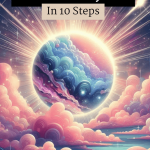
Comments loading...

The Hero’s Journey: A Classic Story Structure
Writing a compelling story, especially if you’re new at this, can be grueling.
Conflicting advice online can overwhelm you, making you want to quit before you’ve written a word.
But you know more than you think.
Stories saturate our lives. We talk, think, and communicate with story in music, on television, in video games, in books, and in movies.
Every story, regardless of genre or plot , features a main character who begins some adventure or quest, overcomes obstacles, and is transformed.
This is generically referred to as The Hero’s Journey, a broad story template popularized by Joseph Campbell in his The Hero with a Thousand Faces (1949).
In essence, every story ever told includes at least some of the seventeen stages he outlined .
In 1985, screenwriter Christopher Vogler wrote a memo for Disney titled The Practical Guide to Joseph Campbell’s The Hero with a Thousand Faces that condensed the seventeen steps to twelve.
The Hero’s Journey template has influenced storytellers worldwide, most notably George Lucas (creator of Star Wars and Indiana Jones ).
Vogler says of Campbell’s writings: “The ideas are older than the pyramids, older than Stonehenge, older than the earliest cave painting.”
The Hunger Games by Suzanne Collins is a prime example of The Hero’s Journey, so I use “she” inclusively to represent both genders.
- The 3 Hero’s Journey Stages
1. The Departure (Separation)
The hero is compelled to leave her ordinary world.
She may have misgivings about this compulsion, and this is where a mentor may come to encourage and guide her.
Example: Katniss Everdeen is a devoted sister, daughter, and friend. She’s an avid hunter, well acquainted with the forbidden forest outside District 12, where she and her friend Gale hunt to keep their families from starving. The Hunger Games, wherein only one winner survives, loom, and she fears she or one of her friends will be chosen.
2. Initiation
The hero crosses into the other world, where she faces obstacles.
Sometimes she’s alone, sometimes she’s joined by a companion. Maybe a few.
Here she must use the tools she’s been given in her ordinary life to overcome each obstacle. She’ll be rewarded, sometimes tangibly.
Eventually she must return to the ordinary world with her reward.
Example: District 12’s Representative and Stylist Effie Trinket arrives to choose the Tributes who will compete in The Hunger Games.
Katniss and her family attend, and she breathlessly wills Effie not to draw her name. She gets her wish, but to her horror, her little sister Primrose is chosen.
Peacekeepers shove Prim toward the stage before Katniss volunteers to take her place. She’s joined by the male tribute, the baker’s son Peeta. They are soon whisked away for training and then the competition.
The hero crosses the threshold back into her ordinary world, which looks different now. She brings with her the rewards and uses them for good.
Example: Unexpectedly, Katniss and Peeta are told there can be two victors instead of one. But Katniss and Peeta, to the dismay of the Capitol, decide they’ll die together or emerge as victors together. They emerge not only as victors, but also as celebrities. They have changed in unimaginable ways.
- The 12 Hero’s Journey Steps (and How to Use Them)

1 — Ordinary World
Before your hero is transported to another world, we want to see her in her ordinary world—who is she when no one is watching? What drives her?
This sets the stage for the rest of your story , so show her human side. Make her real and knowable.
But don’t wait long to plunge her into terrible trouble. Once you give your readers a reason to care, give them more to keep them turning the pages.
Example: Katniss Everdeen is introduced as a teenager for whom life isn’t easy. Her father is dead, her mother depressed, and Katniss will do anything to provide for her family and protect her little sister.
2 — The Call to Adventure
This is the point at which your hero’s world can never be the same. A problem, a challenge, or an adventure arises—is she up to the challenge?
Example: The Reaping, where Katniss volunteers to take Prim’s place.
3 — Refusal of the Call
Occasionally, a hero screeches to a halt before the adventure begins. When faced with adversity, she hesitates, unsure of herself.
She must face her greatest fears and forge ahead.
Example: There is no refusal of the call in The Hunger Games. Katniss eagerly steps forward.
4 — Meeting With the Mentor
The mentor may be an older individual who offers wisdom, a friend, or even an object, like a letter or map.
Whatever the form, the mentor gives your hero the tools she needs for the journey—either by inspiring her, or pushing her in the direction she needs to go.
Example: Katniss is introduced to Haymitch the minute she reaches the stage to accept the challenge. He’s the only person from District 12 to have ever won The Hunger Games. She’s not initially impressed, but he eventually becomes her biggest ally.
5 — Crossing the First Threshold
In the final step of the departure phase, your hero musters the courage to forge ahead, and the real adventure begins.
There’s no turning back.
By now, you’ve introduced your hero and given your readers a reason to care what happens to her. You should have also introduced the underlying theme of your story .
Why is it important for your hero to accomplish this task?
What are the stakes?
What drives her?
Example: Katniss is transported via train to the Capitol to begin training for The Hunger Games. She’s promised Prim she’ll do everything in her power to return home.
Your hero is laser focused, but this is the point at which she faces her first obstacle. She will meet her enemies and be forced to build alliances. She will be tested and challenged.
Can she do it?
What does she learn in this initiation phase?
Example: Katniss meets her competitors for the first time during training and is able to watch them to get a sense of what challenges lie ahead.
6 — Tests, Allies, and Enemies
Things have shifted in the new world. Danger lies ahead. Alliances are formed, chaos ensues.
Your hero may fail tests she’s confronted with at first, but her transformation begins. She has the ability and knowledge to accomplish her tasks, but will she succeed?
Example: The Hunger Games begin. Tributes die. Katniss fights without water or a weapon. Her allies are Peeta and young Rue (the 12-year-old Tribute from District 11). The strongest players have illegally spent their young lives training for The Hunger Games and loom as her enemies from the start.
7 — Approach to the Inmost Cave
Your hero approaches danger—often hidden, sometimes more mental than physical. She must face her greatest fears time again and may even be tempted to give up. She has to dig deep to find courage.
Example: Katniss is in the arena, the games underway. There’s no escape. She’s seen death, fears she may be next, and must find water and a weapon to survive.
8 — The Ordeal
Your hero’s darkest moment and greatest challenge so far, in a fight for her life, she must find a way to endure to the end.
This may or may not be the climax of your story, but it is the climax of the initiation stage.
During this terrible ordeal, the steepest part of her character arc takes place.
Example: Katniss faces dying of thirst (if she’s not killed by another Tribute first) and faces every obstacle imaginable, including the death of Rue, before she finally wins the battle.
9 — Reward (Seizing the Sword)
Against all odds, your hero survives. She’s defeated her enemies , slain her dragons—she has overcome and won the reward.
Whether her reward is tangible depends on the story. Regardless, your hero has undergone a total inward and outward transformation.
Example: Peeta and Katniss stand alone in the arena, told that because they are from the same district they can both claim the victory—or can they?
10 — The Road Back
As she begins to cross the threshold back into the ordinary world, she learns the battle isn’t finished.
She must face the consequences for her actions during the initiation stage.
She’s about to face her final obstacle.
Example: The Capitol reverses and announces that only one winner will be allowed.
11 — The Resurrection
During this climax of your story, your hero faces her final, most threatening challenge.
She may even face death one more time.
Example: Katniss and Peeta decide that if they can’t win together, there will be no winner. They decide to call the Capitol’s bluff and threaten to die together. As they are about to eat poison berries, the Capitol is forced to allow two winners.
12 — Return With the Elixir
Your hero finally crosses the threshold back into her ordinary life, triumphant. Only things aren’t so ordinary anymore.
She’s been changed by her adventure. She brings with her rewards, sometimes tangible items she can share, sometimes insight or wisdom. Regardless, this all impacts her life in ways she never imagined.
Example: Katniss and Peeta return home celebrities. They’re given new homes, plenty of food to share, and assistants who tend to their needs. Katniss learns that her defiance of the Capitol has sparked a revolution in the hearts of residents all across Panem.
- Hero’s Journey Examples
You may recognize The Hero’s Journey in many famous stories, including Greek Mythology and even the Bible. Other examples:
- Sleeping Beauty
- Lord of the Rings
- Indiana Jones
- Sherlock Holmes
- Pilgrim’s Progress
- The Wizard of Oz
- Should You Use The Hero’s Journey Story Structure?
Structure is necessary to a story , regardless which you choose. Because the Hero’s Journey serves as a template under which all story structures fall, each bears some variation of it.
For fiction or nonfiction, your story structure determines how effectively you employ drama, intrigue, and tension to grab readers from the start and keep them to the end.
For more on story structure, visit my blog post 7 Story Structures Any Writer Can Use .

Are You Making This #1 Amateur Writing Mistake?

Faith-Based Words and Phrases

What You and I Can Learn From Patricia Raybon

Before you go, be sure to grab my FREE guide:
How to Write a Book: Everything You Need to Know in 20 Steps
Just tell me where to send it:

Enter your email to instantly access my ultimate guide to writing a novel.
- Translators
- Graphic Designers
Please enter the email address you used for your account. Your sign in information will be sent to your email address after it has been verified.
The Hero's Journey: Stages, Steps, and Examples

Remember when you were younger, probably around middle school age, and your teacher introduced the Greek mythology lesson? It was such an exciting time of reading books like Rick Riordan's Percy Jackson & The Olympians: The Lightning Thief . Maybe you fell in love with Percy, a lovable and relatable young boy struggling with his identity. Or maybe you were a part of the dystopian crave and fell in love with Katniss Everdeen from Suzanne Collins' The Hunger Games . Either way, this may have been your first introduction to the hero's journey (we're sure you've seen the templates). After all, the hero's journey is all around us!
If you fell in love with reading a hero's journey archetype and want to try to create your own modern hero, then you've come to the perfect place. We're going to explore the crucial steps of a hero's journey and what they entail, so you can have a template through which to write your own story. Your questions act as our call to action (you'll understand what we mean by that shortly). But first, let's define a hero's journey. After all, how can we possibly evaluate the steps of a hero's journey if we don't even have a solid definition?
The hero's journey
A hero ventures forth from the world of common day into a region of supernatural wonder: fabulous forces are there encountered and a decisive victory is won: The hero comes back from this mysterious adventure with the power to bestow boons on his fellow man. The Hero With a Thousand Faces by Joseph Campbell
The hero's journey is the story of a hero who leaves the ordinary world to go on an adventure full of peril. On it, the hero will gain both adversaries and allies, and will face a great evil. The hero will also face his shadow self, which is perhaps the most frightening antagonist of all.
Campbell references 17 total steps in the hero's journey. Wait a minute, 17 steps? That seems like a lot. Don't worry! Depending on who you ask, the number of steps and what those steps look like will differ, though they all follow a similar template. The hero's journey is commonly accepted to have 12 main steps. To make it even simpler on you, these steps can actually be broken down into three stages: the departure, the initiation, and the return.
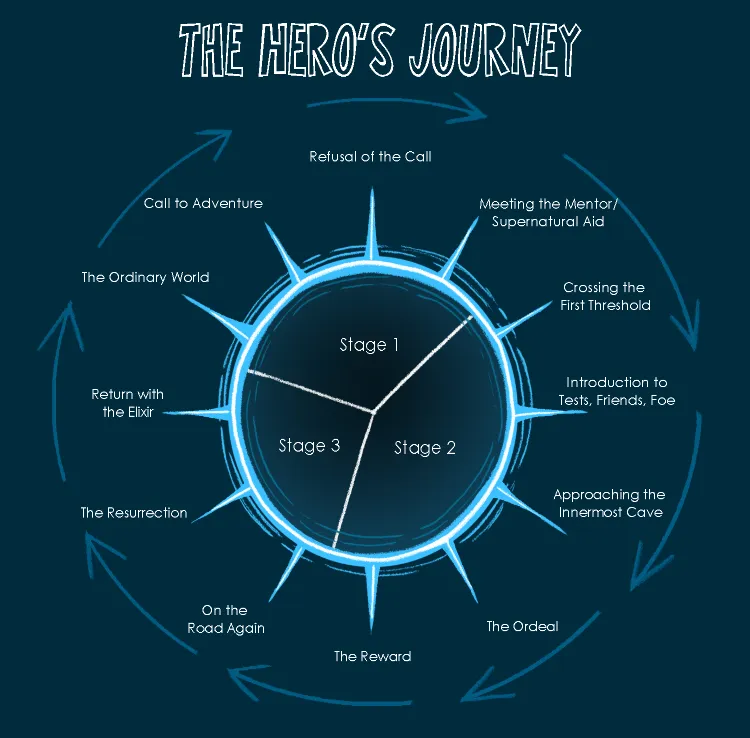
Stage 1: the departure

The departure is just as you might expect. This is the stage where the protagonist is introduced, typically in a modern, realistic setting, and we are introduced to some struggles the protagonist may be experiencing or questions they may have about their own identity. This stage can be broken into our first four steps.
- The ordinary world : As we said, we are first introduced to our protagonist and soon-to-be hero in the reality we know. It is just as the first step is listed: the ordinary world. There is no magic, mayhem, or supernatural creatures evident in this ordinary world. It is the world the protagonist has known all their life.
- Call to adventure : This is one of the steps you may be most familiar with, as it's one of the most commonly known phrases in literature. Regardless of what genre you are writing, your hero has a call to action. After all, there must be a reason why the protagonist leaves the mundane, comfortable lifestyle they've lived up until now. This is the moment where the journey or quest is initiated: a problem, challenge, or quest is presented to the protagonist, and they must decide to leave behind their ordinary lives to face new challenges. Whether the protagonist is immediately threatened, a family member is threatened, or they see something they shouldn't have, it is up to the protagonist to respond to the call.
- Refusal of the call : Wow, isn't it so cool that the hero was discovered by some other world (or they discovered it!) and now they get to embark on this awesome journey? Yes, well, sometimes. Despite how amazing it may seem to be called to accept a quest (hence the reason why this archetype is so popular in literature), the protagonist may not be feeling that excitement. In fact, it's likely that the protagonist is feeling nervous, anxious, scared, hesitant, and thus, resistant to the call at first (don't worry, they'll give in eventually).
- Meeting the mentor/supernatural aid : Okay, so the protagonist is done refusing the call. Maybe they've gotten over their fears, or maybe something happened that makes it impossible for them to continue to deny their inevitable quest. Yay! Now it's time for our protagonist to meet their mentor. The mentor can be supernatural or not, but they act as a teacher, trainer, and instructor for the protagonist. After all, the protagonist is going to need some serious guidance once they've been booted out of their ordinary world. This step involves a lot of trust, though, as the protagonist may barely know their mentor. This step also involves the passing on of certain tools and equipment the protagonist may need to succeed on their journey. These can be special powers or physical instruments.
Stage 2: the initiation
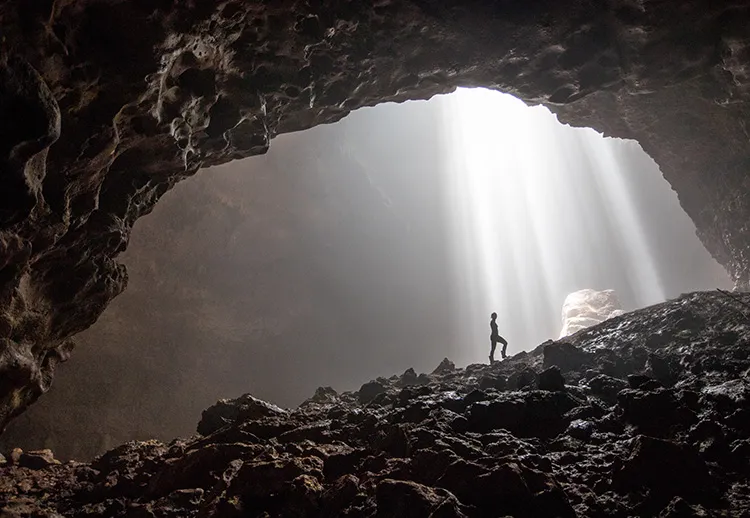
Now that you've spent a decent chunk of time introducing your protagonist (and hero!) and their conflict, it's time to head into the second stage of the hero's journey: the initiation. Before you do this, though, ensure you've checked off the first four items on the previous list. It is crucial that you meet these criteria for a successful hero's journey. After all, the hero can't be truly initiated into their new world if you have not established their old world, their main conflict, and the introduction of their next steps.
This next stage will take up the largest portion of your story. You should fill it with lots of new characters, settings, and trials and tests for your protagonist to endure. This is also a stage where you should focus a lot on character development for your protagonist. No person is going to go through a massive journey and end up the same person they once were when everything is said and done. Take this time to think about how you want your protagonist to change and what it's going to take to accomplish that change.
- Crossing the first threshold : This is the point at which the hero decides to embark on the adventure and cross over into the unknown, leaving his or her ordinary world behind. This is called the threshold because there is something or someone acting as a literal barrier between the protagonist's ordinary world and their new world. Beyond the threshold lies trials and tribulations and potential risks and dangers. Once the protagonist takes that first step beyond this threshold, there is no returning to the life they once knew. This is where the hero's actual journey truly begins.
- Introduction to tests, friends, and foe : This is the step of the story where the cast of characters expands and a new setting, the new world, is introduced. The protagonist may be lost in their new world, so they must evaluate the new people around them to identify potential allies, enemies, or morally ambiguous characters. Trust is established or denied. Just like anyone would struggle with encountering anew environment, the protagonist will endure some struggles of their own, but this is how they'll determine who is friend and who is foe, establishing other character roles in the process. The rules of the ordinary world do not apply to this new world, so hopefully the protagonist meets some good people who will teach him the new ways of life.
- Approaching the innermost cave : At this point on the hero's journey, they have left all semblance of the ordinary world behind. This step marks the preparation for the main event of the journey. The protagonist may gather materials and even other characters, if they're trustworthy enough, to take on the rest of the steps of the quest with them. The cave acts as a metaphor for what the protagonist is about to endure: risk, danger, darkness, and even potential loss. This step also includes some of the tests leading up to the large test yet, which happens to be the next step in the hero's journey.
- The ordeal : Buckle up, this is about to be a wild ride! That's right, your hero has finally made it to one of the biggest challenges of all. The protagonist is no longer approaching the innermost cave. Rather, the protagonist is now fully in the belly of the beast, and what a beast it is! The ordeal is usually not the climax of the story, but this is the moment where the protagonist truly transforms from an ordinary character into a true hero. It may involve their greatest fear or a physically or mentally demanding task.
- The reward : If your protagonist, now hero, succeeds in their greatest challenge, then they will be given a reward that makes the journey worth so much time, effort, and challenge. If they can succeed, then there is hope for them, that bright light that shines through the top of a dark cave and promises fulfillment and a future. This is what the hero has been fighting for this whole time. As for the reward itself, you should make sure it makes sense in the context of your story. It can be an object, a piece of knowledge, or even something entirely different, so long as its value matches the degree of the journey.
Stage 3: the return
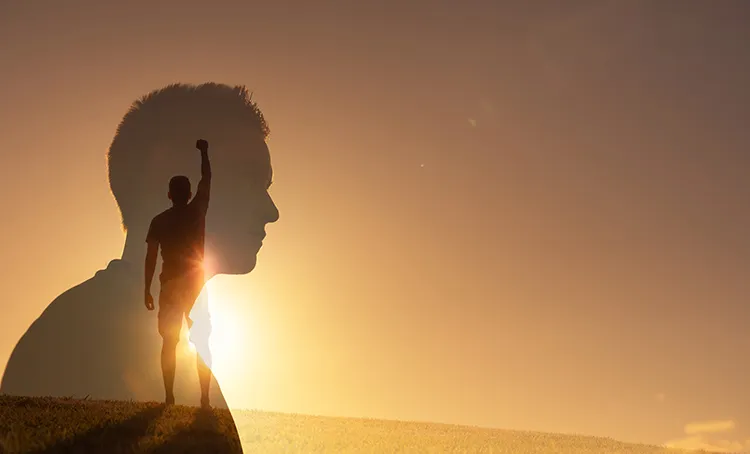
Wahoo, your hero has endured so much and has finally gotten their reward! It's over, right? They can return to their ordinary life and reap the benefits of all their hard work? Wrong! Things are never as easy as they seem, especially in a hero's journey, so why would the road back to the ordinary world be any different for your hero?
- On the road again : This is the turning point, literally. The hero turns back around, hoping to return to their normal life after receiving their reward. But thing's are never that simple, so be sure to make sure that road is blocked. Traffic cones, stoplights, maybe a supernatural villain or catastrophic natural disaster! That should do the trick. If the road back home was easy, we'd be bored, so maintain the stakes with challenges for the hero to face as they make their way back home.
- The resurrection : Congratulations, you've finally reached the climax of your story. Remember how we said the ordeal was the moment where your protagonist transformed from an ordinary character into an actual hero, this is the moment where they can prove to us that they deserve the hero title, after all. The stakes become extremely high, as the hero does not want to fail after having endured so much already. This is the final test for the hero and the final opportunity for the villain or opposing forces to defeat the hero. If the hero comes out on top, then they will finally be able to reach that light at the end of the tunnel.
- Return with the elixir : The hero has finally completed all their challenges and is able to return home with their reward. Their transformation is complete, and they've most likely become a better person because of the journey. Or, if you want to add a twist to this step, you can always have the hero fail to return without they set out to receive, but you better be prepared to write a sequel and a whole other journey!
Following the template
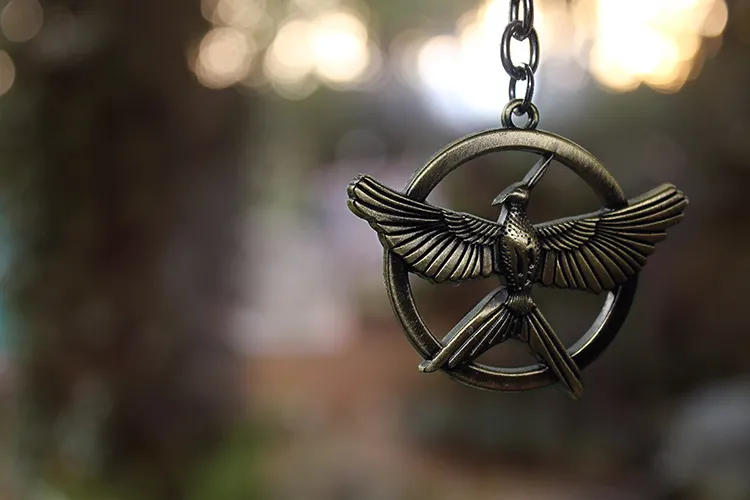
Since we mentioned The Hunger Games at the very beginning, let's use Katniss Everdeen and her hero's journey as a model for this template.
- The ordinary world : Katniss Everdeen is introduced as a citizen on District 12, a poor mining district. She spends her days hunting in the woods to provide food for her family.
- The call to action : Every year, a reaping takes place where a male and female tribute from each district is randomly chosen to take place in the Hunger Games, a fight to the death. During the reaping, Katniss' sister Primrose is selected, so Katniss volunteers to take her place as the female tribute from District 12.
- Refusal of the call : As we mentioned, you may not include all 12 steps of the hero's journey in your own story. Katniss does not actually refuse the call, as she volunteered herself to save her sister. A refusal of the call is slightly seen in Peeta, Katniss' fellow tribute, as he is visibly nervous and shaken up. The nature of this story makes it so that a refusal is impossible.
- Meeting the mentor : Katniss meets Haymitch Abernathy, a previous Hunger Games victor from her District. He is her literal mentor and is meant to teach her how to make allies, get sponsors, and survive in the arena. She also finds a mentor in Cinna, the person in charge of her appearance for promotions.
- Crossing the threshold : Katniss is whisked out of District 12 and on the train to the gaudy, wealthy Capitol.
- Introduction to tests, friends, and foe : Katniss must attempt to learn who to trust while also earning sponsors and impressing the Game Makers. Katniss makes a reluctant alliance with Peeta and admires Rue from District 11. During training, it is evident that the Careers (tributes from the wealthier districts) are enemies.
- Approaching the innermost cave : Katniss enters the physical arena.
- The ordeal : The arena is full of challenges: tracker jackers, mutant wolves, poisonous berries, and other tributes trying to survive. The games themselves are the whole ordeal.
- The reward : Katniss and Peeta are the last tributes standing.
- On the road again : Although Katniss and Peeta have survived, there can only be one winner, and the Capitol wants to force them to select who lives and who dies.
- The resurrection : Katniss' bold attempt at a mutual suicide leads to both of them being allowed to live as victors, lest they become martyrs in front of the whole country.
- Return with the elixir : Katniss and Peeta return to District 12 as victors, allowing them to live lives of wealth and luxury. If you've read the books, you'll know this is nowhere near the end of Katniss' journey.
Reaping the rewards
If you've managed to check off all 12 steps on our hero's journey checklist, then you've got yourself an awesome hero's journey. If you're just starting out on your own journey of writing for a hero, then be sure to follow this template for maximum results. Be the hero in your own journey and remember to never give up as you face those roadblocks and challenges while buckling down and writing a story of your own!
Header photo by Zoltan Tasi .
Related Posts
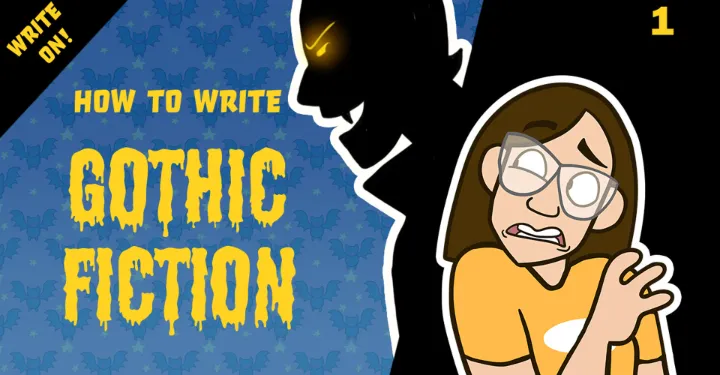
How to Write Gothic Horror That Will Forever Haunt Your Readers

8 Ways a Scene List Can Make Writing Your Novel Easier
- Book Writing Advice
- All Blog Posts
- Writing Advice
- Academic Writing Advice
- Admissions Writing Advice
- Short Story Advice
- Employment Writing Advice
- Business Writing Advice
- Web Content Advice
- Article Writing Advice
- Magazine Writing Advice
- Grammar Advice
- Dialect Advice
- Editing Advice
- Freelance Advice
- Legal Writing Advice
- Poetry Advice
- Graphic Design Advice
- Logo Design Advice
- Translation Advice
- Blog Reviews
- Short Story Award Winners
- Scholarship Winners

Professional book editing services you can trust
- +1 (866) 860-7009
Using the Hero’s Journey in Your Sales Pitch
- November 27, 2023
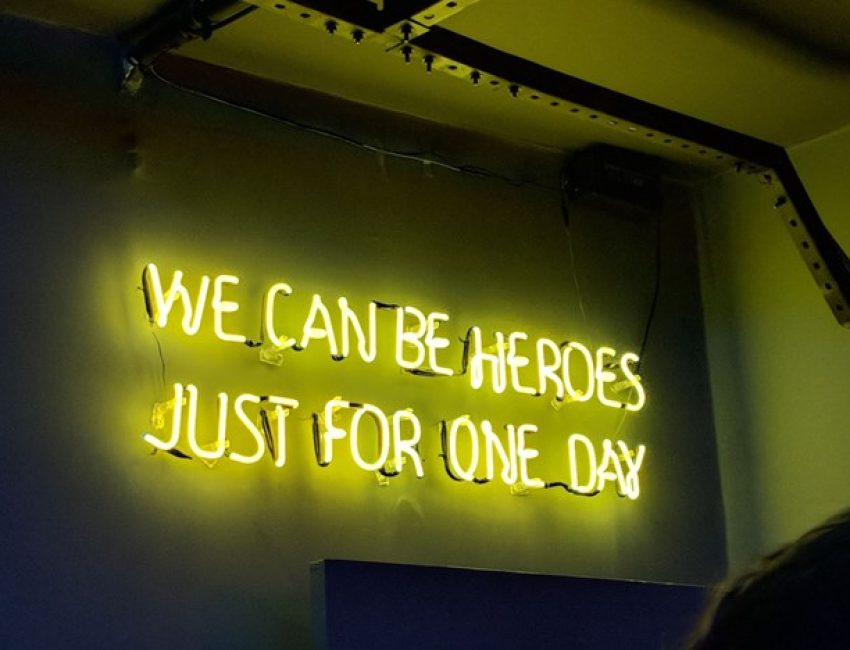
Share this Article
Storytelling is the best way to convey ideas and emotions, both of which you need to hook your target audience. If your sales pitch doesn’t tell a story, you’re likely not going to have many bites. But storytelling has existed in our society for far longer than sales. Authors, scriptwriters, video game developers, and other creatives use a number of tools and techniques to tell a good story.
One of the most popular is the Hero’s Journey, the idea that every story follows the same essential trajectory and beats. The Hero’s Journey is also something you can use in your sales pitch.
What Is the Hero’s Journey?
Star Wars. The Lord of the Rings. The Hunger Games. Even most rom-coms that you see. What do they have in common? It’s usually the Hero’s Journey. This outline includes all the typical beats that make a universal story people can relate to. These beats include:
- The Call to Adventure – The initial issue that opens the door to change in the hero’s life
- Refusal of the Call – The hero’s initial reluctance to answer the call
- Crossing the Threshold – The hero embarking on their journey for the first time
- Point of No Return – The hero’s life is changed, unable to go back
- The Road of Trials – All the challenges the hero finds along the way
- Making Allies – The people who help the hero on their quest
- Gaining Skills – New skills and accomplishments that help the hero on their journey
- The Climactic Battle – The hero faces their foe or uses all the skills and allies they’ve gained along the way to accomplish their goal
- Returning Home – The hero returns home triumphant to live out their days in peace.
How To Use the Hero’s Journey In Your Sales Pitch
Now that you understand these universal steps in most stories let’s discuss how you can include them in your sales pitch:
Keep It Simple
The list of steps above is an abbreviated version of the Hero’s Journey. However, for your sales pitch, you may want to condense those steps even further. A good sales pitch should be under two minutes. Don’t get so lost in the details of a good narrative that you forget actually to describe your product and what it does. Try to stick to the important points of the hero’s journey, the points that will stand out the most.
Make the Customer the Hero
Your company should never be the “hero” in the story. To position yourself as the hero is to position the customer as your ally — your sidekick, essentially. Instead, you want to frame the customer as the hero. Your company is their ally, the tool they need to defeat the antagonist or the wise mentor. Your company is Gandalf or Yoda, not Frodo or Luke Skywalker. Better yet, your company is the sword that King Arthur pulls from the stone in order to vanquish his foes.
Make Your Company Indispensable
You might not be the hero, but no hero goes through their journey alone. Make it clear in your sales pitch that your product or service is what’s necessary for the hero to accomplish their goal and defeat the antagonist. Make the hero excited about teaming up with you, and about the results that follow. When you get to that happy ending, make sure it’s clear that it wouldn’t have been possible without your company’s help.
Set Up a Strong Antagonist
Every story needs a villain. What is your customer’s antagonist? What problem is upsetting their daily routine and making it difficult to live peacefully? If your product offers some form of pain relief, maybe the villain is chronic pain. If you offer a convenient cleaning product, it might be their old cleaning products. Let your story show how much this antagonist is hurting your hero and why it needs to be vanquished.
Give It a Happy Ending
Not every story has a happy ending. In the story of Orpheus and Eurydice, Orpheus fails at the last minute by turning around and looking for Eurydice, thus condemning her to the Underworld. Other stories may have the hero vanquish the foe but return home shell-shocked after everything they saw and experienced.
But a tragic ending is not likely to sell your product. Your story needs an indisputably happy ending. The hero returns home triumphantly, saving the day. The antagonist is gone forever, or if they’re not gone forever, they’re clearly no match for the hero. This happy ending is what you’ll ultimately need to sell the product.
More To Explore
Ready to generate more leads for your business, click on the button below to book a free consultation.

Upcision ~ Sales Qualified Lead Generation Services
Follow & like us.
Miami, FL. 33131 , US
Phone: (866) 860-7009
Chase Matthew: The Journey From Cruising Jason Aldean's Bar In A Truck Bed To Touring With His Hero

(Photo by John Shearer/Getty Images for CMT)
Chase Matthew 's life has played out in scenes as if he were starring in an after-school special about perseverance, chasing dreams and redemption.
A Nashville-area native, Matthew grew up in a family of preachers who would have been thrilled had he fallen in line behind them. But he made poor choices as a teen. Things got worse for Matthew when his best friend was murdered. He dropped out of school, dabbled in rap music, developed a drug problem and was homeless by the time he was 19 years old.
About eight years later, Matthew has accumulated 930 million streams, is signed to a major label record deal at Warner Music Nashville, was named "One to Watch" by HITS, is a member of MusicRow's Next Big Thing Class of 2024 and is part of Opry Nextstage Class of 2024. He released his sophomore album, the 25-song strong "Come Get Your Memory" in 2023. The collection is home to his current Top 20 single "Love You Again," and Matthew recently released his new six-song EP "We All Grow Up." He just extended his headlining tour and is about to tour with Jason Aldean and Luke Bryan.
"Because of my background, I just can't even believe I'm getting these opportunities," Matthew said.
It's a big jump for the 26 year old who remembers wearing a stuffed panda head as a teenager, climbing in a truck bed and cruising Lower Broadway directly in front of the buildings that now house Aldean's bar and restaurant and Bryan's 32 Bridge.
"It was one of the big heads like you'd see Chuck E. Cheese," he recalls, laughing. "We were riding down Broadway, and I was vibing in a panda head. Everyone was pointing and taking pictures of me as a panda. It was so funny!
Matthew and his friends weren't old enough to get into bars so he says they wanted to "raise Hell in our straight pipe trucks."
"It was fun, for sure," he says. "Now we're on signs in front of those buildings. It's kinda crazy."
Last week, he drove by to take pictures of his name on the sign in front of Aldean's bar.
Aldean's Highway Desperado Tour launches in May with Matthew as support along with Lauren Alaina, Hailey Whitters, Austin Snell and DJ Silver. Matthew called the tour opportunity "a dream come true."
It's a far cry from the truck bed – or the young 20-something in jeans and a t-shirt who ambled into ONErpm in 2021 with his independent record label heads from Holler Boy Records to solidify a collaborative business deal. Matthew had 65,000 followers on social media, about 4 million streams and far less than 1 million views on YouTube. Independent country artist Ryan Upchurch fronted Holler Boy Records, and Upchurch swaggered to the couch boasting about his fast cars and exploits with women. When Upchurch's stories wound down, the men posed for a contract signing photo and Matthew's six-song EP, "County Line," came out later that month.
One year later, "County Line" became Matthew's first gold record. His partnership with Warner Music Nashville was announced a few weeks later. By that time, the singer had collected 360 million streams.
"Chase's mix of rebellion and reverence is what drew us to him," Cris Lacy, co-president of Warner Music Nashville, said at the time. "The impact he has on his mass of loyal fans comes from music and messages that are unapologetically redemptive and put him squarely in the center of this format's most authentic storytellers."
Matthew co-wrote four of the six songs on his "We All Grow Up" and 18 of the 25 songs on "Come Get Your Memory."
He was inspired to write "We All Grow Up' when he bought his first house. Matthew wanted to put a studio in the home immediately and quickly started renovations. He said it is "an old house built in the '90s" and explains it even had carpet in the bathrooms. He left the carpet intact to focus on the music studio, and as soon as his creative space was half finished, Matthew co-wrote "We All Grow Up."
"It talks about how some of us went left, some of us went right, some of us went north and some of us definitely went south," he said. "Life is what you make of it. And I believe that what you take, the things you do growing up, you take with you, and it makes you who you are today. That's what that song's about."
Matthew co-wrote "Dirt Road Does" with Brock Berryhill, Jaxson Free, Dylan Marlowe and Taylor Phillips. They were supposed to write a different song that day, but Phillips called and shared the idea. The men pounced on it immediately.
"I was like, 'Oh my God, we got to write it right now,'" Matthew said. "He pulls up, and in 20 minutes, we wrote the whole song."
Matthew even thinks Aldean had it on hold for a while but admits he "might be wrong about that."
He wrote "Makin' You Miss Me" with Alex Maxwell on Matthew's tour bus and penned "Darlin'" with Maxwell, Hunter Huff and Ciaran Wilkie when they were in a casino in the Midwest.
He co-wrote his current Top 20 hit, "Love You Again," with Phillips and Casey Brown. Matthew describes the song as "provocative" and explains that it "talks about something we've all done." But he doesn't want to say the word.
"My mama wouldn't like me to do that," he said.
Regardless, he believes it "feels like an anthem.
"The fans are definitely finding their favorite lines in the song to just sing as loud as they can," he said. "Everybody leaves remembering that song. It's definitely a party."
Matthew is the man who never forgets a name and is always quick with a hug and a thank you. He has an easy, wide smile and the determination of a young person who hopes he has already lived the hardest days of his life. Before this tour, he always told people Aldean was his dream collaboration. He said that to get the call that he was going to tour with Aldean was more than he could process.
"You find yourself in a daze sometimes in your day-to-day life," Matthew said. "And then you have to snap out and look around and realize what you're doing, where you're at. I'm in a daze all the time ever since, and it feels like a dream. It's definitely a good feeling, and the closer we get to it, the more the butterflies start churning up in my stomach."
Latest News

Trace Adkins, Bell Biv DeVoe and Wolfgang Van Halen To Be Featured On 'Behind The Music'
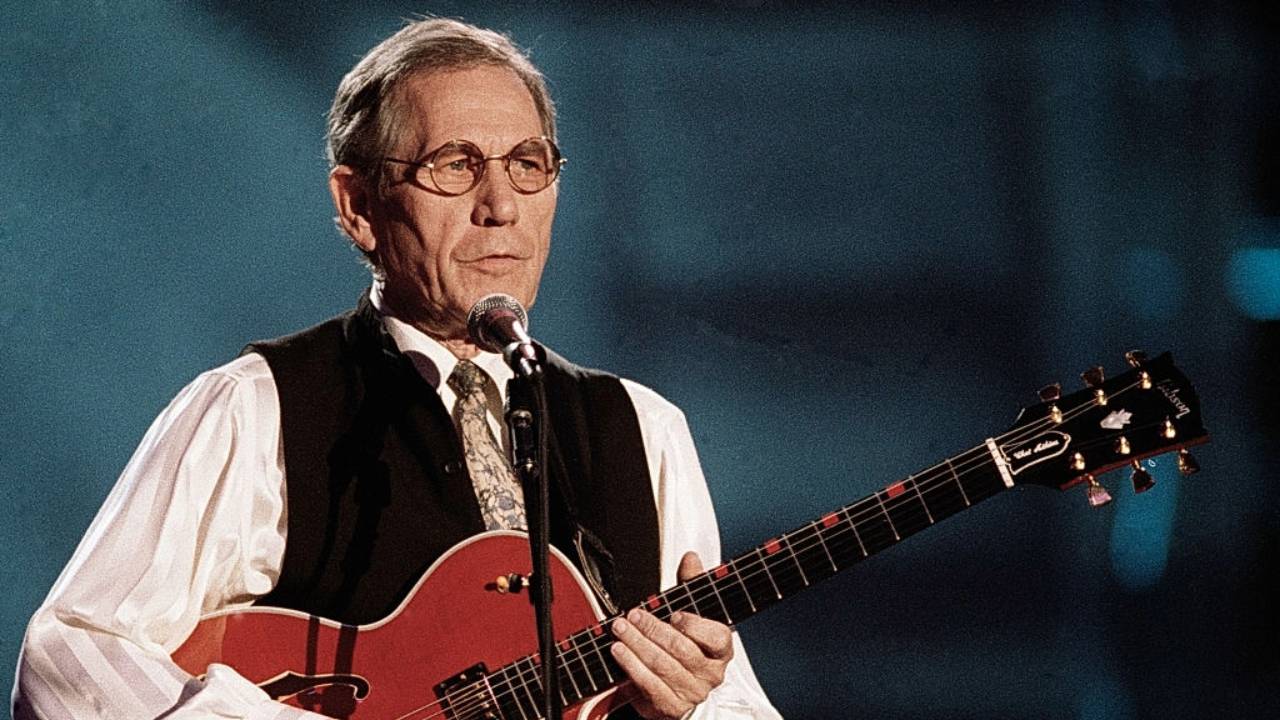
Tune In: “WE STILL CAN’T SAY GOOD BYE – “The Making of A Musicians’ Tribute to Chet Atkins and his Legacy Remembered" Debuts Tonight

CMT Roundup: New Music From Emily Ann Roberts, HARDY, Darryl Worley and More
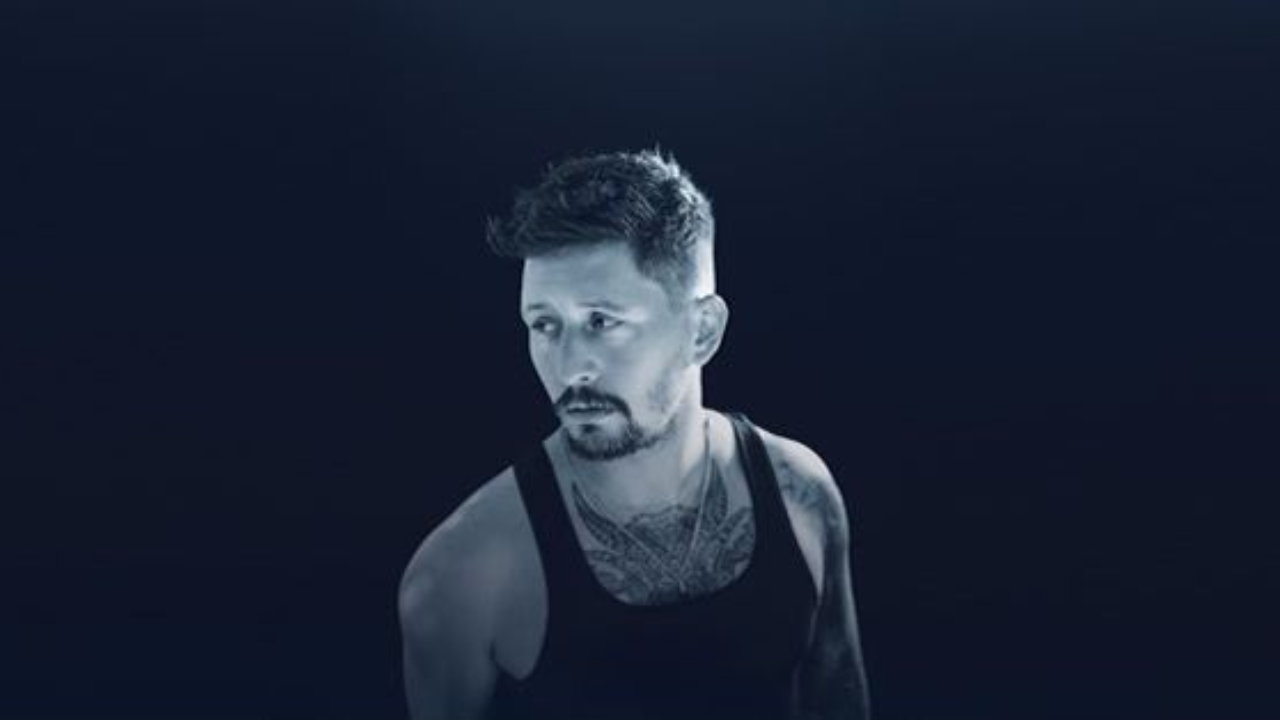
CMT Premiere: Chris Housman Hopes LBGTQ+ Community Feels Seen After Watching "Guilty As Sin" Video

CMT Premiere: Harper Grace Offers Steadfast Relationship Advice, "Break It Like A Man"

- Newsletters
Blacksburg Virginia Teacher of the Year sets her students up for success after high school
A trades teacher in blacksburg has won the regional virginia teacher of the year.
Thomas Mundy , Multimedia Journalist
BLACKSBURG, Va. – Candace Carrier has been teaching for over 20 years, and this year, she is the Region 6 Virginia Teacher of the Year.
“Having time to reflect, it has been a really surreal experience,” said Carrier. “As teachers, we don’t show up to work every day thinking, ‘Today is going to be the day I win a really awesome prize.’”
Have the morning's biggest stories arrive in your inbox every day at noon
But on April 18, she was surprised at the school with her award.
“It’s really humbling,” Carrier said.
Carrier is the welding and small engines teacher at Blacksburg High School.
In her classes, she teaches kids the foundation of what could be future careers.
“I really enjoy being a place that is home for all kids,” said Carrier. “[In the] welding classes, I get a mix of both. Kids who want to leave high school and go weld on the pipeline, and kids who want to leave high school and go do engineering at Virginia Tech.”
She also said these classes take what they are learning in the classroom, and apply it to real-world scenarios.
“These kids are learning geometry upstairs, they come down here, we talk about fabricating, and we put the geometry to work,” Carrier said.
I talked to a student in the Intro to Welding class, and he said these classes are what he loves about school.
“Using my hands for 80 minutes straight of the class period, I just think that’s just a dream of my mine,” said Luke Prevette, a sophomore at Blacksburg High School. “ I mean I wake up every day, getting ready to work.”
He said Carrier is a big reason the class is so enjoyable.
“Her wittiness, she’s just so fun, she makes this class really enjoyable,” Prevette said.
For Carrier, she said the process will stay the same as this year ends, and the next year begins.
“Every year the goal is: do what is best for kids,” Carrier said.
Copyright 2024 by WSLS 10 - All rights reserved.
About the Author
Thomas mundy.
Thomas grew up right here in Roanoke and is a graduate of Salem High School and Virginia Tech.
Click here to take a moment and familiarize yourself with our Community Guidelines.
Recommended Videos
‘Heroes’ Reboot in Development From Creator Tim Kring
By Michaela Zee
Michaela Zee
- Luke Kleintank to Exit ‘FBI: International’ After Three Seasons 4 hours ago
- Universal Studios Hollywood Tram Crashes, Leaving 15 Injured 2 days ago
- Netflix Acquires ‘Calabasas’ Series From Kim Kardashian, Emma Roberts and ‘Pretty Little Liars’ Creator I. Marlene King 3 days ago

A new “ Heroes ” reboot series is in development from creator Tim Kring, Variety has confirmed.
The reboot, titled “Heroes: Eclipsed,” is set years after the events of the original superhero series, as new evolved humans are discovering their powers. Kring is executive producing “Heroes: Eclipsed” with his manager, Mosaic’s Jordan Cerf. Casting has yet to be announced.
Popular on Variety
“I’ve always felt that the brand was elastic enough and a broad enough premise,” Kring said. “It’s a show about ordinary people with extraordinary powers. It’s an indeterminate [amount of] people around the world and then they have to save the world. I feel confident that we can find more story to tell with some returning characters and new ones.”
Kring’s most recent television project was the 2019 drama series “Treadstone.” Set in the world of Jason Bourne, the series starred Jeremy Irvine, Taracy Ifeachor and Omar Metwally. Kring’s other writing credits include the series “Touch,” “Dig” and “Crossing Jordan.”
Deadline was first to report the “Heroes: Eclipsed” news.
More From Our Brands
Maya hawke details toxic love in new single, ‘hang in there’, charlie puth relists his rex lotery-designed home for $14 million, ftc noncompete ban looms over sports execs, coaches, nil, be tough on dirt but gentle on your body with the best soaps for sensitive skin, fbi recap: is the team about to lose maggie, verify it's you, please log in.
“We played a bunch of really awkward shows with both of us staring at our tuners the whole time and then we broke up for 15 years”: Math-rock pioneer Mike Kinsella on his unlikely journey to cult guitar hero status with American Football
As his latest Owen album looms, the guitarist reflects on how he discovered the tunings that made him so influential, doing it all without pedals and why he can only play Teles

Attaining cult status isn’t something an artist can plan for. It’s certainly not something American Football’s Mike Kinsella had on his card when he and his bandmates – Steve Holmes and Steve Lamos – went their separate ways right after recording their self-titled debut back in 1999.
Kinsella began writing and releasing music under the name of Owen, while pockets of adoration for the American Football album proliferated across the US and beyond. For those in the know, they became a sonic reference point of almost Biblical importance as twinkly guitar tones, alternate tunings and uncommon time signatures boomed in the midwest emo, post-rock and math-rock scenes of the mid-2000s.
Now, 25 years after the album’s release and a decade into American Football’s reunion, it still tickles Kinsella to think that the music he and his college buddies cooked up has endured.
“We’re nothing but lucky, and we all still won’t accept that this could be a full-time band,” he jokes, speaking from his home in Chicago. “We’re like, ‘No, that was just a band we were in at college!’”
As he returns with his 11th Owen record, The Falls Of Sioux , we take a deep dive into the two sides of Kinsella’s musicality: the acerbic acoustic songsmith and the Telecaster-toting math-rock pioneer.
What were your musical goals for this new album?
“I think it was just to make myself excited or interested, which is open-ended. The last album was written going through a divorce, and it was cathartic and serious in all these different ways.
Get The Pick Newsletter
All the latest guitar news, interviews, lessons, reviews, deals and more, direct to your inbox!
“With this one, I wasn’t bound by a story or anything. It’s just a grown man trying to keep himself interested! It’s probably more varied than any other solo record because there were really no restrictions.”
![hero's journey up American Football - Never Meant [OFFICIAL MUSIC VIDEO] - YouTube](https://img.youtube.com/vi/_NfnXdXpjL0/maxresdefault.jpg)
How does your approach to guitar differ when writing for Owen?
“In the back of my head with the Owen stuff, I have to be like, ‘Okay, this is ultimately just going to be me on a stage by myself.’ So, I have to think about whether it’s interesting enough and if I’m carrying the melody or the root notes. I need to know if the song moves enough with just me.
“Whereas, with American Football, I can absolutely play a noodle that’s in 11/4 and not care, because Nate will be doing something and Steve will be doing something.”
You’ve cited Steve Reich as a big influence in your early days. What attracted you to his compositional style?
“Yeah, all of us – or me and Steve Holmes at least – were in college and we weren’t discovering pot as much as we were discovering Steve Reich. It kind of blew our minds!
“I remember being in our freshman year, before we started American Football proper, and being interested in how one thing was moving while another part was staying the same. We thought that was so cool. I mean, we were coming from a truly indie-punk DIY vibe, so everything blew our minds that wasn’t screaming!”

There’s still something quite orchestral about your solo arrangements, particularly on this new album…
“I had a lot of help with that from working with Sean Carey. His stuff is very pastoral and that’s part of why I’m a big fan, so I knew he was going to add atmosphere. It’s a little problem every time we’re throwing the layering stuff around in the studio because, again, I’m aware that it’s going to be me playing this live.”
All the standard stuff – pop music and radio shit – just bores me… I guess I’m trying to excite or challenge myself
Could you talk us through a track on The Falls of Sioux that you particularly enjoy?
“There’s one called Cursed ID . When I was in pre-production, talking to Sean and sending him demos, I thought it sounded like it could be a cool Paul Simon song. It’s kind of dainty. Then I tracked these really garbagey drum demos on my phone, just to give it a vibe, and at some point it became really janky.
“That song is also in the dumbest tuning. Usually, the whole goal with my tunings is that they’ll sound interesting or nice when strummed open. This one is totally the opposite. The B string is tuned lower than the G string, so every time I’m hitting it – in my mind – it’s the most interesting part of the song.”

What’s the magic of non-standard tunings for you?
“I don’t know what I like about open tunings, but what I have known since I was about 15 is that all the standard stuff – pop music and radio shit – just bores me. So I guess I’m trying to excite or challenge myself.
“Standard just rings so ‘coffee house’ to me and I’m well aware that, in many ways, what I do shares 99.9% of the DNA of a chimpanzee who plays in a coffee house. It’s a guy with an acoustic guitar playing sappy songs quietly while sitting down. I understand I’m doing the same thing, but I just want it to sound a little different.”
We played a bunch of really awkward shows with both of us staring at our tuners the whole time and then we broke up for 15 years
Using unconventional tunings has become relatively common practice today, but how did you first get into it in the ‘90s?
“The first time I thought of it – or even noticed it – was when I was in another band in high school, Cap’n Jazz. The guitar player, Victor Villarreal, was a total whizz and I learned from him not only the tuning thing, but also how to play with a pick and use your other fingers to do little flourishes.
“The last two songs Cap’n Jazz wrote were in FACGCE and I don’t know where he found it. The internet existed, but only for the government and Harvard! So he kind of stumbled on it and became addicted.

“My recollection is that the other guitar player quit the band, but then started another that was essentially based on that FACGCE tuning. Their sound was pop-punk, but real bright, with a bunch of ringing notes and giant chords.
“So that totally influenced me. I got into Mark Kozelek and Red House Painters and that was probably where I learned DADGAD. If I couldn’t reach a note playing that stuff or trying to write my own stuff, I’d just tune a string down even more. It took off from there.”
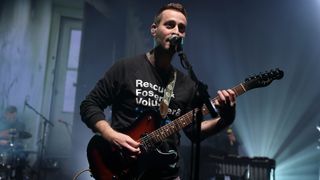
How did you and Steve Holmes figure out that using a different tuning each within the same song was a viable idea?
“I don’t know! Firstly, we had no aspirations of being a working band. We were roommates in college and we’d just spend Friday nights sitting on a couch discovering different guitar tunings and trying to get these patterns to fit.
“We were just messing around with every dumb thing and we’d figure out what the tuning was later. It just sounded cool. Then we played a bunch of really awkward shows with both of us staring at our tuners the whole time and then we broke up for 15 years!”
The gear world has evolved significantly since that first American Football record. How much of what you were using back then do you still use now?
“None of it! We were on our friends’ borrowed guitars and amps. We had no pedals. The sound of the record is cool, but there was probably a point during those 15 years off where I felt like it was a little cringe. It’s just so youthful.
Everybody made an album in high school and broke up… nobody would care if the songs weren’t kind of cool
“I bet we had one tuner that we borrowed for the recording session and that was it. There’s no bass , so to make the guitars fuller, we doubled or tripled every guitar part and that gives it this chorus.
“Now you can buy a shimmer pedal to recreate what we did, but we did it manually and I think it was just dumb luck. By doing it the stupid way, it became our own thing. Now anything you do that’s stupid and has triple guitars through a clean amp with no bass sounds like American Football.”
![hero's journey up Owen - Beaucoup [OFFICIAL MUSIC VIDEO] - YouTube](https://img.youtube.com/vi/z8RKUS5z9RU/maxresdefault.jpg)
These kinds of circumstances, as well as the breakup, have perhaps become as much part of the legend as the music itself.
“Totally! Everybody made an album in high school or college and broke up. We’re all aware of the way the myth became bigger. But what I will say is that nobody would care if the songs weren’t kind of cool.
“With the earnest youthfulness, you can tell that we were just discovering stuff. I think when kids of that age are discovering that same shit, they appreciate it. It speaks to them because they’re also interested in hearing new things.”
What gear have you acquired in the intervening 25 years and what are you using most right now?
“I can only play Telecasters. It’s kind of all I’ve ever played. I’ve tried playing a Les Paul a couple of times, just because I had to, and I did not enjoy it.
“Fender Twins are our backline every night. There’s somewhere around 3.5 and 5 on the volume where they’re clean, but they’ve got a little bit of grit and a little bit of push, and that’s my comfort zone.
![hero's journey up Owen - Virtue Misspent [OFFICIAL MUSIC VIDEO] - YouTube](https://img.youtube.com/vi/DEkS__ErGz4/maxresdefault.jpg)
“If I want to dig in, I get the grit. If I want to lay back with how hard I’m picking, it’ll blend in really nicely. I can play big or small, so I’m a fan of them.”
“Pedal-wise, the Keeley Caverns Delay Reverb and the EarthQuaker Avalanche Run are currently my favorites.”
What was your go-to acoustic for the new record?
It was always the guitar I was totally willing to lose or break – my kids used to draw on it – but now it’s kind of priceless
“I have a 1967 Martin that I only pull out once every two years to track with. That’s probably the bulk of it. It’s truly lovely. It stays in tune. It’s unbelievable. Then, my go-to traveler is like my best friend.
“In college, my roommate had an acoustic guitar that he never played and I played it every day for two years. Upon graduation, I was like, ‘I’m taking this!’ It’s a Guild. I bet at the time it was about $600 and I don’t know if it sounds good, but I’m so comfortable with it. It was always meant to be the guitar that I was totally willing to lose or break – my kids used to draw on it – but now, that one’s kind of priceless.”
![hero's journey up Owen - Hit and Run [OFFICIAL AUDIO] - YouTube](https://img.youtube.com/vi/cjp6l07_e3M/maxresdefault.jpg)
Some killer contemporary guitarists – such as Yvette Young – cite you as a major influence. How does it feel to be looked upon as a pioneer by the next generation?
“It’s amazing. She’s incredible. I remember going to Japan for the first time and the band who opened were really big fans of ours. I was already older and they were kids, but when they played, I was like, ‘Holy fuck!’ They were doing what we were doing – but they were doing it so good.
“I think I fell into it and maybe these other players fell into it and just took it to another level. It’s incredible. I watch what Yvette’s doing particularly and feel like I don’t have the brain capacity!”
- The Falls of Sioux is released on April 26 via Big Scary Monsters and it’s available for pre-order now.
Thank you for reading 5 articles this month**
Join now for unlimited access
US pricing $3.99 per month or $39.00 per year
UK pricing £2.99 per month or £29.00 per year
Europe pricing €3.49 per month or €34.00 per year
*Read 5 free articles per month without a subscription
Prices from £2.99/$3.99/€3.49

Since graduating university with a degree in English, Ellie has spent the last decade working in a variety of media, marketing and live events roles. As well as being a regular contributor to Total Guitar, MusicRadar and GuitarWorld.com, she currently heads up the marketing team of a mid-scale venue in the south-west of England. She started dabbling with guitars around the age of seven and has been borderline obsessed ever since. She has a particular fascination with alternate tunings, is forever hunting for the perfect slide for the smaller-handed guitarist, and derives a sadistic pleasure from bothering her drummer mates with a preference for “f**king wonky” time signatures.
“A lot of people don’t know cheap guitars require the same energy, and resources to make as an expensive guitar”: How this Danish guitar company is turning factory rejects into some of its finest builds
“No-one had brought an electric guitar in the church before… it caused a bit of a stir”: Patti Smith on her controversial first gig – and why rock belongs to the people
“Us guitar players in the West, we all have the same base vocabulary, the same handful of stereotypical licks. But Mdou’s music, it’s almost free of that stuff”: Mdou Moctar finds a new fan in Metallica’s Kirk Hammett
Most Popular

IMAGES
VIDEO
COMMENTS
After a contractor accidentally bumps into his mail box, Carl reacts on instinct and subconsciously bludgeons him with his cane. Soon realizing the severity of his actions Carl finds himself in court being sued by the contracting company. The court sentences Carl to live out the rest of his life in a retirement home.
Ordeal. When Carl, Russell, Dug, and Kevin run away from Muntz, the fallen explorer's dog pack is hot on their trail. Carl and his posse outrun the dogs, only to have Muntz himself track them down, capture Kevin, and set Carl's beloved house on fire. Still, Carl and Russell survive. Sometimes it pays not to be a giant, exotic bird.
Illustration of the hero's journey. In narratology and comparative mythology, the hero's journey, also known as the monomyth, is the common template of stories that involve a hero who goes on an adventure, is victorious in a decisive crisis, and comes home changed or transformed.. Earlier figures had proposed similar concepts, including psychoanalyst Otto Rank and amateur anthropologist Lord ...
Summary By tying thousands of balloons to his house Carl sets out to fulfill a life long dream of discovering paradise falls The Return Initiation Departure The Hero's Journey in the Movie UP By: Hunter, Skyler, and Lynzi Carl, Russell, and Doug take the aircraft Charles Muntz
Learn more: Hero's Journey Steps #9 and 10: The Reward and the Road Back. Step 11: Resurrection. Everything in the Hero's Journey leads up to this climactic step: the Resurrection. In this scene, the Hero must face the story's evil in an ultimate way, often in the actual final battle (after the fake-out ending in Step 10).
Campbell described more than a dozen key elements of a Hero's Journey, seven of which Rogers explored in his research: protagonist, shift, quest, allies, challenge, transformation, and legacy ...
The Hero's Journey, also known as the monomyth, is a story structure where a hero goes on a quest or adventure to achieve a goal, and has to overcome obstacles and fears, before ultimately returning home transformed. ... It's up to this opening leg to set the stage, introducing the Hero to readers. Importantly, it lets readers identify with ...
The hero's journey ends where it begins, back at the beginning after a quest of epic proportions. The 12 steps are separated into three acts: ... Everything the hero has fought for up to this point, all the lessons learned along the journey, all the hidden potentials actualized, will have to be utilized to survive this supreme ordeal, for the ...
The Hero's Journey was invented by Campbell in his seminal 1949 work, The Hero with a Thousand Faces, where he introduces the concept of the "monomyth." A comparative mythologist by trade, Campbell studied myths from cultures around the world and identified a common pattern in their narratives.
In another story, the hero might wake up to discover their journey was only a dream—this is what happens to Dorothy in the film The Wizard of Oz. Return: Crossing the Return Threshold. If the hero does return, then there is a moment when the hero crosses the same boundary they had to cross back in the departure phase, the boundary between the ...
The plot structure of the Hero's Journey is made up of 17 steps, all of which can be excellent guideposts for you when plotting your novel and planning your chapters. To simplify the 17 steps of the Hero's Journey, there are 3 main acts of the story: The Departure, The Initiation, and The Return. Here's an overview of all of the 17 steps ...
The Hero's Journey is a common story structure for modeling both plot points and character development. A protagonist embarks on an adventure into the unknown. They learn lessons, overcome adversity, defeat evil, and return home transformed. Joseph Campbell, a scholar of literature, popularized the monomyth in his influential work The Hero ...
Origins of the Hero's Journey. The concept of the Hero's Journey can be traced back to the work of renowned mythologist Joseph Campbell.In his seminal book, The Hero with a Thousand Faces (1949), Campbell examined myths and stories from various cultures around the world and identified a common narrative pattern that he dubbed the "monomyth." According to Campbell, the monomyth is a universal ...
3. Refusal of the Call: The hero initially refuses the adventure because of hesitation, fears, insecurity, or any other number of issues. 4. Meeting the Mentor: The hero encounters a mentor that can give them advice, wisdom, information, or items that ready them for the journey ahead. 5.
The Hero's Journey is a narrative structure that has been a fundamental part of storytelling for centuries, and it continues to be a powerful tool in filmmaking. One of my favorite screenwriting books is ' The Writer's Journey ', which details Joseph Campbell's journey through storytelling and takes the writer's POV.
Popularized by mythologist Joseph Campbell in his book The Hero With a Thousand Faces, the Hero's Journey is a story structure that has been used to tell exciting and captivating stories for centuries.Campbell, a literature professor, found that this was a common mythic structure. It's widely known by the moniker the Hero's Journey, but this name didn't come around until well after ...
The Hero's journey in Pixar's UP by Juan Paz on Prezi. Blog. April 13, 2024. How to create a great thesis defense presentation: everything you need to know. April 12, 2024. The evolution of work with AI-powered future tools. April 4, 2024. From PowerPoint to Prezi: How Fernando Rych elevated his presentation pitch.
To put your hero at a disadvantage, remove one of life's most common advantages: A solid set of parents, traditionally one's first allies. Doing this will instill your story with readymade conflict from page one. 3. A Principled but Boring Life. Many elements of the Ordinary World are obvious.
The very first hero's journey arc was created by Joseph Campbell in 1949. It contained the following 17 steps: The Call to Adventure: The hero receives a call or a reason to go on a journey. Refusal of the Call: The hero does not accept the quest. They worry about their own abilities or fear the journey itself.
The 3 Hero's Journey Stages. 1. The Departure (Separation) The hero is compelled to leave her ordinary world. She may have misgivings about this compulsion, and this is where a mentor may come to encourage and guide her. Example: Katniss Everdeen is a devoted sister, daughter, and friend.
The hero's journey is commonly accepted to have 12 main steps. To make it even simpler on you, these steps can actually be broken down into three stages: the departure, the initiation, and the return. The hero's journey is usually defined as having three stages subdivided into 12 steps total.
Make Your Company Indispensable. You might not be the hero, but no hero goes through their journey alone. Make it clear in your sales pitch that your product or service is what's necessary for the hero to accomplish their goal and defeat the antagonist. Make the hero excited about teaming up with you, and about the results that follow.
The collection is home to his current Top 20 single "Love You Again," and Matthew recently released his new six-song EP "We All Grow Up." He just extended his headlining tour and is about to tour ...
BLACKSBURG, Va. - Candace Carrier has been teaching for over 20 years, and this year, she is the Region 6 Virginia Teacher of the Year. "Having time to reflect, it has been a really surreal ...
A new "Heroes" reboot series is in development from creator Tim Kring, Variety has confirmed. The reboot, titled "Heroes: Eclipsed," is set years after the events of the original superhero ...
"We played a bunch of really awkward shows with both of us staring at our tuners the whole time and then we broke up for 15 years": Math-rock pioneer Mike Kinsella on his unlikely journey to cult guitar hero status with American Football. By Ellie Rogers. published 23 April 2024.